New Mars Forums
You are not logged in.
- Topics: Active | Unanswered
Announcement
#176 Re: Terraformation » Terraforming the Jovian moons... » 2025-05-13 13:56:49
This is interesting.
https://arxiv.org/abs/2504.04177
Charged particles from Jupiter's magnetosphere decompose ices on the surfaces of its inner satellites into hydrogen and oxygen. The hydrogen escapes rapidly. But someof the oxygen remains trapped within the ice. After 4.5 billion years of charged particle irradiation, there could be quite a lot trapped within the crust. It could be released by slowly warming the moon.
#177 Re: Meta New Mars » Calliban Postings including links to notable contributions » 2025-05-13 02:26:03
Hello Tom,
From memory, the reason I suggested using plasma (from an electric arc) is that hydrogen, helium and all light volatile elements are rare on the moon. So we don't have an abundant propellant that we can use to drive a cannon. The dV needed is modest, about 2.4km/s. A hydrogen-oxygen chemical propellant would do the job. But water is rare on the moon.
There are some specific problems with using plasma as a gun propellant. The power required is huge. Additionally, plasma particles will tend to attack the inner surface of the barrel, eroding it. If the barrel is long enough, plasma pressure can be reduced and there is potential to contain the plasma using magnetic fields, reducing its impact on the barrel.
#178 Re: Exploration to Settlement Creation » Cob, Adobe, Rammed Soil and Dry Stone as Construction Materials. » 2025-05-10 17:34:36
This article explains the science behind corbelling.
https://thestonetrust.org/master-class- … orbelling/
This is an ancient technique that allows structures to be made entirely from dry stone without mortar. This allows construction of walls, arches and the beehive stone houses built around the world and shown in the article and videos below.
https://youtu.be/OzeFlHGEM8I
https://youtu.be/mq0paONxodc
https://projects.mcah.columbia.edu/medi … sconst.htm
This technique was one of mankind's first construction techniques. It allows weather resistant structures to be made using nothing other than loose rocks, sorted and lightly processed to achieve the right shape.
This technique may turn out to be useful in construction on Mars. We face the difficulty that early structures must be imported from Earth at great expense, or made by processing local materials. Eventually, we will build structures from steel, glass and high strength materials like basalt fibre. But making these materials requires a great deal of equipment and energy, both of which will be expensive on Mars in the early days. Whilst clay is everywhere on Mars, bricks require both water and energy for baking. What if instead, we could use the abundant rubble that covers the Martian surface? We can build corballed structures that are covered in a few metres of regolith to keep the air in. This allows habitable structures to be made using only lightly processed Martian materials. The required rock grades can be obtained by sieving excavated material, which is then seperated into coarse rocks suitable for corbelling and everything else, which is heaped over the structures to provide overburden.
Historically, corbelled structures have tended to be quite small. The rocks used are irregular and are held together by gravity and friction without mortar. Large structures are more likely to become unstable, because point loads between rocks can crush the stone, resulting in slip and instability. However, if stones can be shaped by a limited amount of cutting, then much larger structures can be built.
On Mars, we would likely start by building small structures, which can be connected by corbelled tunnels built between them. This allows a base to grow incrementally. When the corbelled structures are covered with dirt to a depth of several metres, there is sufficient back pressure to allow addition of floors using timbrel vaulting. This involves glueing together tiles or thin stones with a mortar. This mortar could be made from Martian fine regolith with water added. Once the thin, curved tile vault is in place, we can create floors by covering the vault with fine, dry regolith, which is then compacted down to produce a flat floor.
#179 Re: Not So Free Chat » Oil, Peak Oil, etc. » 2025-05-09 09:47:46
US tight oil tends to be light (low density) and low viscosity. It would be impossible to recover from fractured rock were that not the case. But US refineries are mostly decades old and were built to process oils with a specific range of density, viscosity and volumetric heat capacity. So tight oil is usually blended with heavier oils to produce a syncrude with the right properties for the refinery. It is possible to build refineries that could process tight oil or heavy oil without modification. But it takes a lot of capital and a lot of time to build a refinery. No one invests several billion dollars on a whim.
I have read articles that say that tight oil has insufficient heavy hydrocarbons to make the right balance of petrol, diesel and asphalt to meet market demands. But I have see contradictory information on this claim. I don't know how much truth is in it.
#180 Re: Not So Free Chat » Oil, Peak Oil, etc. » 2025-05-06 17:09:23
The problem that oil producers face now is proffitability. The economy is a thermodynamic machine that uses energy to rework matter into products and services that we consume. It follows that wealth is a result of energy reworking matter. This places an upper limit on what the economy can afford to pay for energy, given that x units of energy are needed to create y units of wealth.
The problem is that over time, depletion has pushed humanity to extract oil and gas from poorer resources that are more expensive to extract. There is an increasing disconnect between what consumers can afford to pay and what producers need to charge to stay proffitable. Add to this stagnating demand due to demographic ageing and it isn't hard to see why producers would want to push each other out of business to keep prices high. But high prices are unstable, because there are limits to what consumers can pay without pushing the economy into recession. This is how peak oil plays out in real life.
#181 Re: Not So Free Chat » When Science climate change becomes perverted by Politics. » 2025-05-06 16:45:30
Solar PV generating costs of $0.02/kWh were a result of very cheap modules coming out of China before COVID. These were manufactured using stranded coal in western Chinese provinces and the Chinese used slave labour. The investments in polysilicon plants were made with zero interest loans by the Chinese government, who wanted to establish dominance in the industry.
It made economic sense for the Chinese to do this. Their eastern province coal reserves are heavily depleted and yet this is where electricity demand is highest. The west of the country is rich in coal, which can be mined using slave Uiyger labour. But coal cannot be transported economically over thousands of miles of land, even by rail. So the Chinese turned the coal into PV panels that can be shipped by rail. Solar PV allows eastern provinces to generate power with less coal, postponing a supply crunch.
So in summary, they:
(1) Had access to free money;
(2) Used slave labour to mine coal for powerplants at the minehead, generating the cheapest electricity in the world.
(3) Used cheap electricity to make polysilicon more cheaply than anyone else in the world.
(4) Used slave labour to assemble panels.
(5) Shipped them in bulk.
At the western end, renewable energy projects were funded by ESG initiatives at very low interest rates. When you put all of those things together, it is no surprise that PV projects were able to generate at gateprices of $0.02/kWh before COVID. But that time is over. Both the US and EU have applied tariffs against Chinese panels due to human rights concerns. Interest rates have returnedto their historical normal range. If we eventually have to produce PV in western countries with high electricity prices, it is unlikely they will be useful for anything beyond niche applications.
The low system EROI of PV powerplants in high lattitude countries mean that PV power should be thought of as a way of storing coal energy, rather than being an energy source. This is even more the case if we must invest heavily in energy storage and grid upgrades. This is clearly not a sustainable solution. Wind and solar thermal power may be another matter.
#182 Re: Interplanetary transportation » Water Thrusters Steam vs Ionize and accelerate ions » 2025-04-29 13:07:52
The OTP-2 cubesat is now in orbit.
https://www.nextbigfuture.com/2025/04/t … otp-2.html
The satellite carries two propulsion systems that it is testing. One is an ion thruster that uses water as propellent. The other is a propellantless 'quantum drive'. The second has obviously gained the most publicity. They havn't activated it yet. The water ion thruster appears to be working. Both technologies are of interest here.
#183 Re: Not So Free Chat » Politics » 2025-04-29 04:48:15
Canadian Liberal Party wins election.
https://www.zerohedge.com/political/can … r-expected
If Trump had been willing to wait 10 weeks before unleashing tariffs on Canada, there would probably now be a conservative government in power north of the border. A government that would have seen things his way and would have worked with him. By rushing things the way he did, he has cemented globalist control of Canada for another five years. The damage they will inflict upon the country is beyond calculation. This is a failure of strategic planning on the part of the Trump administration.
#184 Re: Science, Technology, and Astronomy » Curvature of Spacetime - Artificial Gravity » 2025-04-18 16:54:29
The required pressure could be provided by gravitational force or a strong pressure vessel. Either way, a high pressure would be essential to making this type of fusion work. This is actually a form of inertial confinement, in which we are relying upon pressure to reduce the mean free path of the ions to a small fraction of the core diameter. In this way, the power generated by fusion balances the power lost from the reaction zone by radiation and conduction.
In the sun, gravity provides the confinement. In our modified concept, we are using a solid pressure vessel. If the mean free path of ions is small compared to vessel radius, then a temperature gradient can be established that will prevent the vessel from being subject to intolerably high temperature.
Although I have not calculated its realistic size, I suspect that this concept will only work if the reactor is large. At 100 million Kelvin, the density of deuterium plasma is ~0.2mg/m3. Even at 1000 bar pressure, it would be 0.2g/m3.
#185 Re: Science, Technology, and Astronomy » Gravity Confinement Fusion » 2025-04-17 17:17:37
I do not know if the suggested method of fusion will work. Using gravitally induced pressure is certainly one way of sustaining the pressure needed. Another might be a prestressed cast iron segmented pressure vessel. This would be reinforced by carbon or glass fibres.
#186 Re: Exploration to Settlement Creation » Cob, Adobe, Rammed Soil and Dry Stone as Construction Materials. » 2025-04-17 17:13:41
Almost every image that I have seen of the Martian surface shows a landscape littered with rocks. Some of these rocks are pebble sized, whilst others are car sized. Rocks in this size range make up a large fraction of the mass distribution of regolith. With this in mind, I wonder if we could develop a machine that automatically scans individual rocks and then saws them into a number of predetermined shapes and sizes? Basalt blocks will be stronger than bricks that we can produce from clay. If thin stone tiles can be produced, then timbrel vaulting can be used to build multistorey structures.
#187 Re: Exploration to Settlement Creation » Habitat Design on Mars » 2025-04-17 16:19:18
Early urban architecture on Mars will likely focus on construction of individual buildings, with their own gravity pressure boundaries. This achieves the maximum possible utilisation of internal volume. These will likely be hemispherical brick dome structures, as a hemisphere offers the most volume per unit surface area. The brick domes will be covered in compacted soil, providing enough downward pressure to counterbalance internal atmospheric pressure. The soil will also provide thermal insulation and radiation shielding.
In terms of the size of early habitat buildings, we can make comparisons with long duration sea vessels here on Earth. The Astute Class nuclear submarines carry up to 109 crew. The pressure vessel is a cylinder about 90m long and about 10m in diameter, with hemispherical end caps at both ends. Internal volume is about 6800m3, or 62.4m3 per crew member. Only a fraction of that is hotel space. Much is taken up by the reactor compartment, weapons stowage and machinery spaces. Let's assume that our early habitats provide 60m3 of volume per person, including accomodation and workspace. A habitat housing 1000 people will need 60,000m3 of internal volume. That is a hemisphere some 30.6m in radius, or 61.2m in diameter.
This is a construction that we could realistically produce on Mars. To provide a 0.5bar internal pressure, we must cover the dome with 77,400 tonnes of regolith, or about 40,000m3. That is 10 acres of ground excavated to a depth of 1m.
The internal structure of the building can be made using stone, tile, soil cement and adobe bricks. The article below describes a sustainable urban dwelling unit built in Ethiopia, entirely from ceramic materials.
https://www.notechmagazine.com/2011/12/ … -sudu.html
This is probably how we will build on Mars. We can build functional and comfortable buildings from the regolith and stone that exist on the surface. Bricks do not need to be fired, but will be stronger if they are.
#188 Re: Terraformation » Artificial Suns and how to make them » 2025-04-17 07:17:55
This is an old thread started by Tom Kalbfus. I have been thinking about the problem of fusion and think his idea might have merit with some adjustments.
The artificial star would consist of a spherical carbon nanotube reinforced tungsten tank. Deuterium plasma would enter the tank reaching an equilibrium pressure of 100MPa (1000atm). Cold deuterium gas would be forced into the tank through pores at its edges.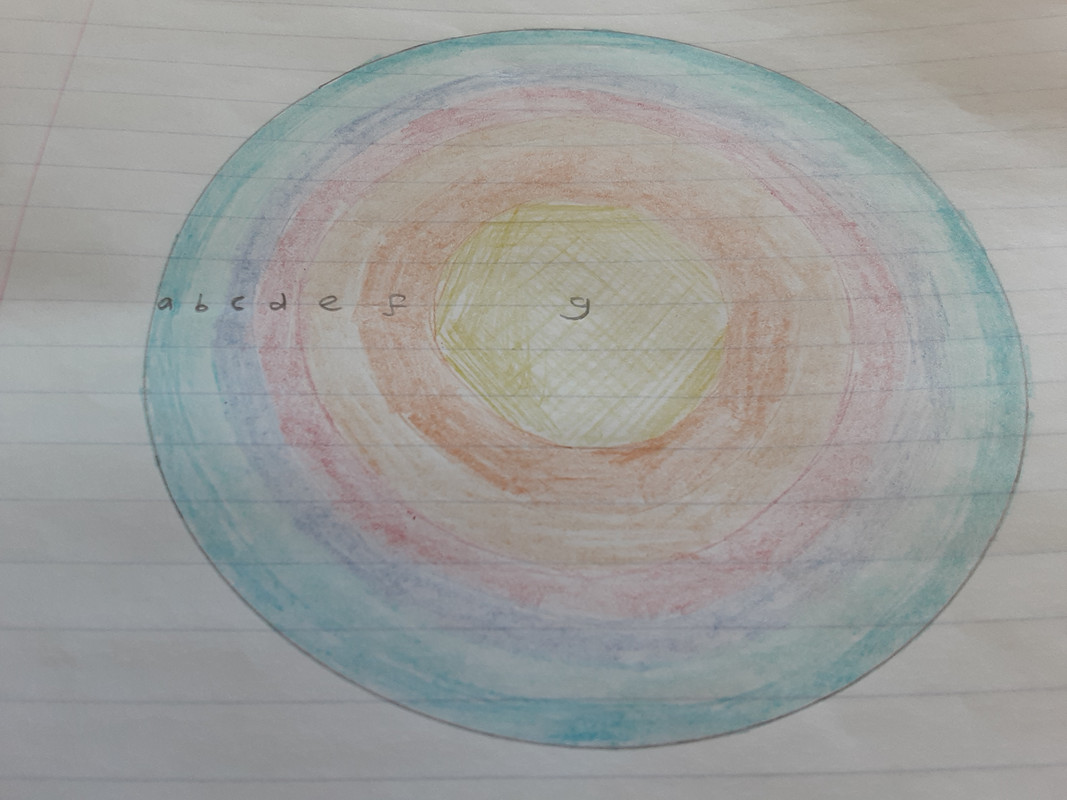
The core of the tank has temperature of ~200 million K. As one travels outwards towards the edges, a temperature gradient forms, with deuterium being cold gas at the tank inner surface and fusion temperature plasma at the core.
For this arrangement to be stable, the pressure of the gas must be extremely high, as maintaining confinement time for plasma particles requires that we limit free path length between collisions. For this to work, the rate of heat generation by fusion with the core must balance the rate at which it leaks out by diffusion between the layers of gas. Fortunately, the reaction rate within a fusion plasma is proportional to the product of the reactant ion density. For pure deuterium gas, it will therefore be proportional to the square of ion density. At any particular core temperature it is therefore proportional to the square of pressure.
However, heat loss by conduction, is proportional to the number of ions that stream out of the core and into the colder layers of plasma and gas. This is a function of the core surface area, ion density and ion speed, which is proportional to the square root of temperature. If pressure is high enough and the chamber is sufficiently large, the mean free path length will be small compared to the chamber radius. So heat loss from the fusion core will be dominated by conduction and diffusion. So there will be a combination of pressure and chamber size at which a stable fusion reaction will form.
The only question is, how large and how high the pressure? If it turns out that we need a pressure vessel the size of the Earth and operating at 1000 bar, then this isn't much use to us. However, a 1000bar pressure and a diameter of 1km, would be compact enough that we might be able to build it someday. To determine practicality, we must examine the concept and determine the critical radius at each pressure.
#189 Re: Exploration to Settlement Creation » Habitat Design on Mars » 2025-04-17 07:05:19
If the bricks are fired in a kiln, perhaps at a lower temperature if combined with Sulfur, will that increase their strength?
Yes. Firing in a neutral atmosphere is a form of sintering, where grain boundaries fuse together. Interestingly, if the bricks are fired in a CO atmosphere, the Fe2O3 within the clay will partially reduce forming Fe3O4 and even longer iron oxide chains. This creates an extremely hard and strong brick. Foundation bricks are typically made in this way and they have a characteristic blue colour due to the iron(II) oxide they contain.
The strength of sintered bricks is relatively impervious to moisture, as the grain boundaries are fused. However, green bricks are easier and less energy intensive to make. We are using them as a sort of liner to prevent tne compacted regolith berm from crumbling inwards. Baked bricks are always better and stronger and more moisture resistant. But those advantages come at a cost. The firing temperature for clay bricks is approximately 1000 - 1100°C. We could potentially use concentrated solar to provide that heat. It is just more infrastructure and cost.
#190 Re: Exploration to Settlement Creation » Habitat Design on Mars » 2025-04-16 16:21:26
For the dome itself, I was thinking of this.
https://www.sciencealert.com/it-turns-o … n-concrete
If we can seperate fines from the bulk Martian regolith, then a hydraulic press can produce all of the bricks needed to build the inner dome. Bulk regolith can then be heaped into berms around the dome. This provides enough weight to balance internal pressure. The berm can be built up in layers, which are compacted by running heavy vehicles over them.
You mention asphalt. If we can produce (or find) heavy hydrocarbons on Mars, they would be useful for producing coatings. Painting the inner surface of a compressed soil brick dome will limit its moisture uptake. The bricks themselves can be bonded with a thin layer of sulphurcrete. This will be a mixture of liquid sulphur and Martian fines that are squirted onto brick surfaces using a glue gun. This bonds the brick coarses together during dome assembly.
After construction, the outer surface of the soil berm needs to the stabilised against erosion from Martian dust and winds. A layer of rocks could be used to do this. We could seperate regolith into different grades using sieves. The fines are used to make bricks in the hydrauoic press. Intermediate grades form the compacted berm built around the dome, that forms ballast against internal pressure. Coarse rocks are stacked in a layer covering the whole structure. In this way, the pressure enclosure can be built up using regolith, without any chemical or thermal processing. Only sorting an selective compression, with small amounts of sulphur used build the inner dome.
The inner city structures built beneath the dome will also be built from processed regolith and stone. Many buildings will be constructed from the same compressed regolith blocks that are used to build the dome. We could also use cut stone to build structures, using adobe mortar as the bonding agent. As these structures will never see rain, we can use unfired soil bricks to make most compressive structures. Cut rocks and tiles can also be used to make timbrel vaults for upper floors and roof structures. In this way, we can build entires cities on Mars using nothing more elaborate than the stone and dirt that we happen to find nearby.
#191 Re: Not So Free Chat » Peter Zeihan again: and also other thinkers: » 2025-04-16 13:12:28
The British State is entirely captured by globalist extremists. None the less, the idea that the US is a puppet to British foreign policy is hard for me to believe. The UK government is a plague upon the British people. But why would the US government be beholden to what they want? Outside of its borders, no one cares much about what they want. They clearly aren't at all interested in rebuilding the British empire. They are doing a lousy job of that, considering that they just paid to get rid of the Chagos islands. The British government see themselves as post-nationalist. They think that they have transcended national and ethnic boundaries. So when they see nationalists like Putin and Orban acting in their own ethnic interests, they are disgusted by it.
#192 Re: Exploration to Settlement Creation » Habitat Design on Mars » 2025-04-16 08:35:04
I'm back in the UK. I got back from Holland at about 1 o'clock this morning. I had a wonderful time and saw five different Dutch towns and cities.
I am still considering exactly what lessons future Martian urban designers might learn from Dutch urban architecture. But it occurs to me that a large part of urban design is a function of its local environment. Holland is a flat wetland, much of which is reclaimed from the sea. This made it relatively easy to dig canals, which could take sea freight directly into cities from the Zuider Zee and allow goods to be lifted directly off of barges into houses and warehouses. In the days before fossil fuel driven transportation, the position of Holland and its flat low lying nature were uniquely beneficial for trade. Amsterdam's urban architecture were a result of its position in a wetland environment on the edge of a saltwater lagoon (the Zuider Zee) that allowed easy access to the Baltic, the North Sea coasts and through the English channel, the Dutch could access the Mediterranean and the coast of Africa relatively easily. At the same time as being well positioned and ideal for water transport, Holland was protected from invasion by the swampy land to the south and east, which made it very difficult for an army to advance prior to the development of road infrastructure. This allowed the Netherlands to develop as a maritime trading empire, able to concentrate its military spending on naval capability. This gave them early global reach, which brought home a great deal of wealth.
A Martian city will exist in a very different environment. There are no seas or wetlands on Mars. There are not and will not be for a long time to come, any trading nations within easy reach on the Martian surface. What is more, any Martian settlement will need to be a pressure structure. This constrains how we will build Martian cities. One thing a Martian settlement does have in common with the Netherlands is that habitable land is something that must be created and maintained against natural forces. In Holland, that force is the sea, which threatens to flood the land and cities and is held back by soil dykes. On Mars, we must reliably maintain containment of atmosphere against vacuum. The sort of city architecture that this will drive is quite dissimilar to anything that we find in the Netherlands.
It will be desirable for cities to grow incrementally. Until terraforming is able to substantially increase Martian atmospheric pressure, it makes no sense at all building an entire city under a single environmental enclosure. This would require building the entire city at once. That is not a realistic prospect for a colony, as it requires enormous resources invested up front. More likely, a city will develop by adding small cells or districts, each protected by its own atmospheric containment structure. This allows both incremental growth and resiliance against accidental depressurisation.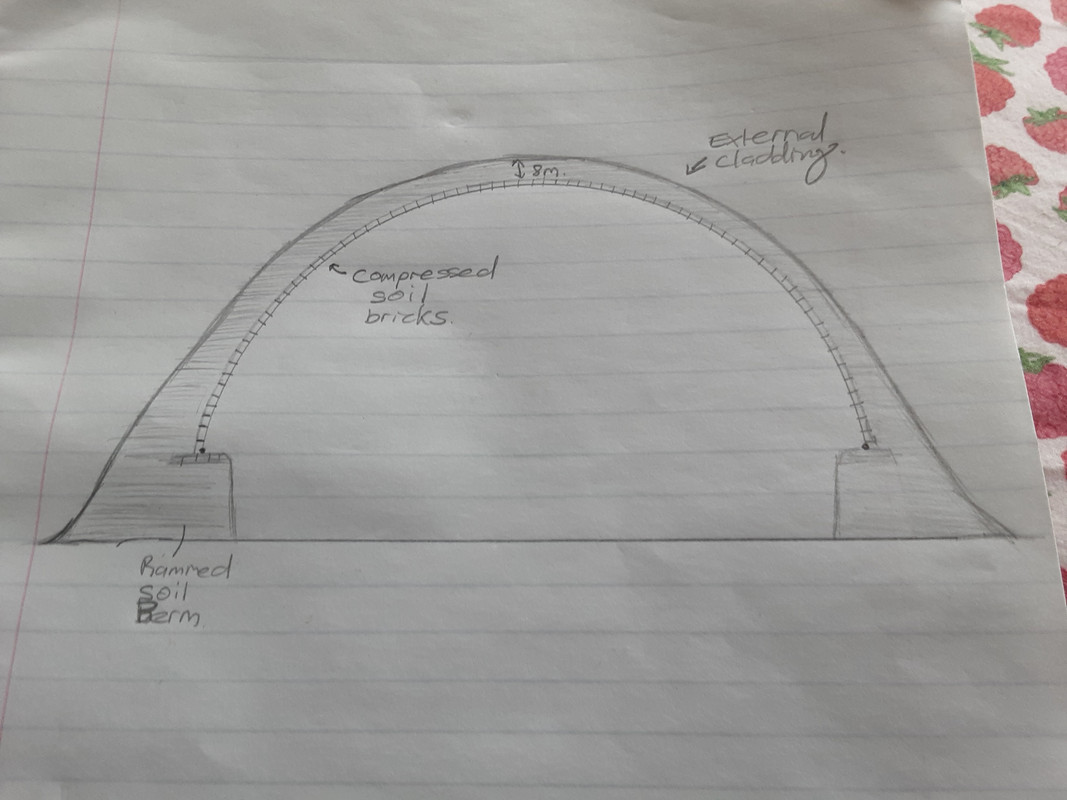
Each cell will contain a small village. We would want to accomodate urban expansion without interfering with the pressure structure of other cells around it. So the liklihood is that as we add additional districts to the city we would connect them to others by underground tunnels. This avoids the need to depressurise inhabitated parts of the city to add new ones. So Martian cities will grow as collections of villages rather than as a single expanding urban metropolis.
The soil dome shown above is the easiest way of building a pressurised enclosure on Mars using a minimal industrial base and essentially only lightly processed natural materials. Internal pressure is balanced by the weight of compressed, grade seperated overburden, which is provided by sieving a tampering down Martian regolith. We would build up the soil berm in layers as we assemble the brick dome. This is analogous to 3D printing, with robotic vehicles dropping graded regolith onto the structure and tamping it down. This provides an incrementally growing roadway that can be used to assemble the dome as the soil layer builds up to its edge.
To limit the length of tunnels, the cityscape would grow as a hexagonal lattice of soil domes, with a nextwork of tunnels connecting them.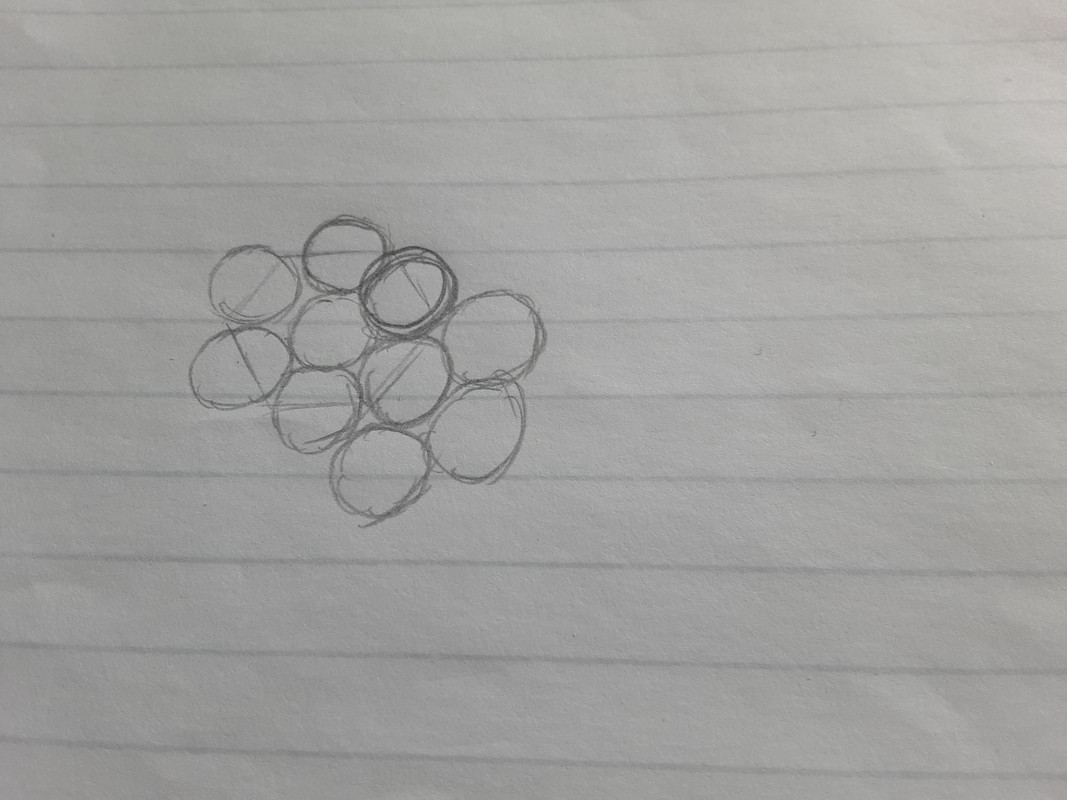
The interior design of each urban village will likely be dense, as there is a need to house the maximum number of people and economic functions to maximise the return on investment of building the pressure dome.
#193 Re: Not So Free Chat » Zaanse Schaanes Windmill Museum, Holland. » 2025-04-13 15:23:51
Amsterdam
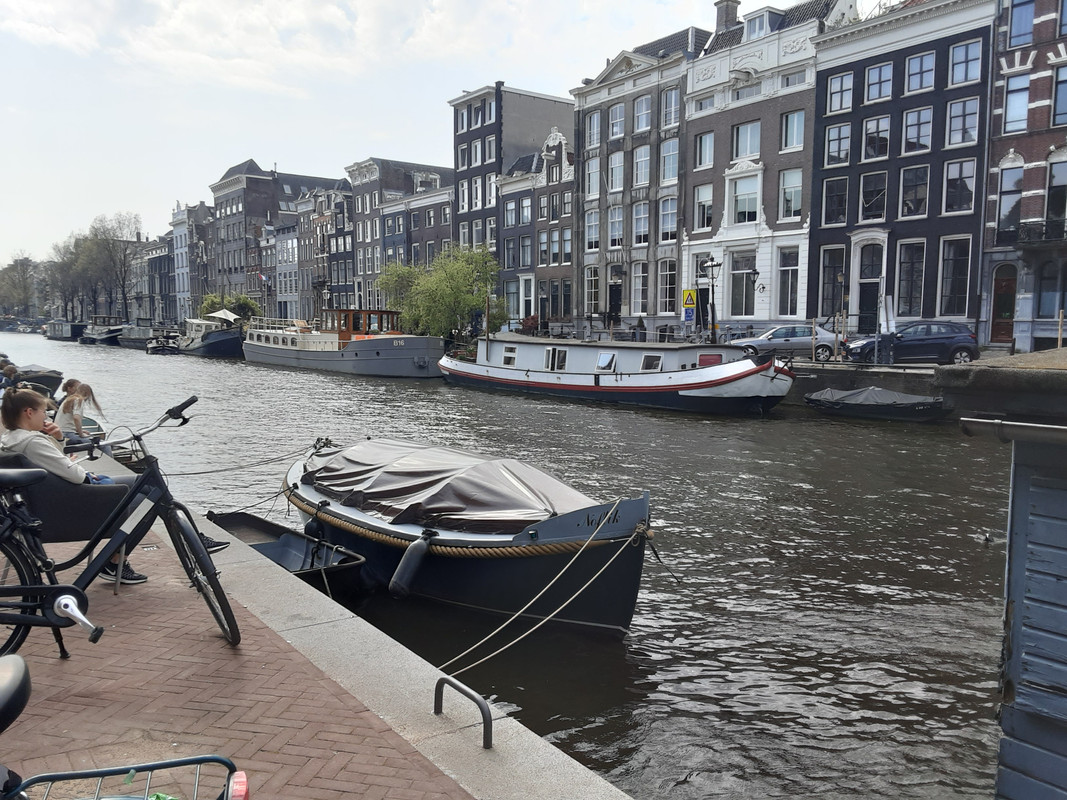
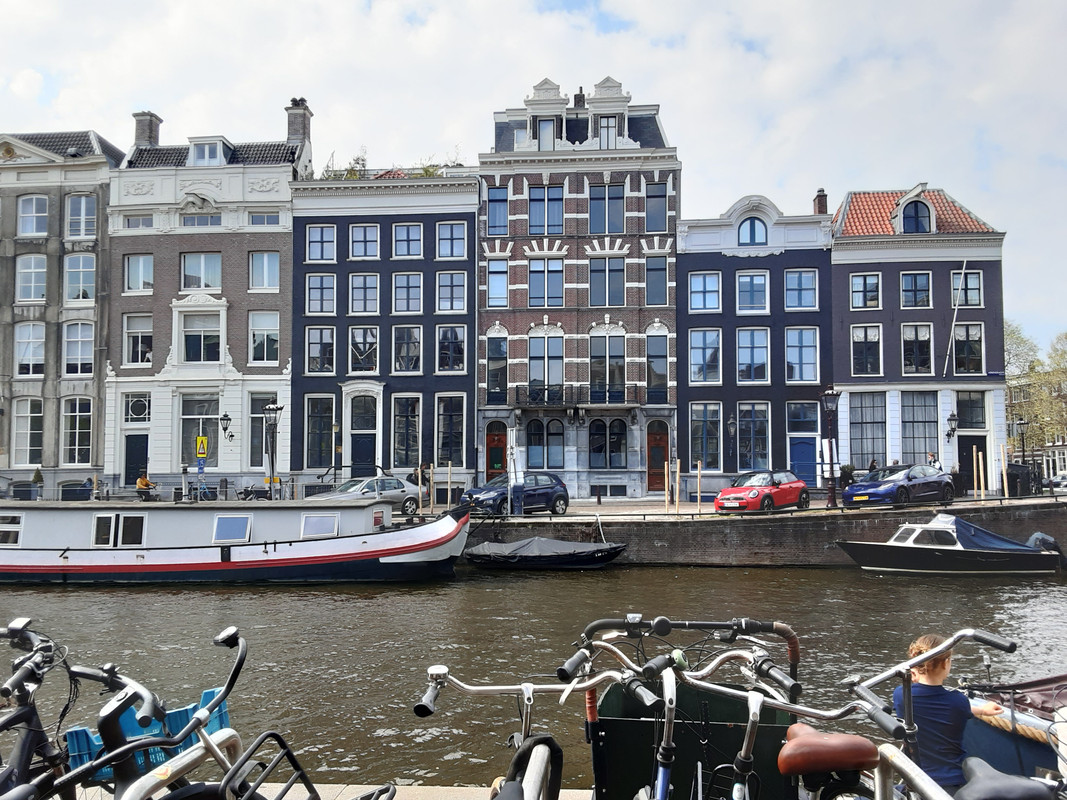
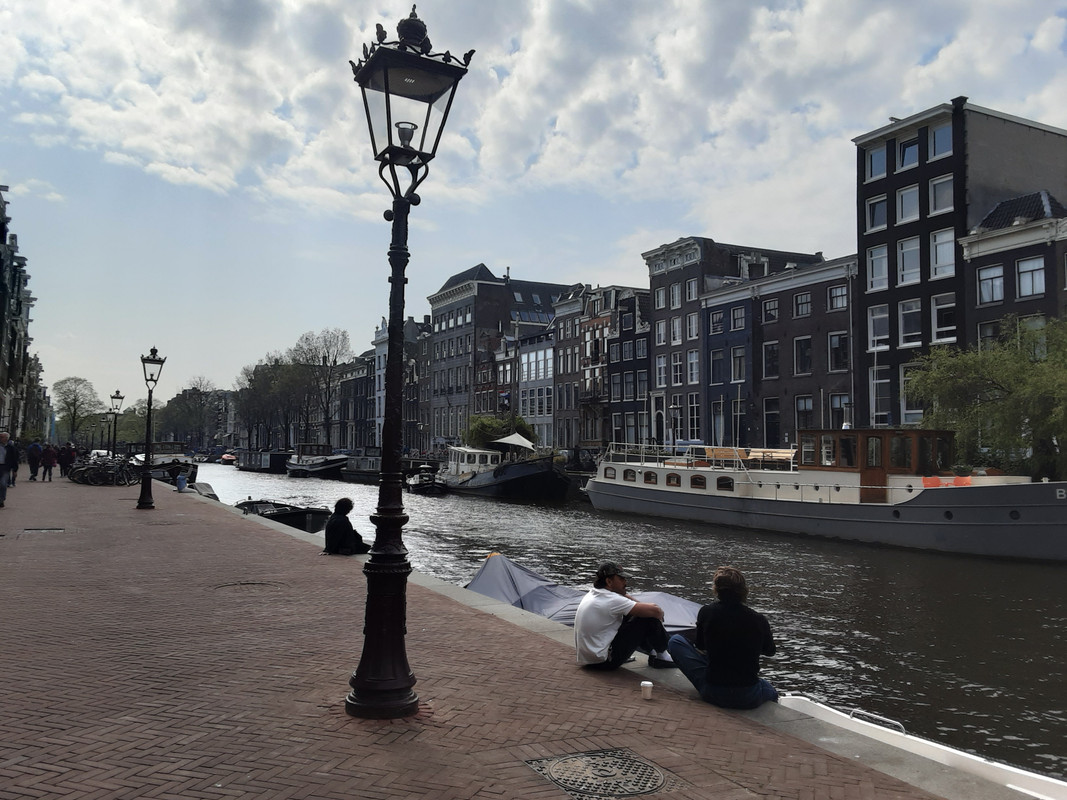
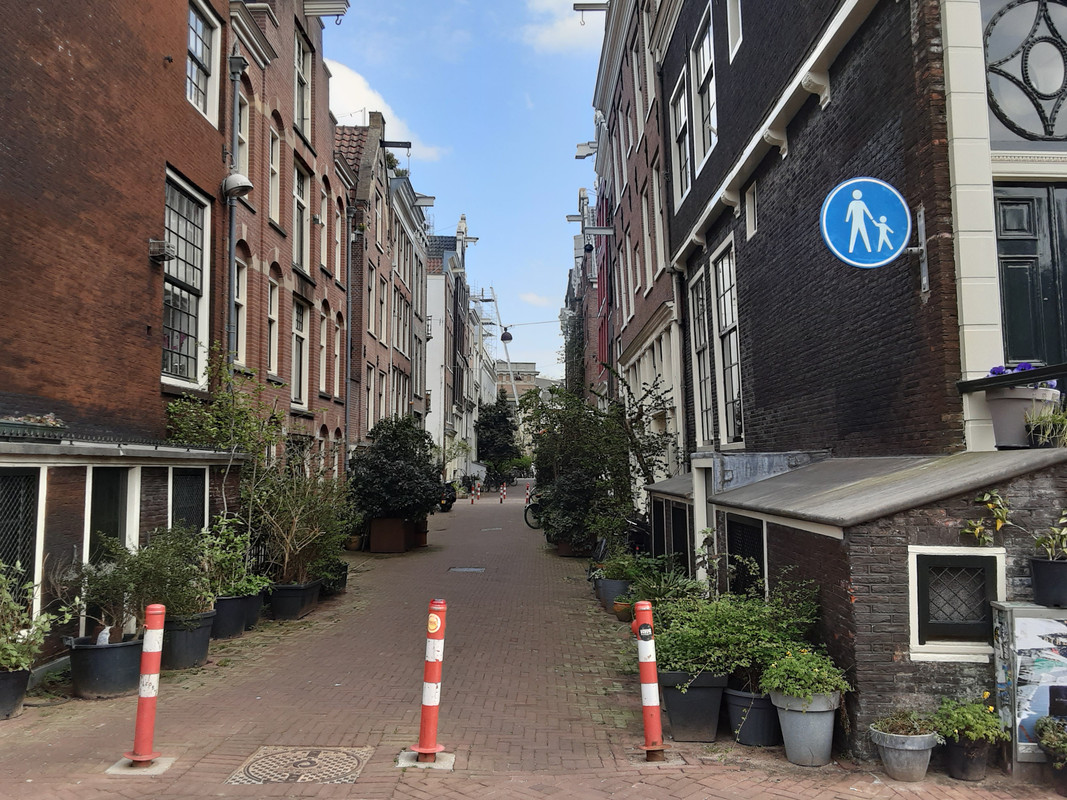
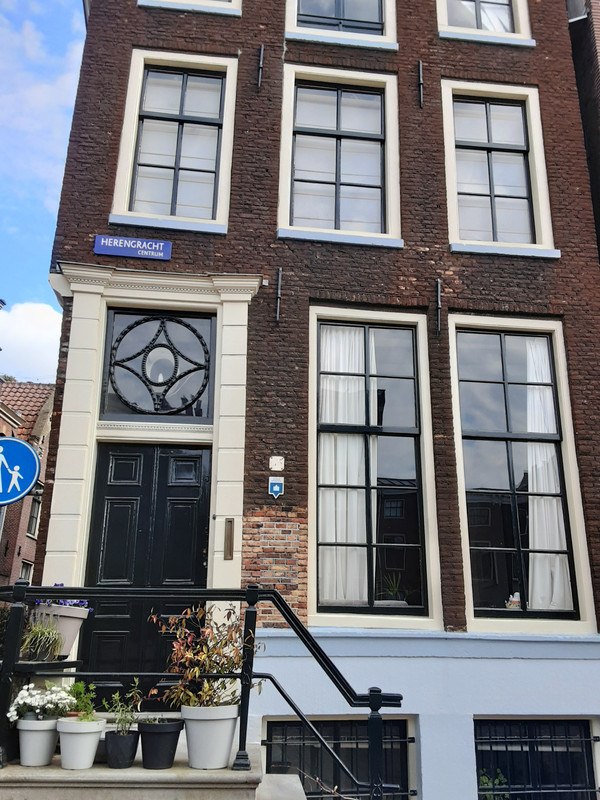
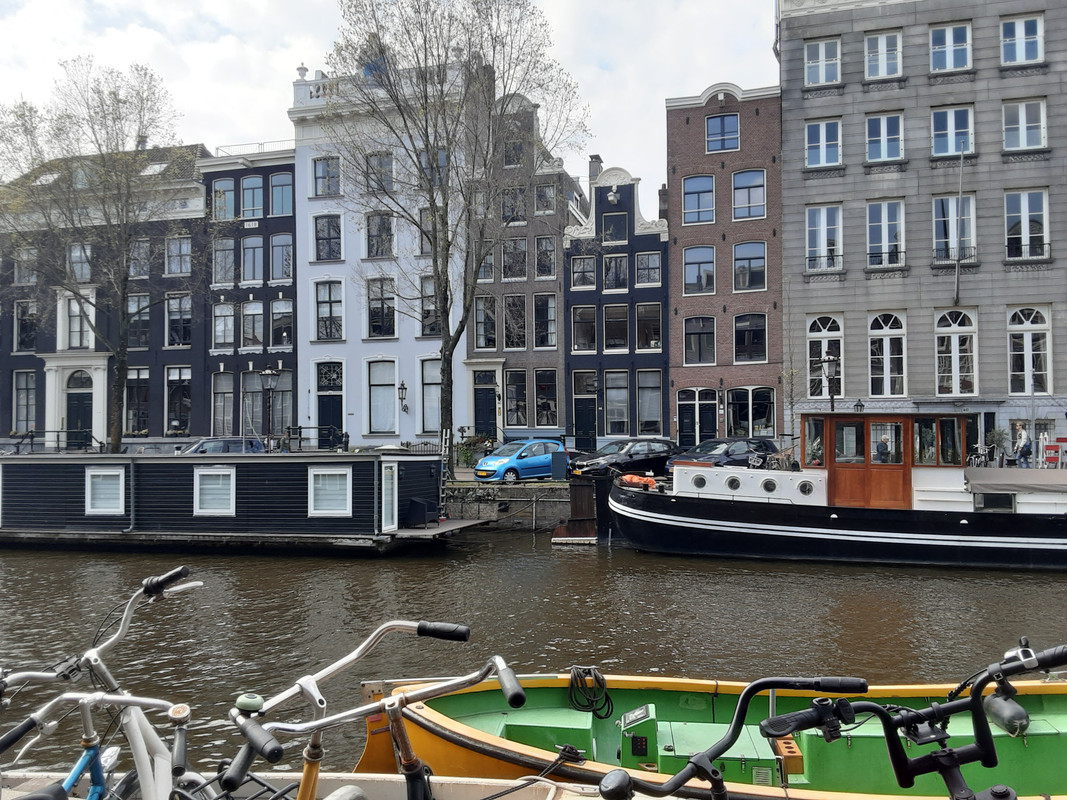

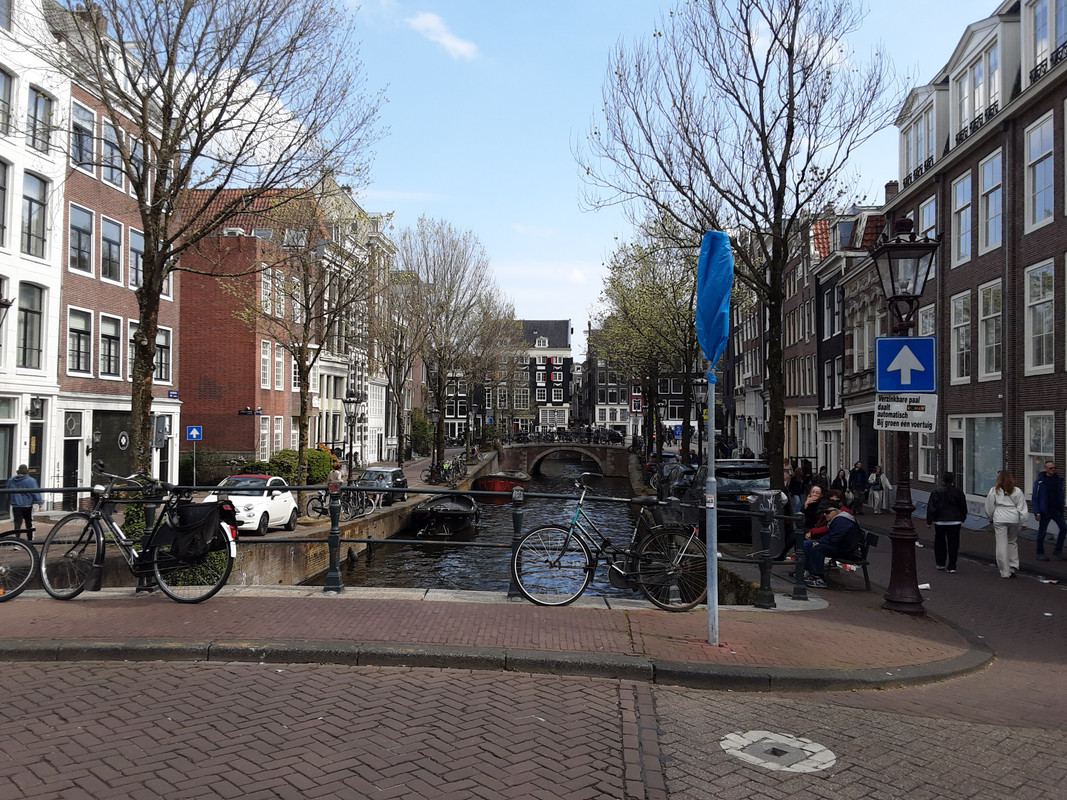
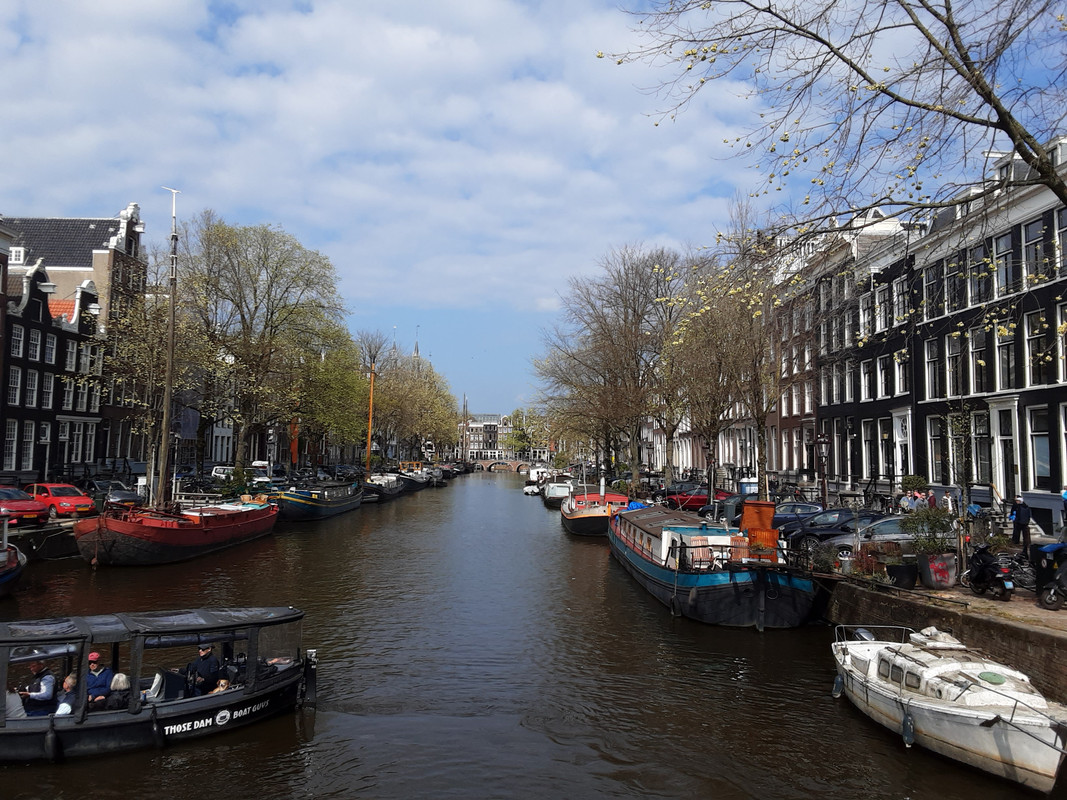
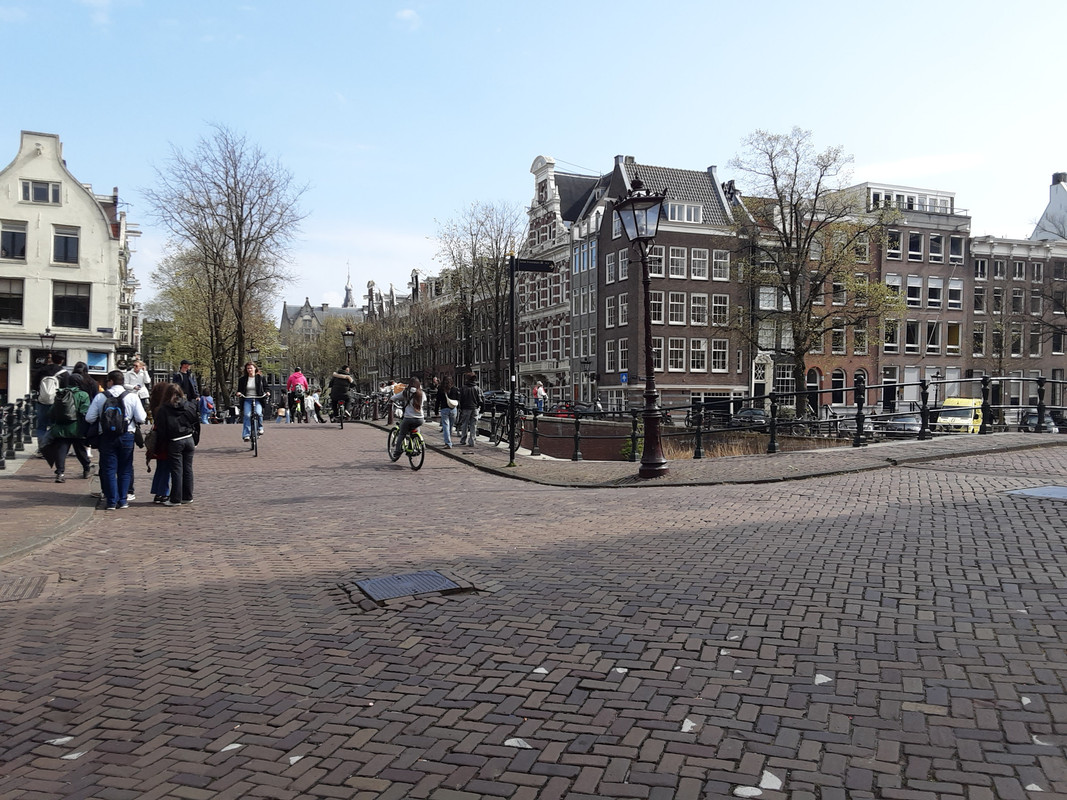
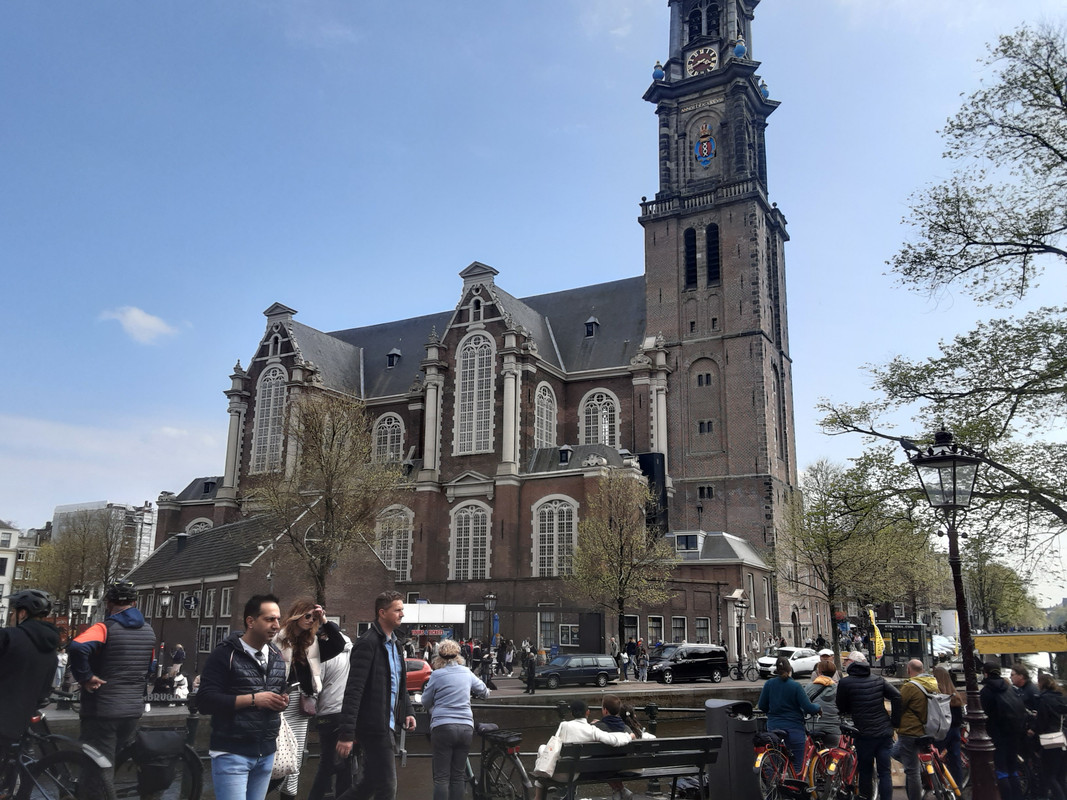
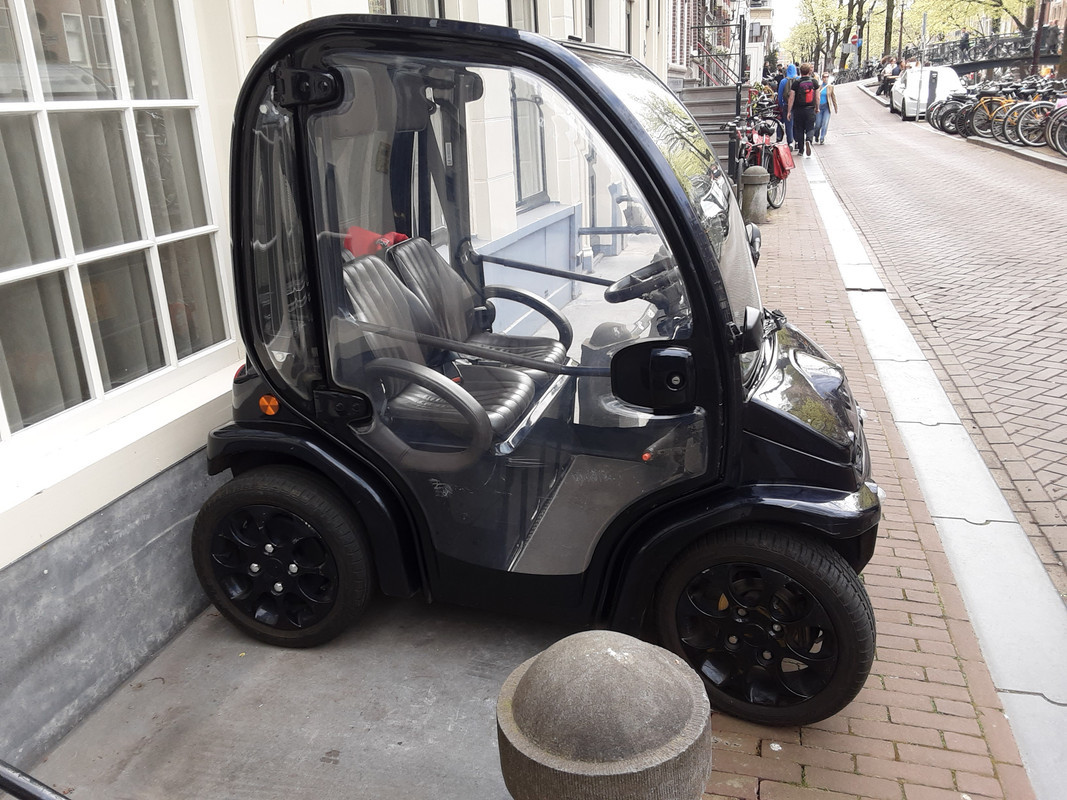
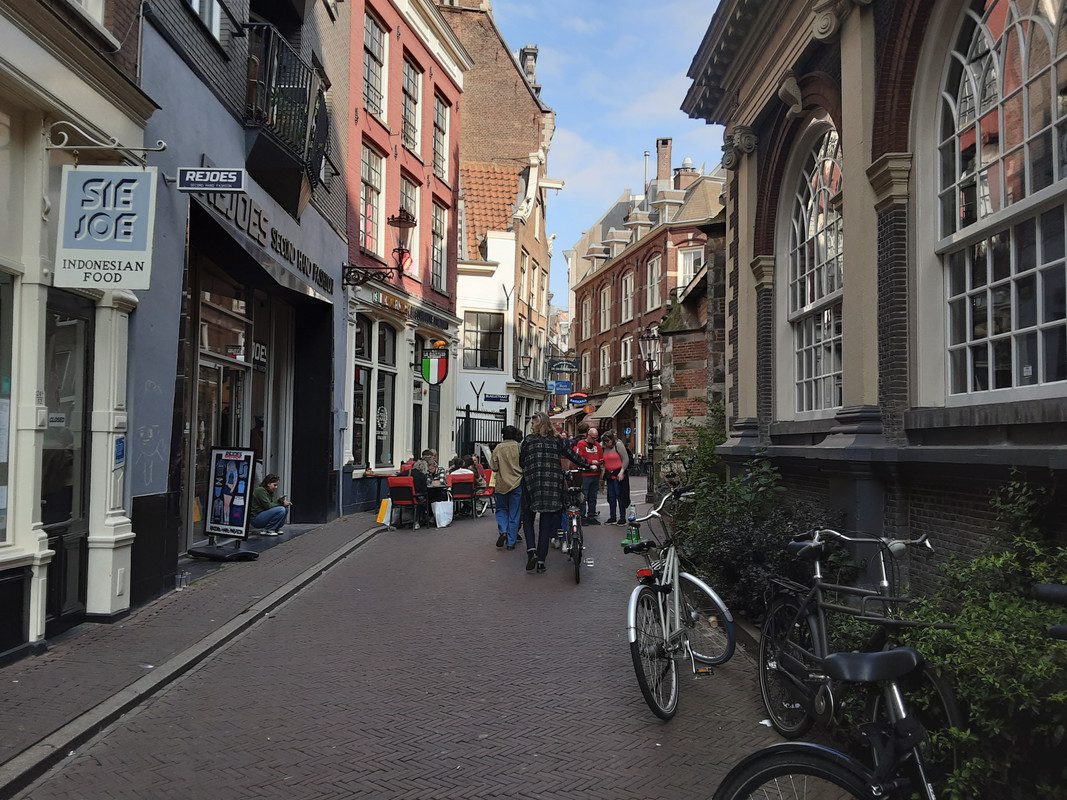
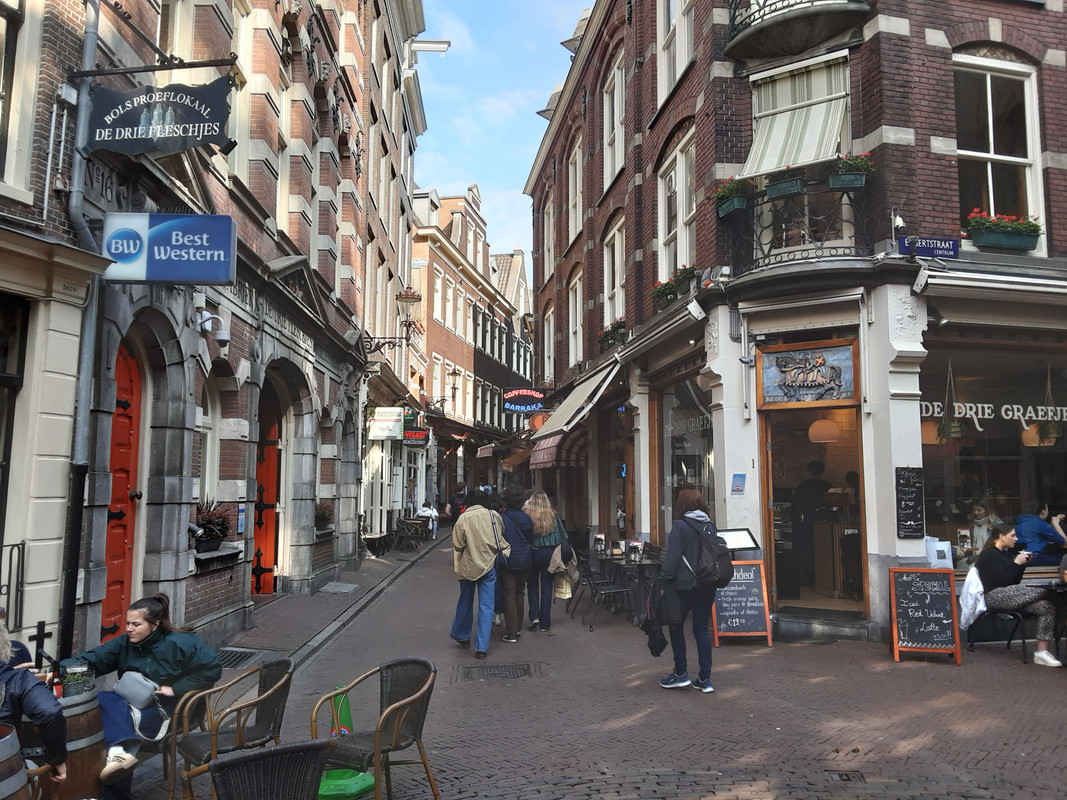
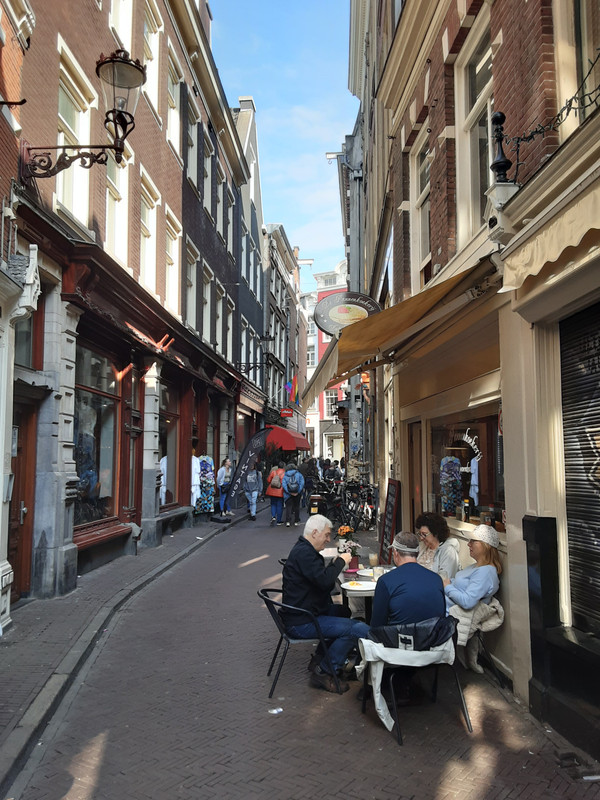
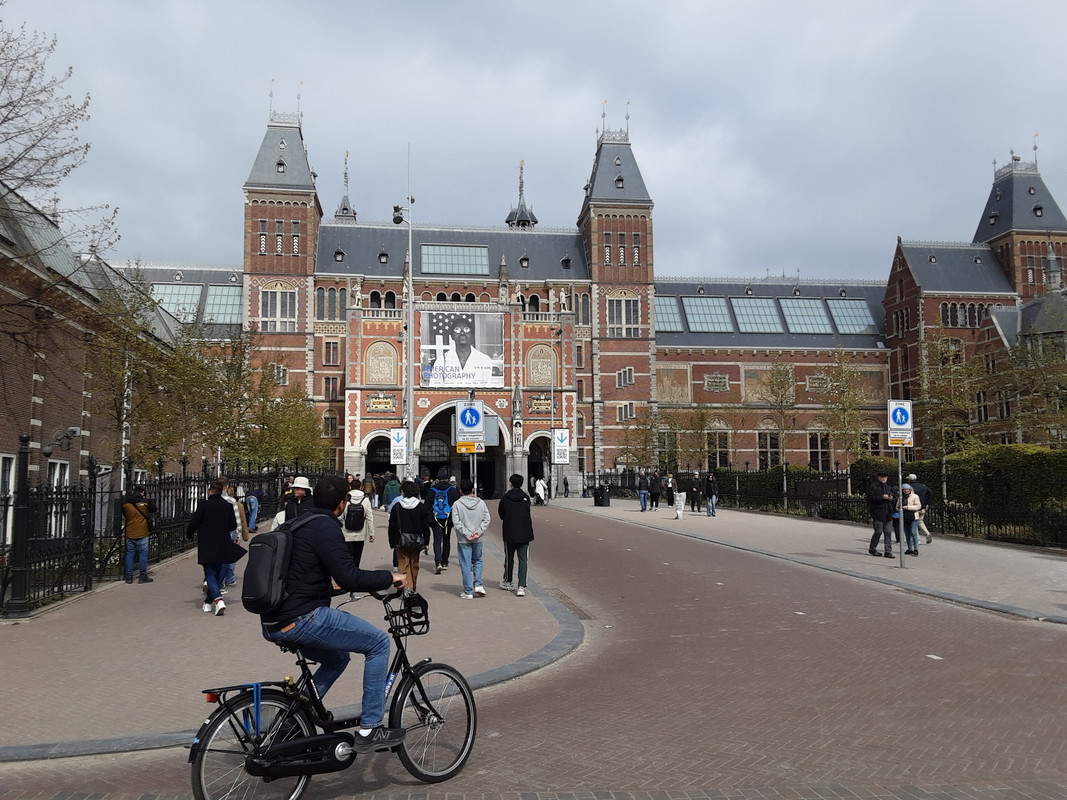
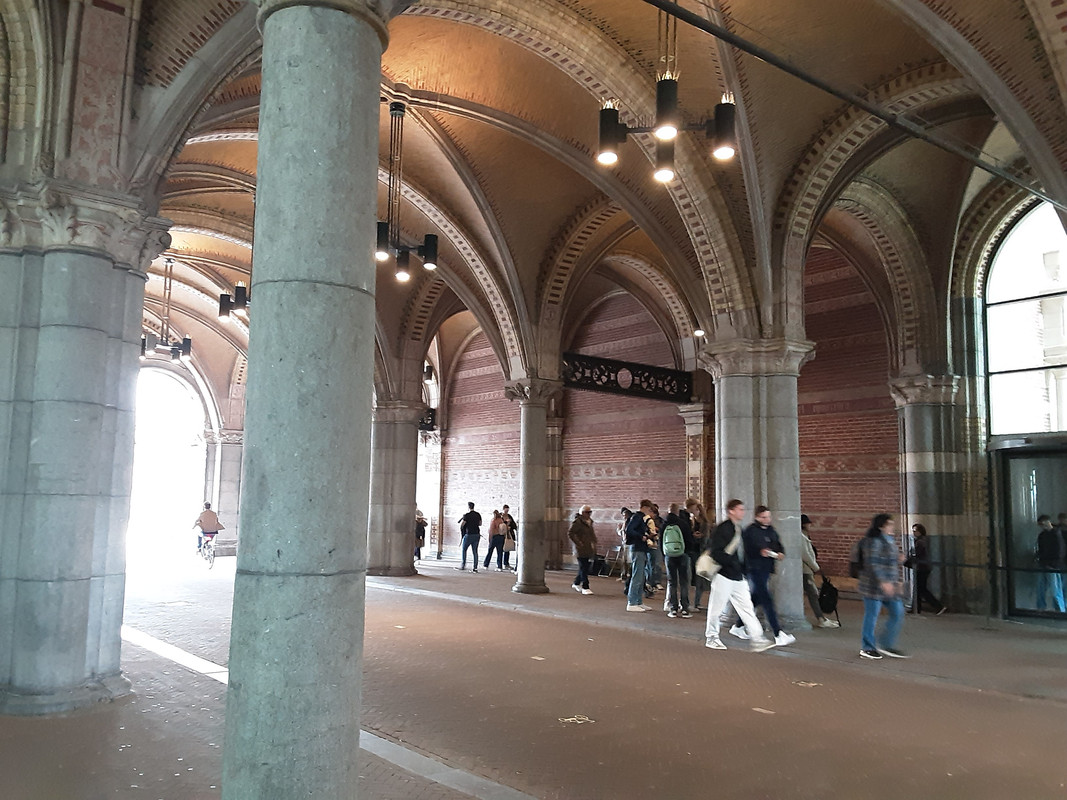
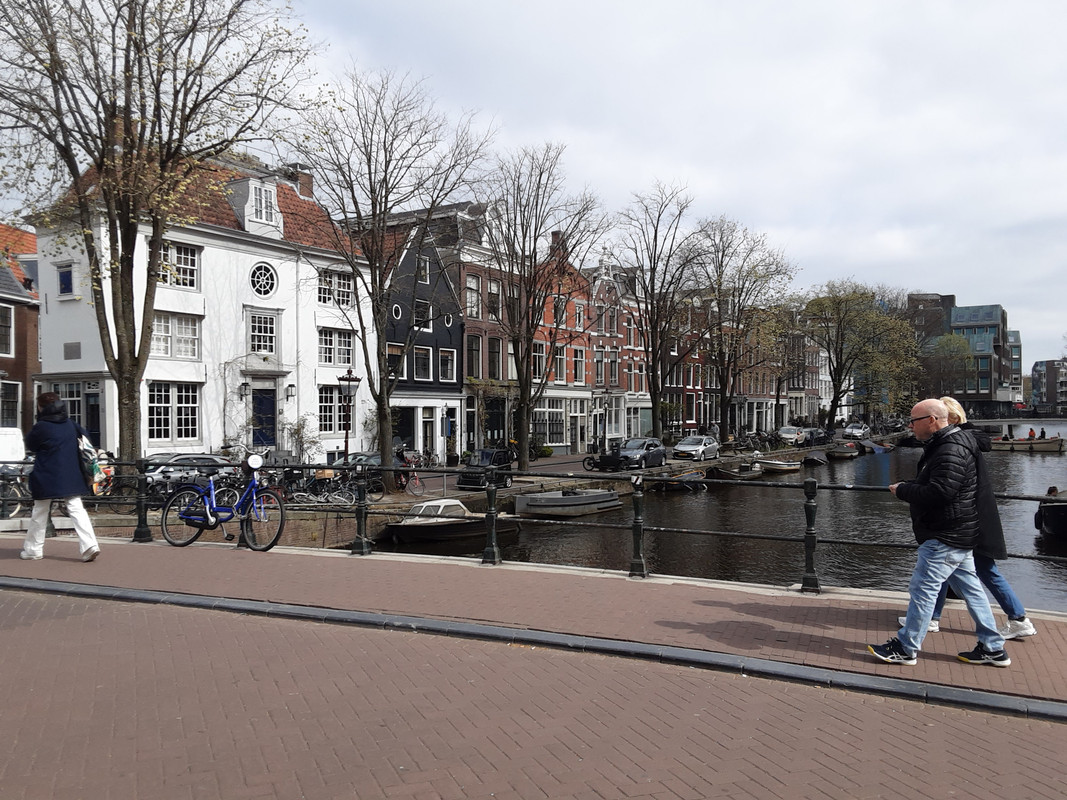
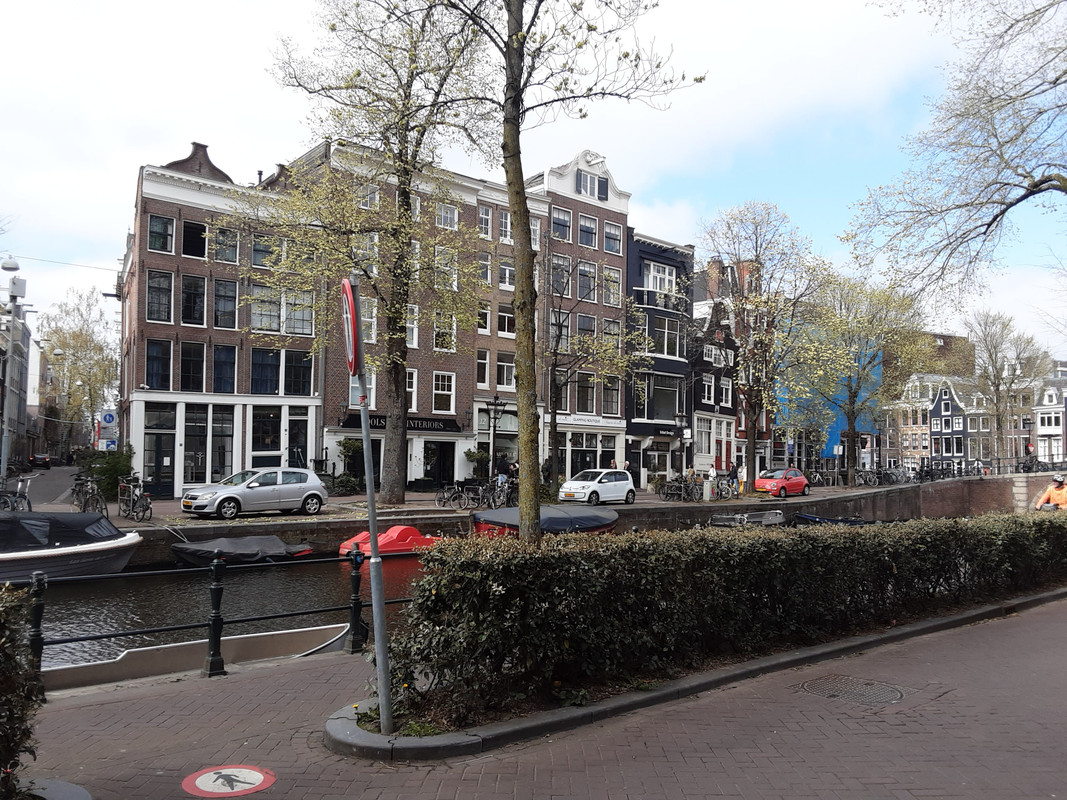
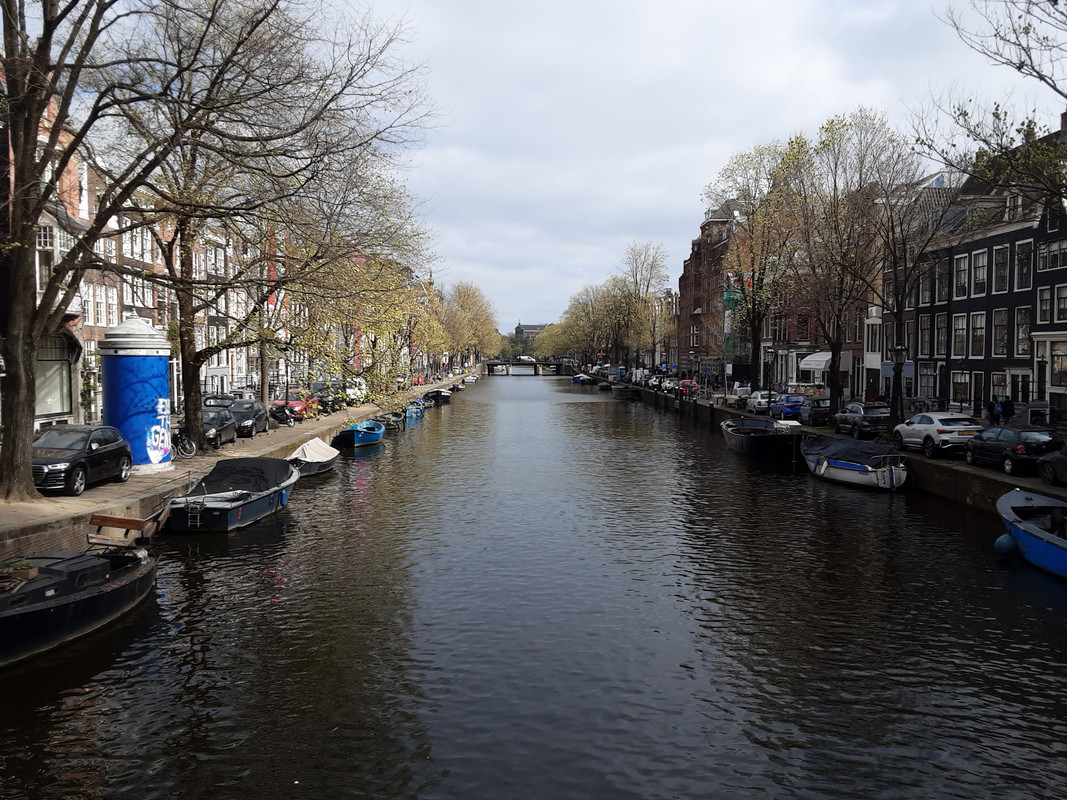

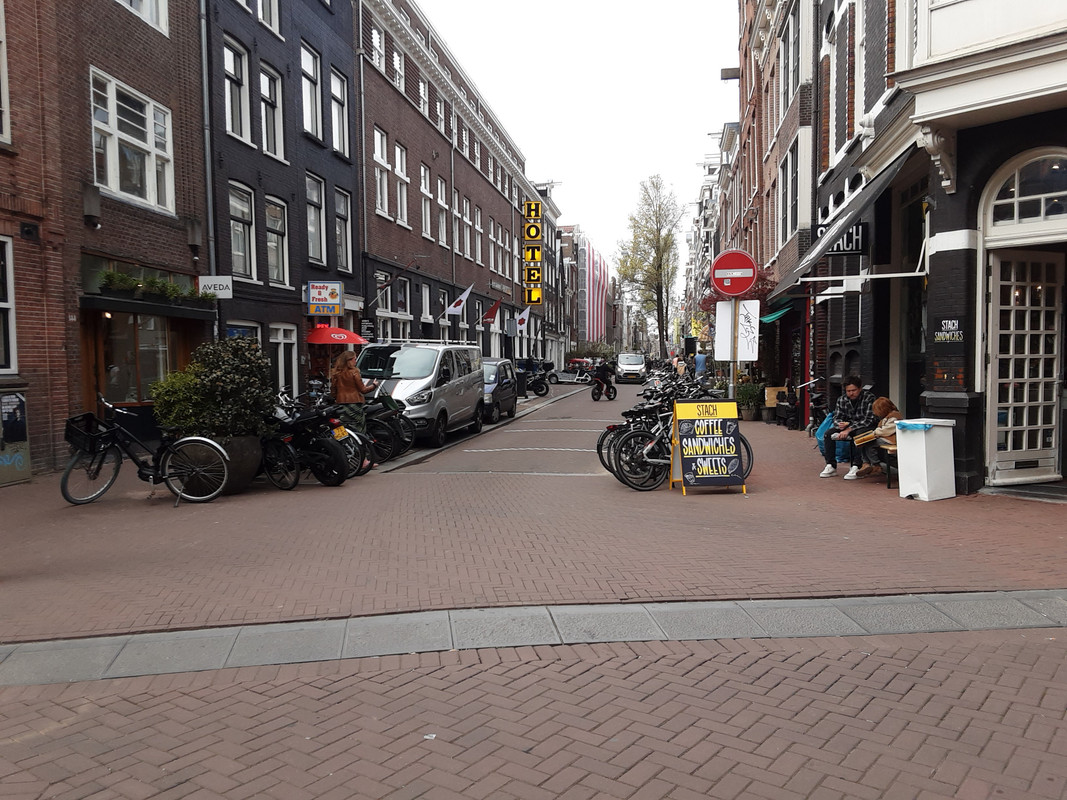
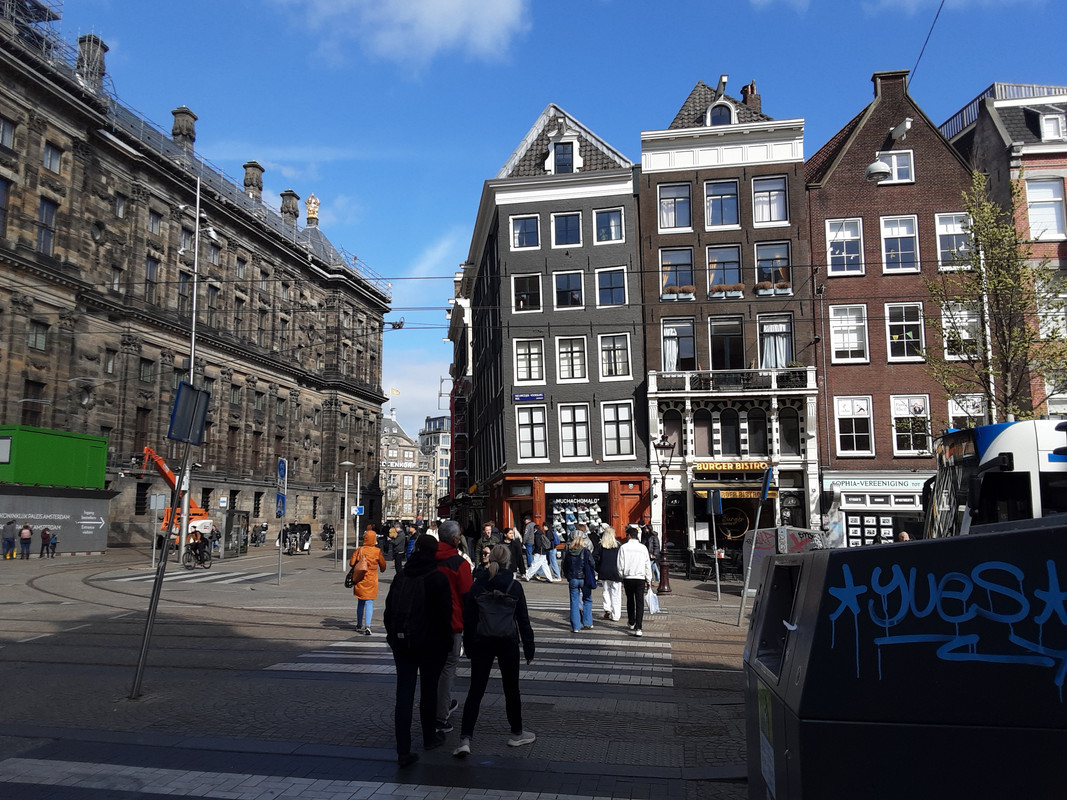
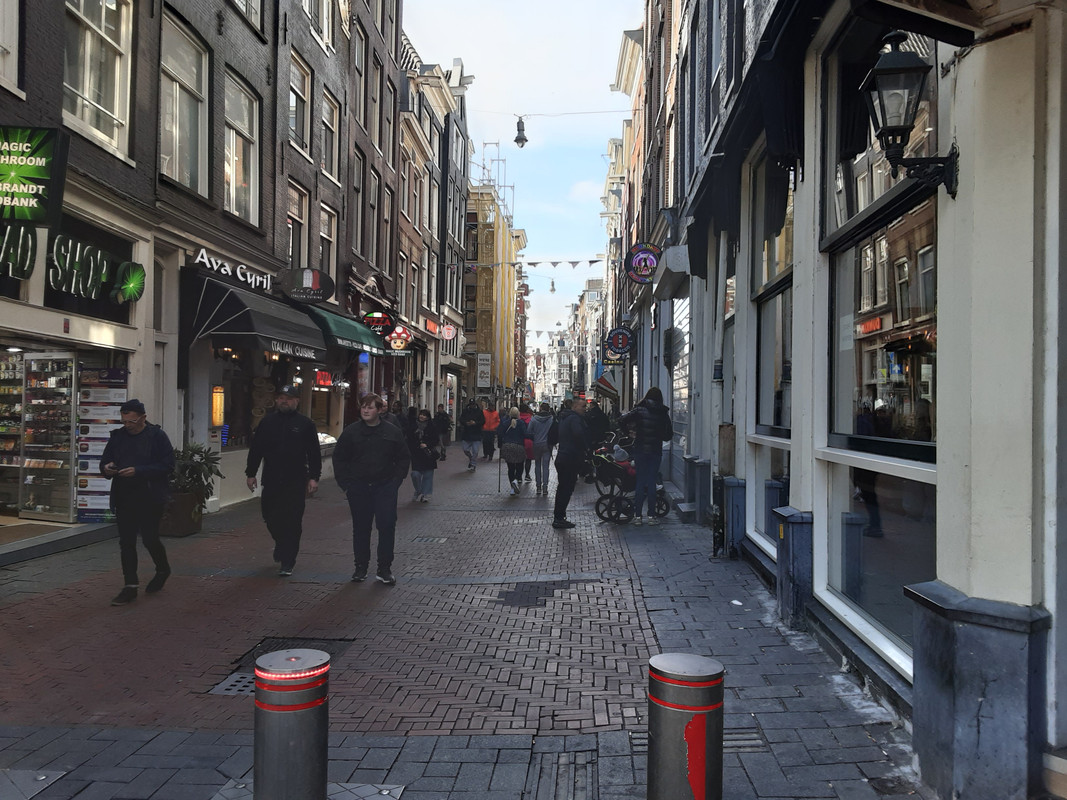
#194 Re: Not So Free Chat » Zaanse Schaanes Windmill Museum, Holland. » 2025-04-13 15:06:11
Edam and Volandam
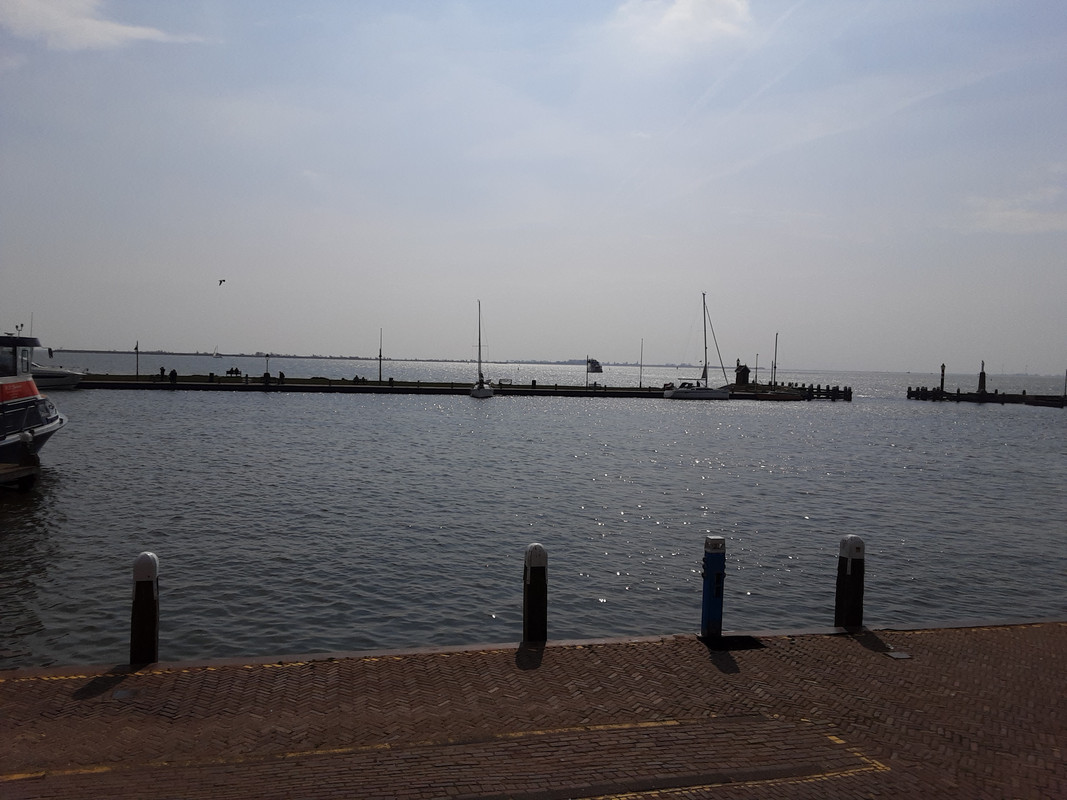
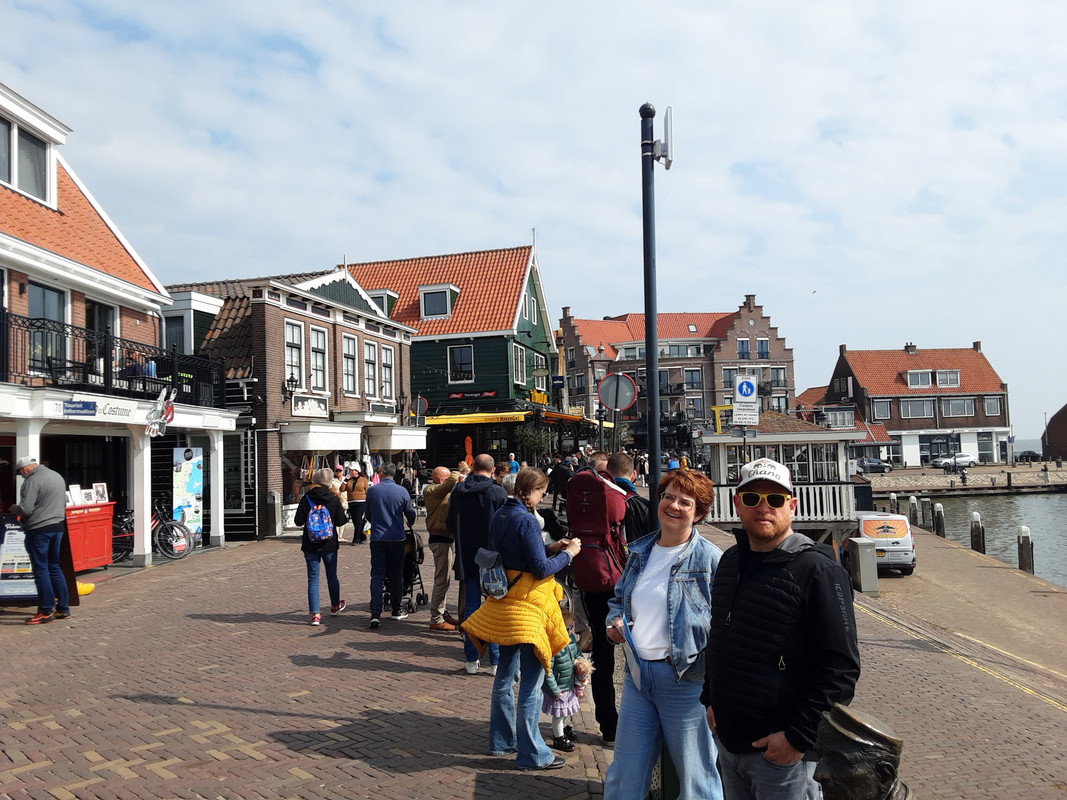
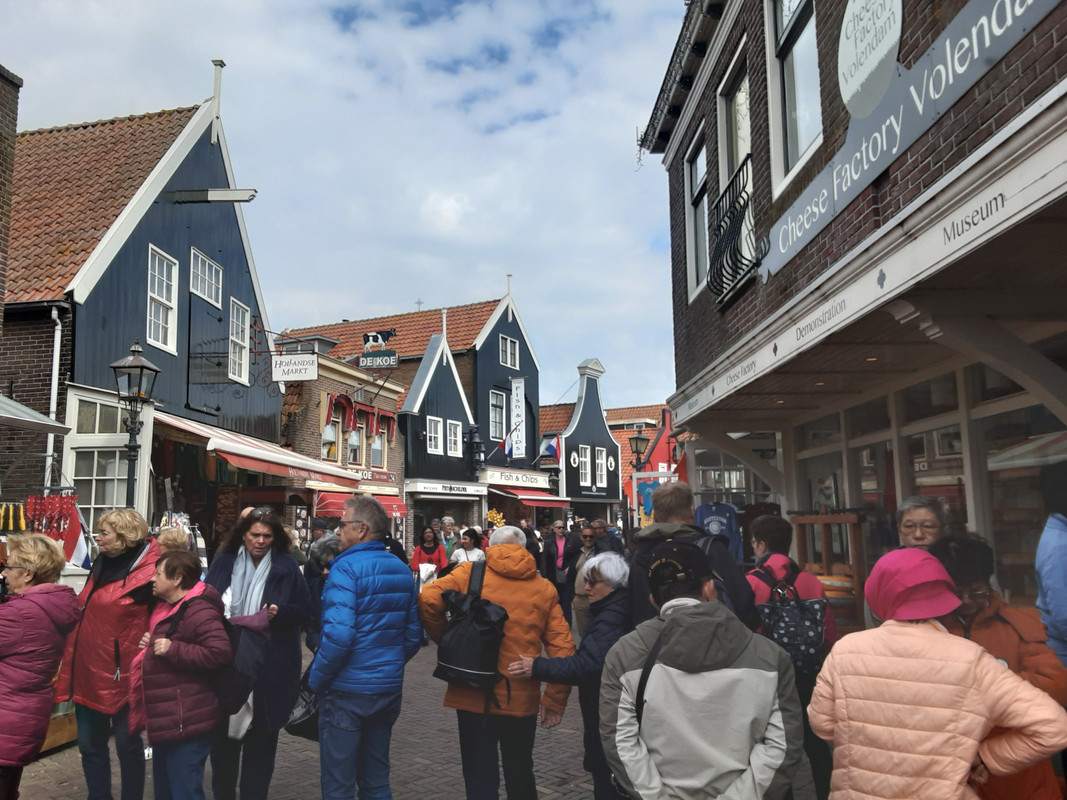
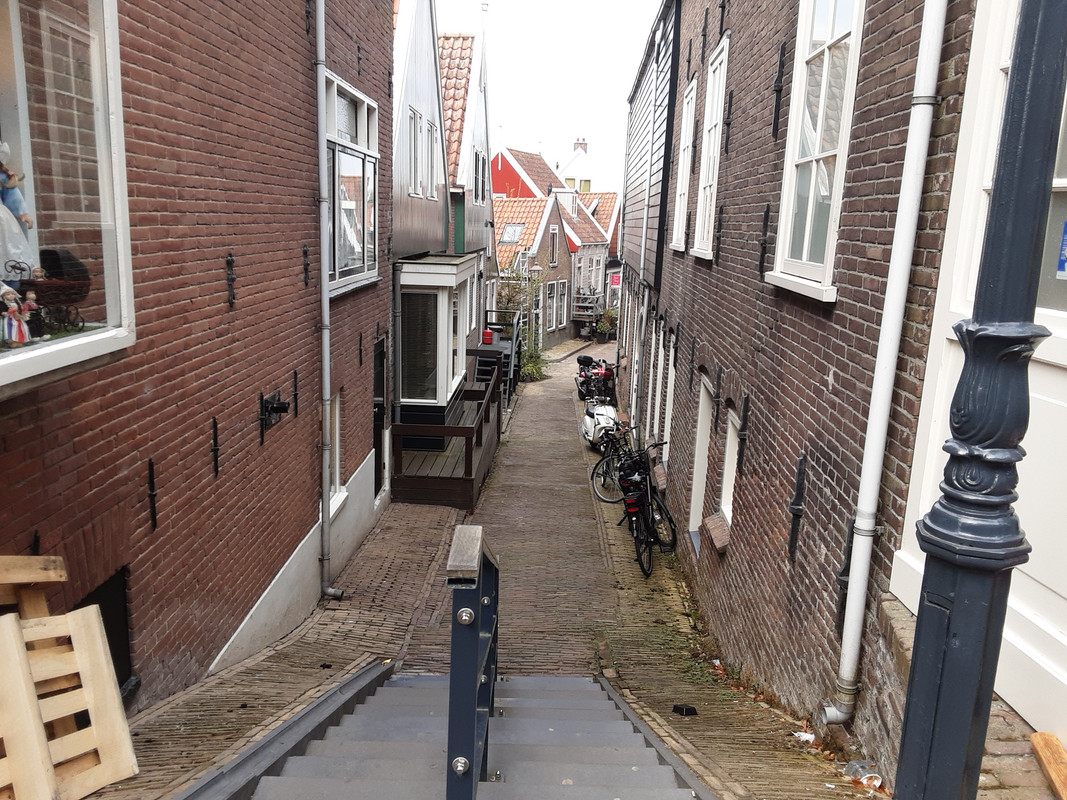

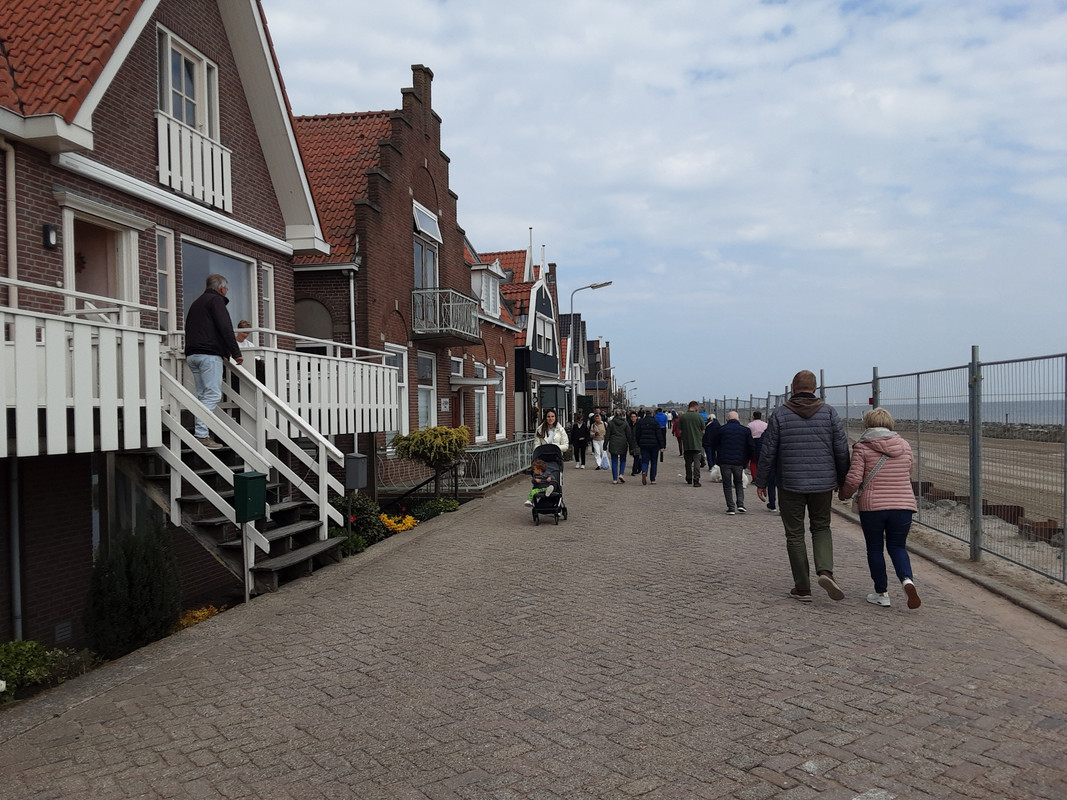
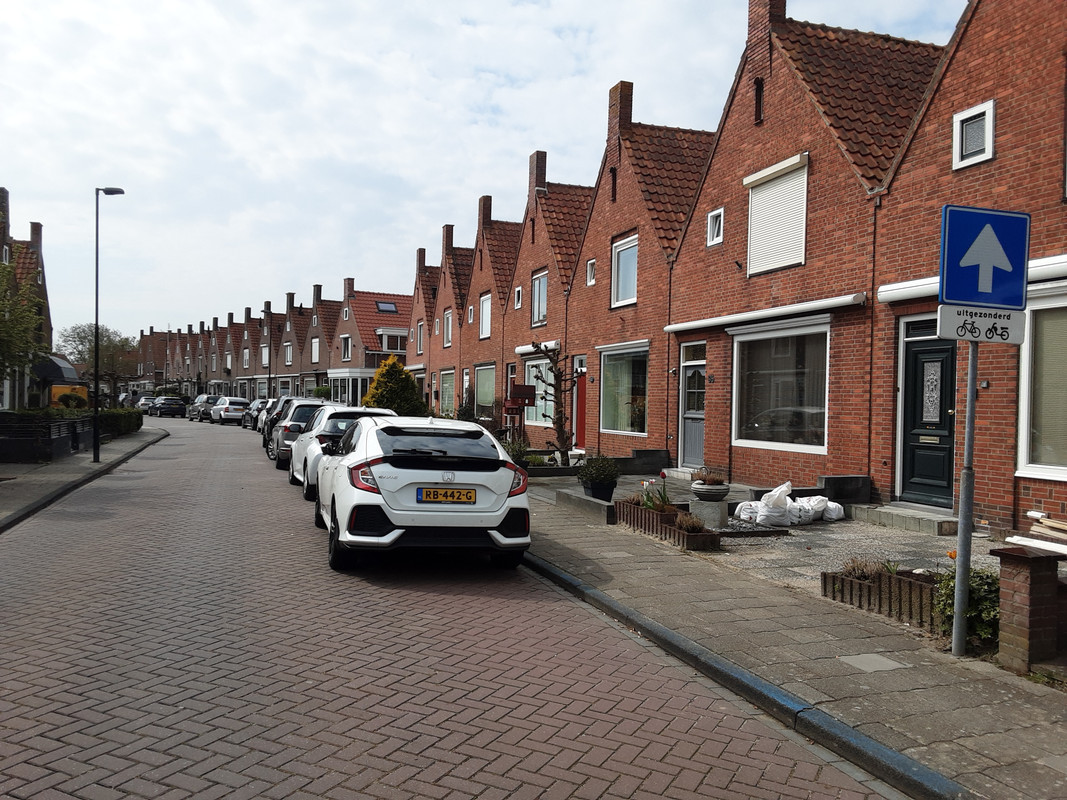
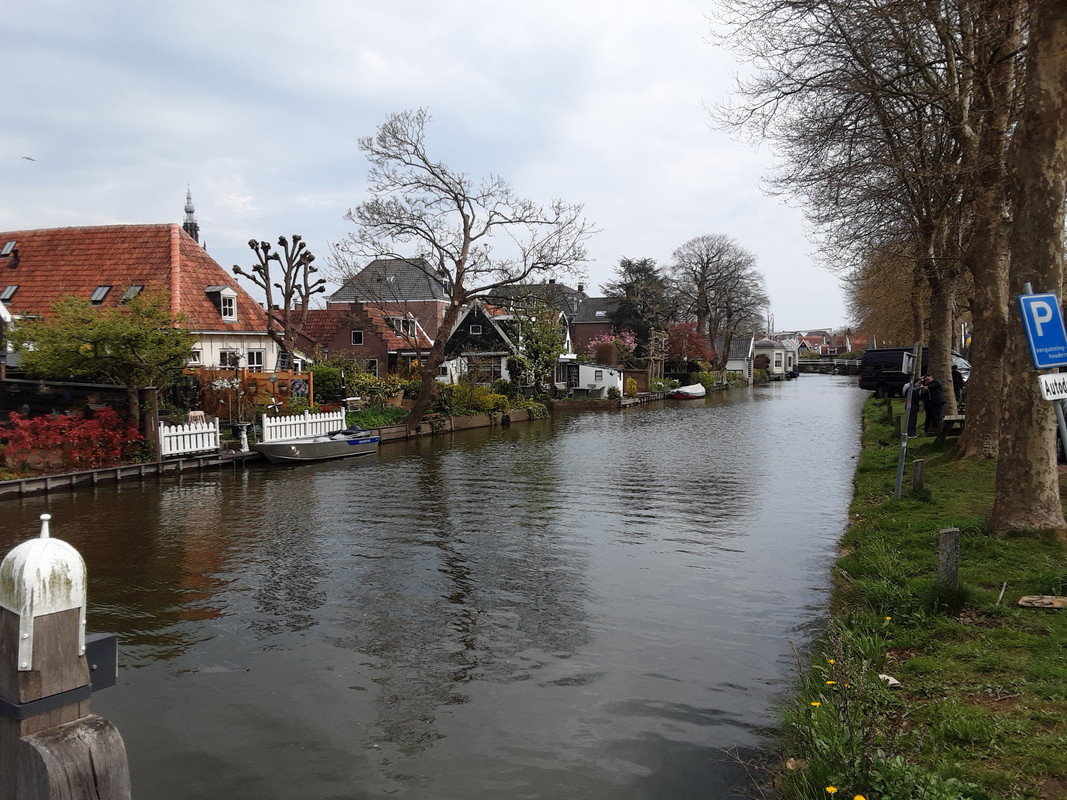
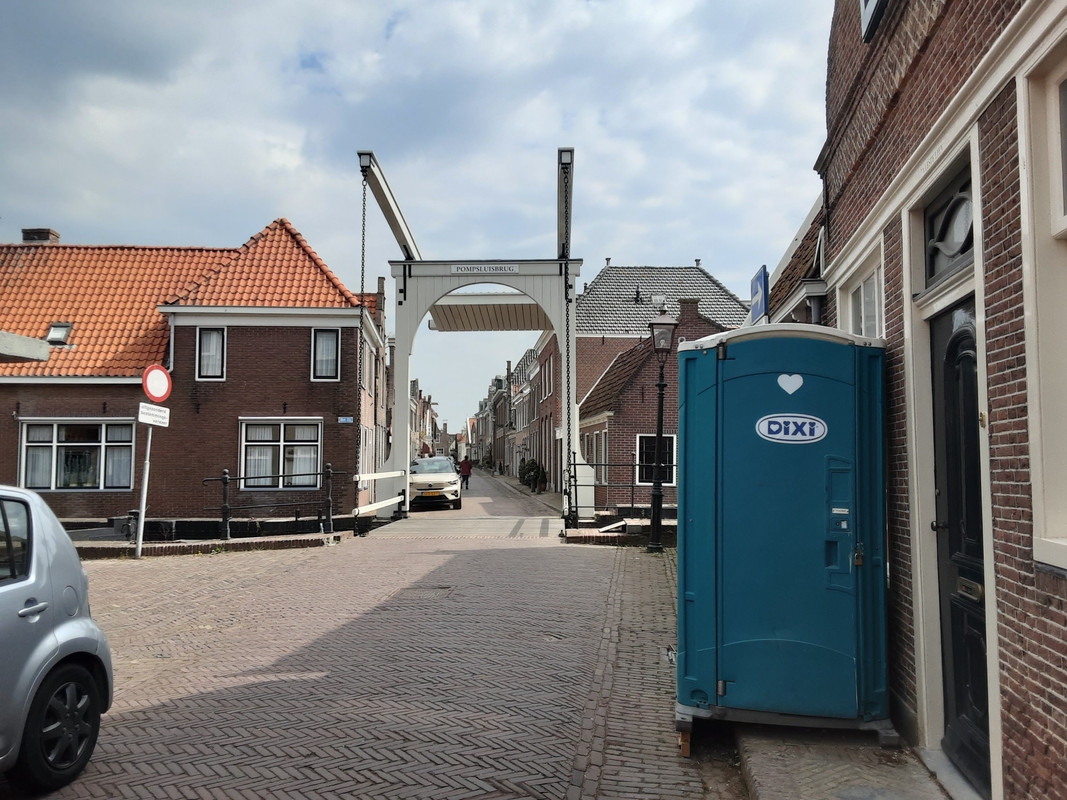
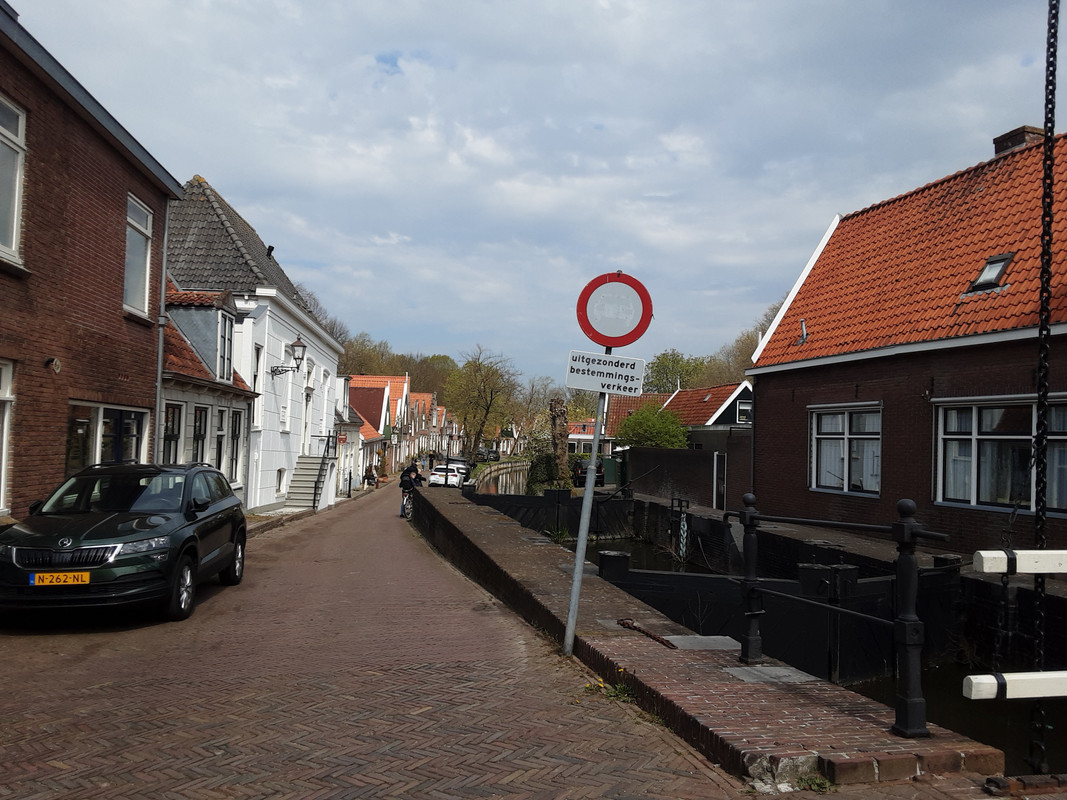
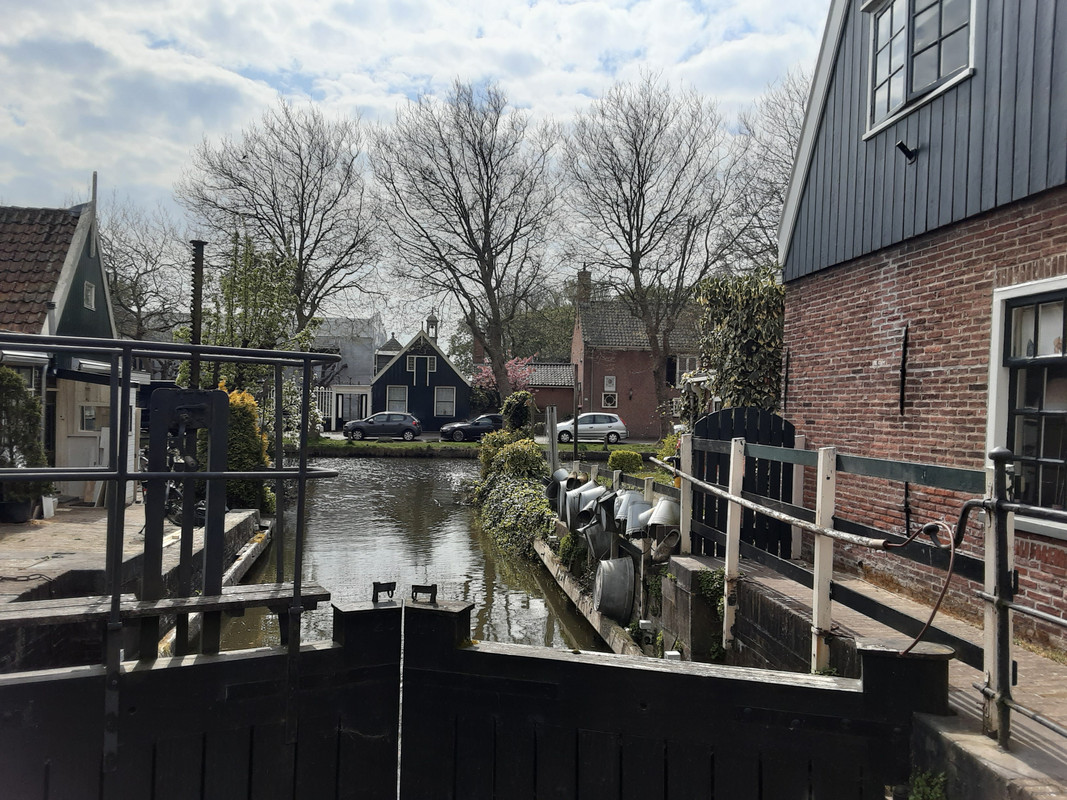
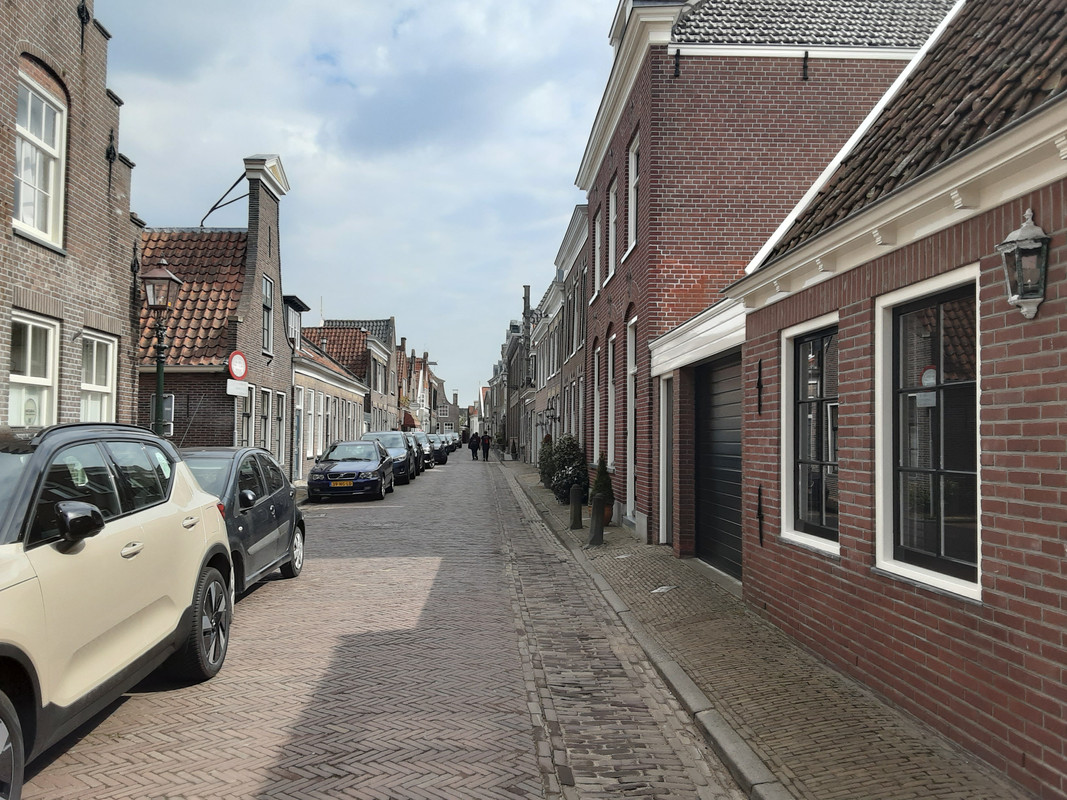
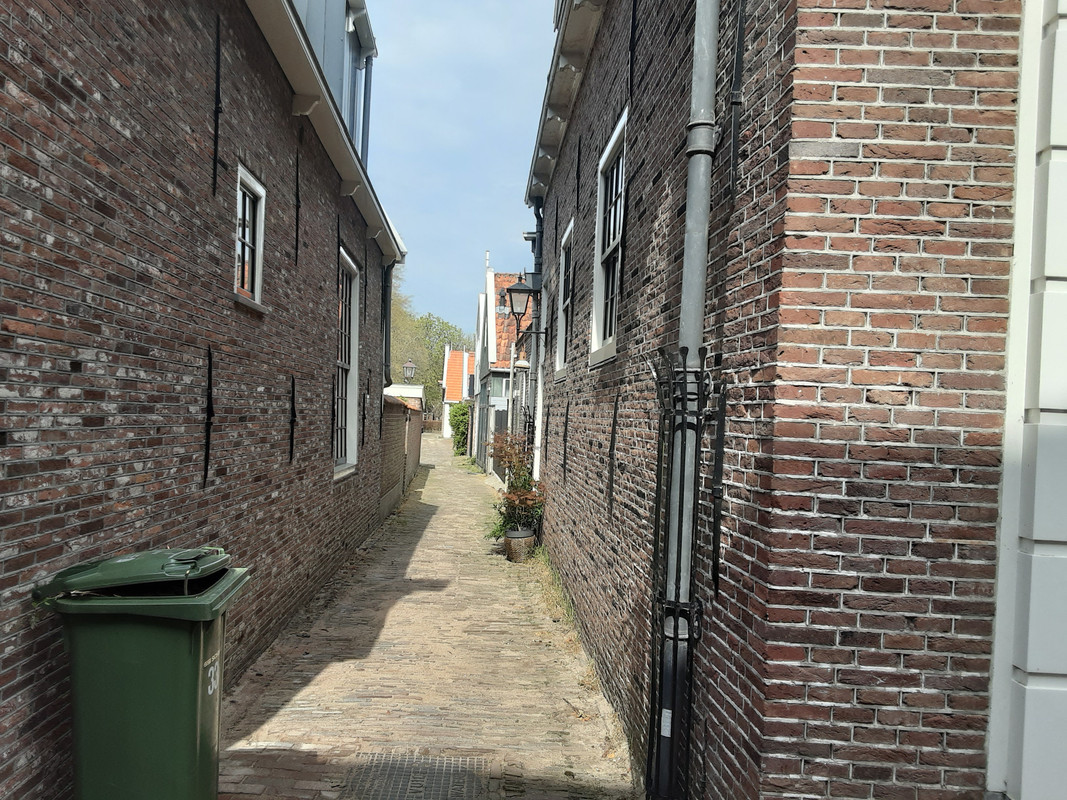
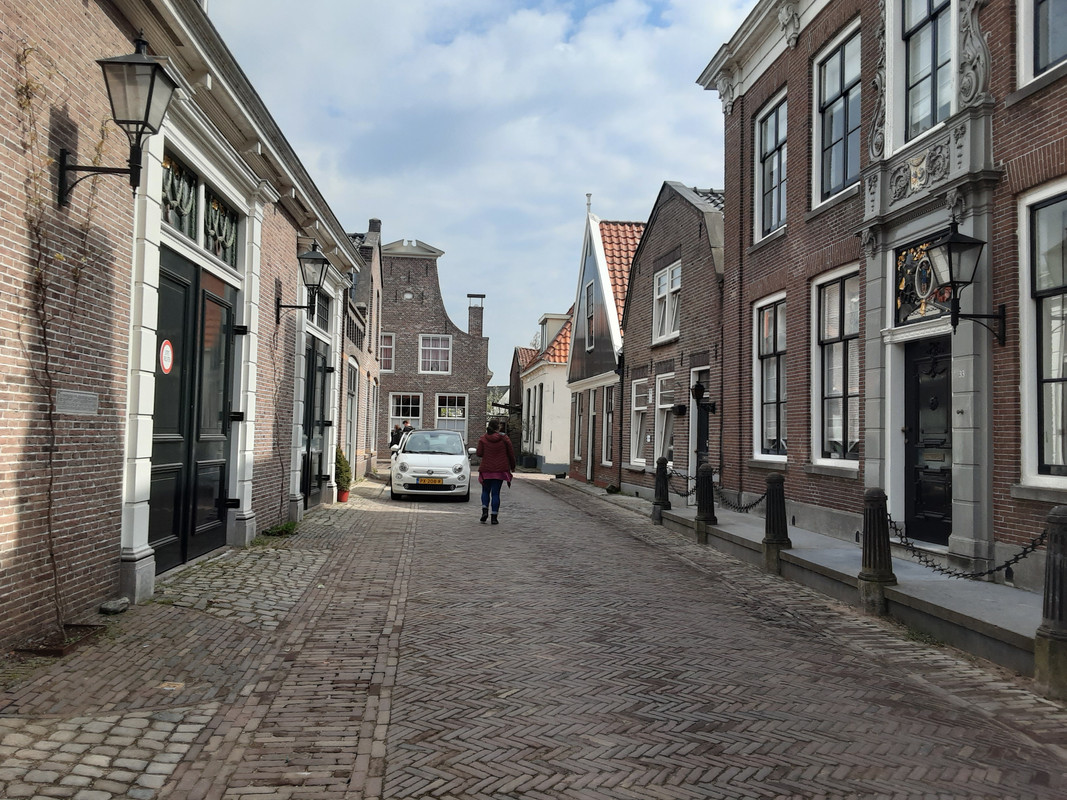

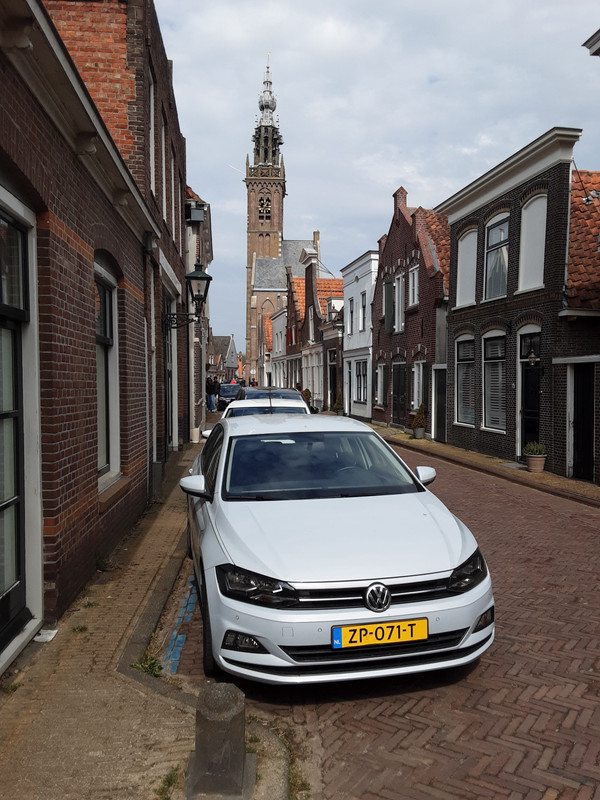
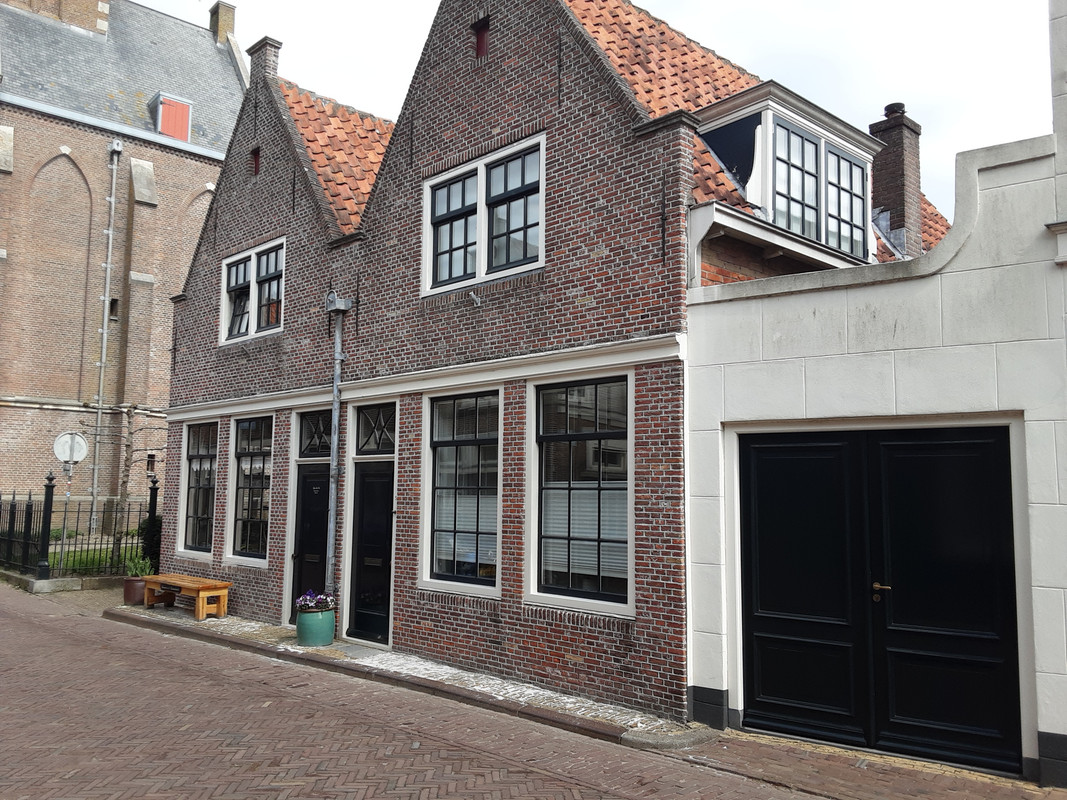
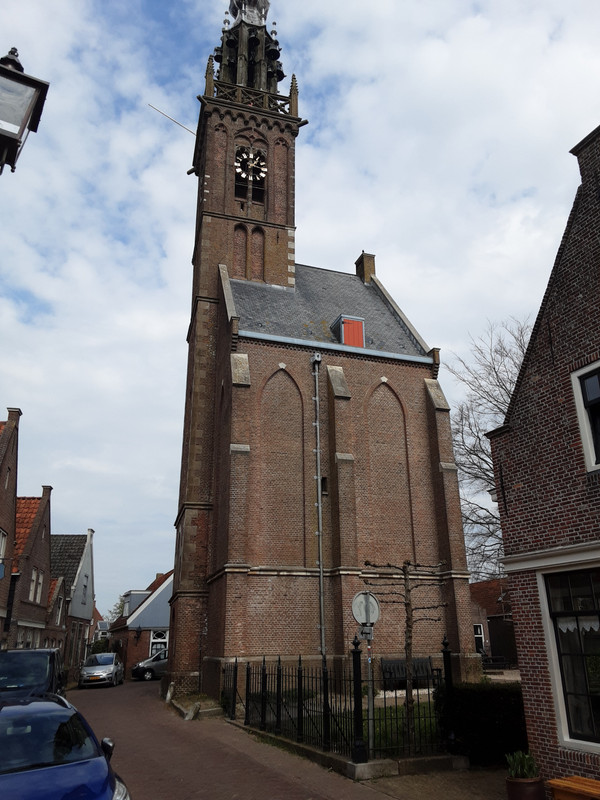
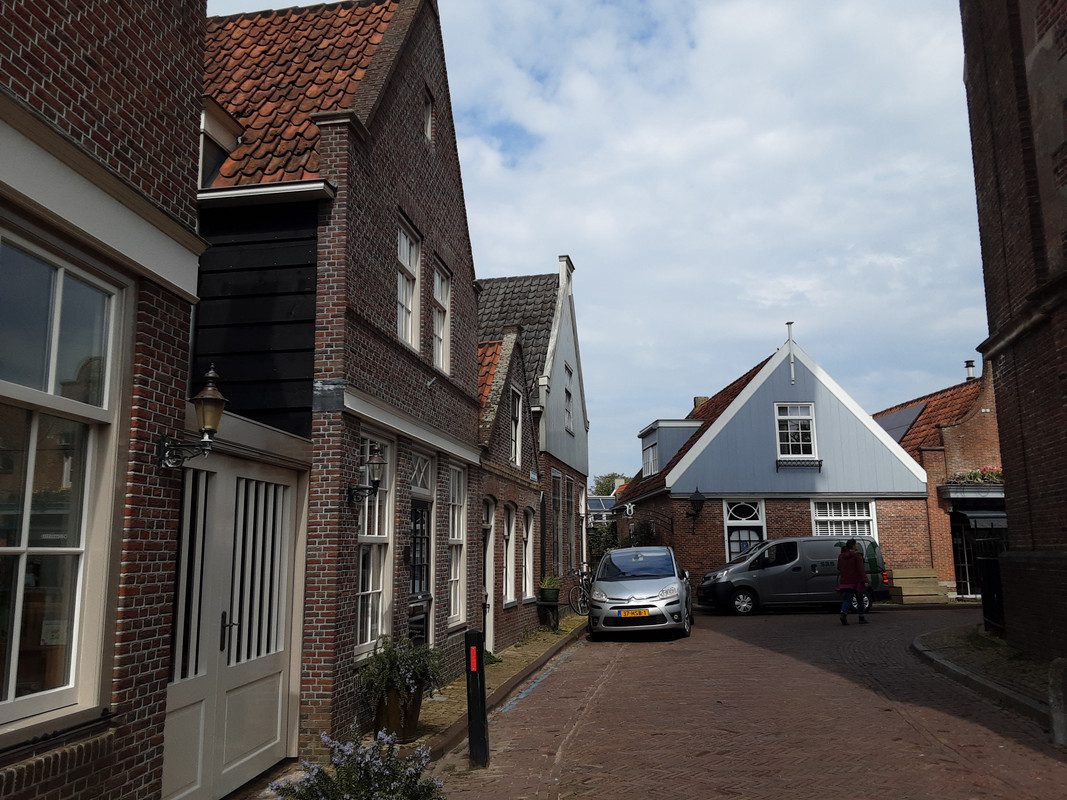

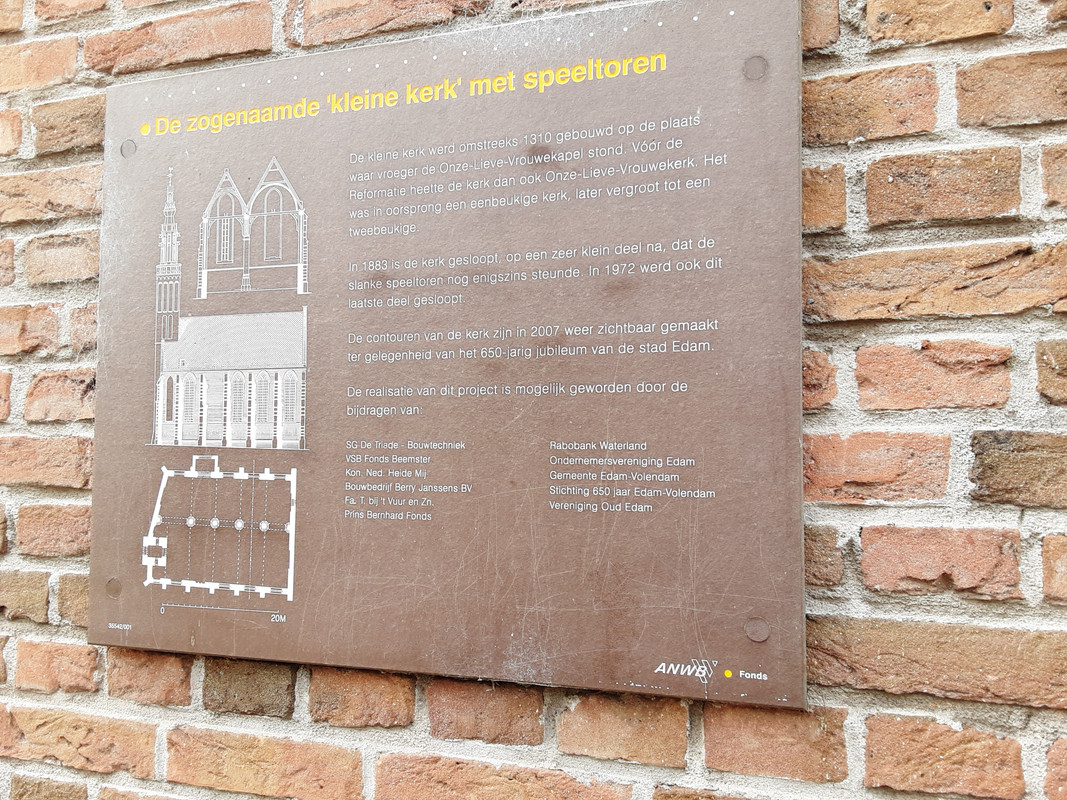
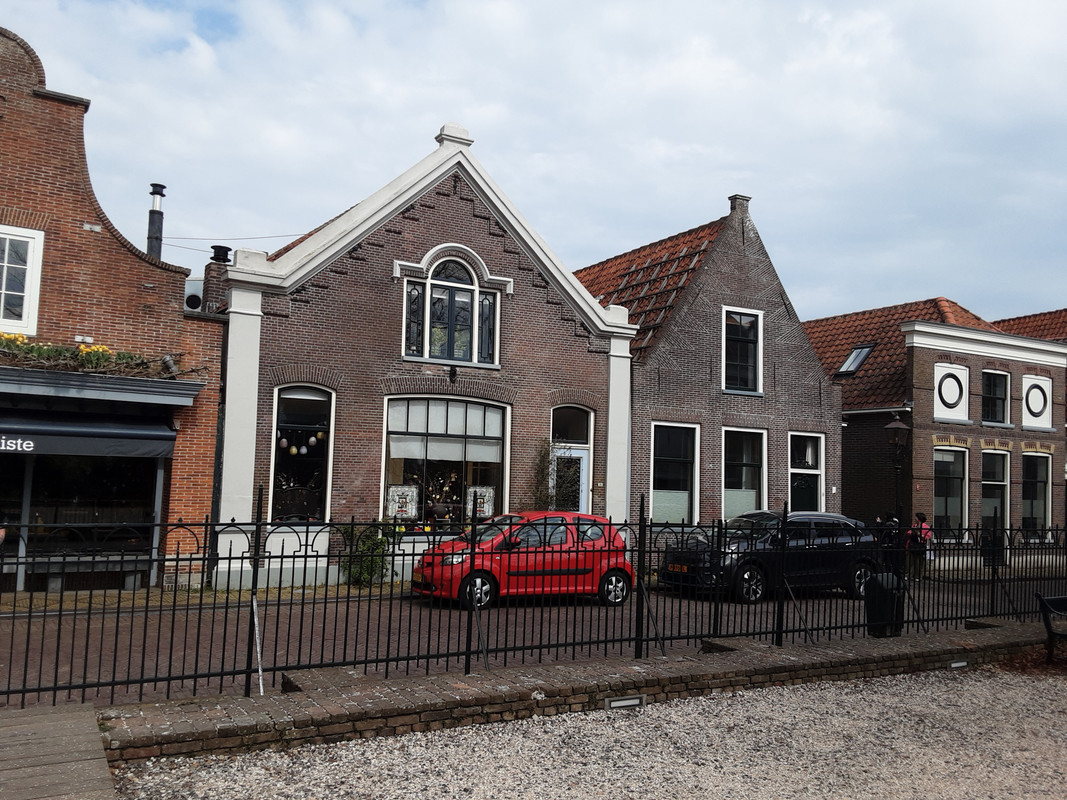
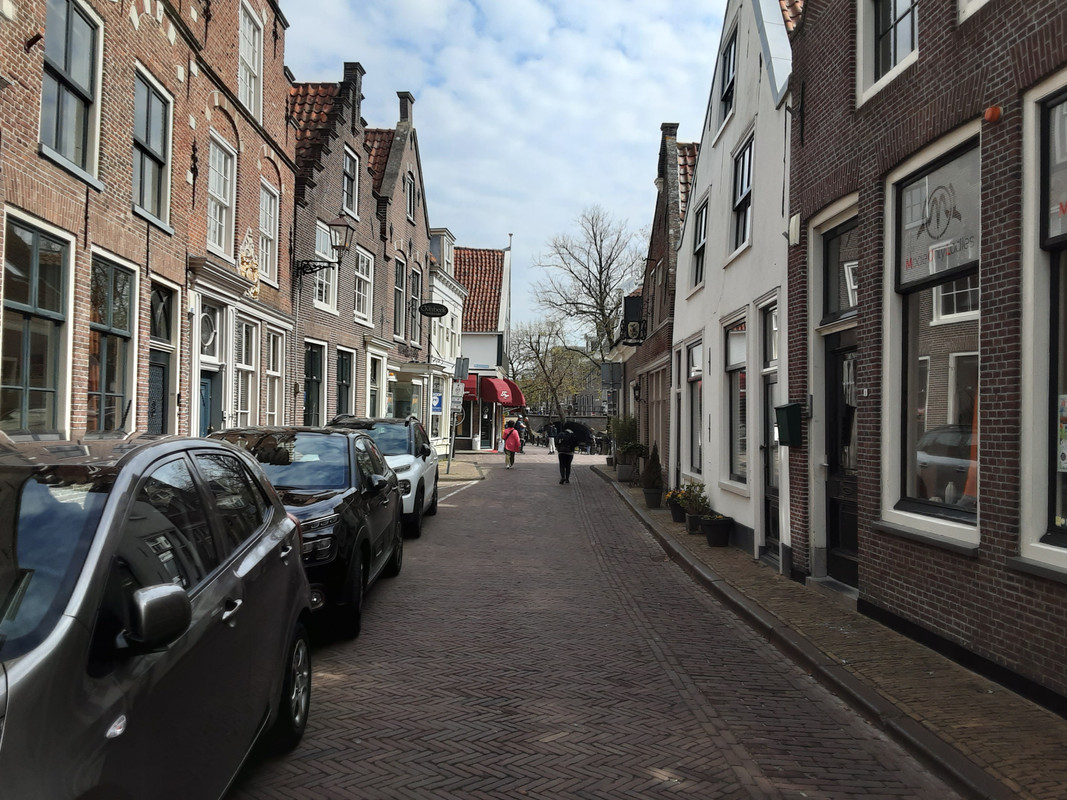
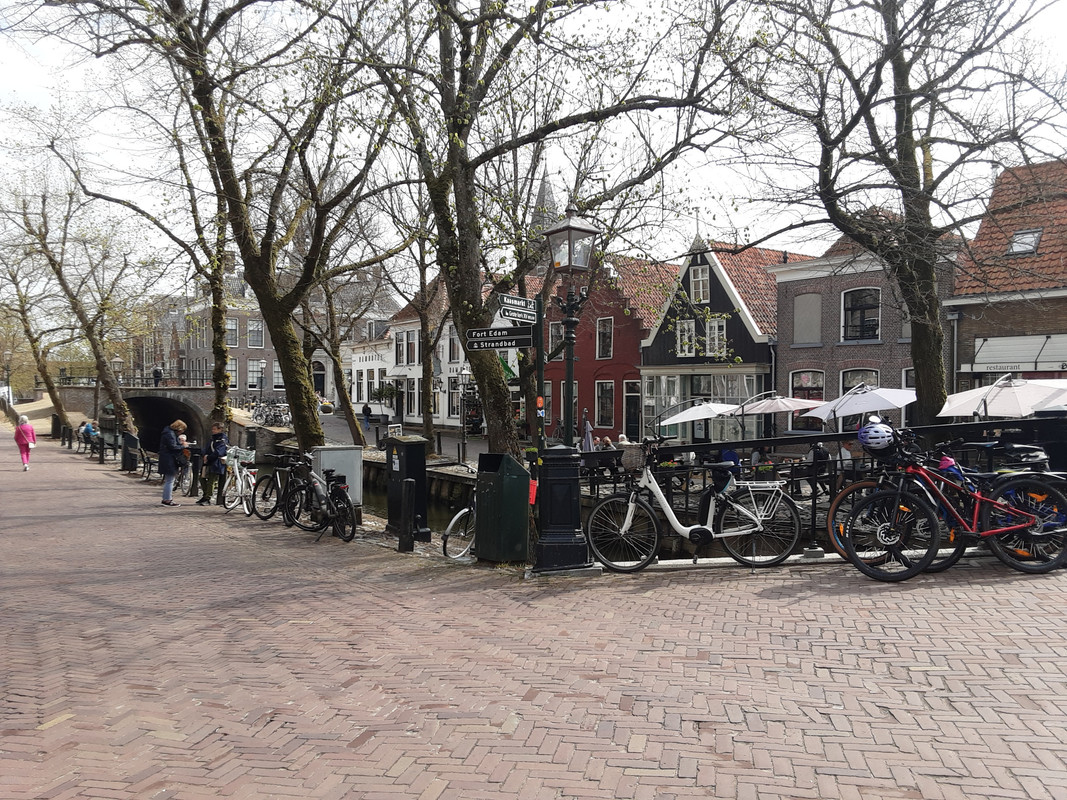
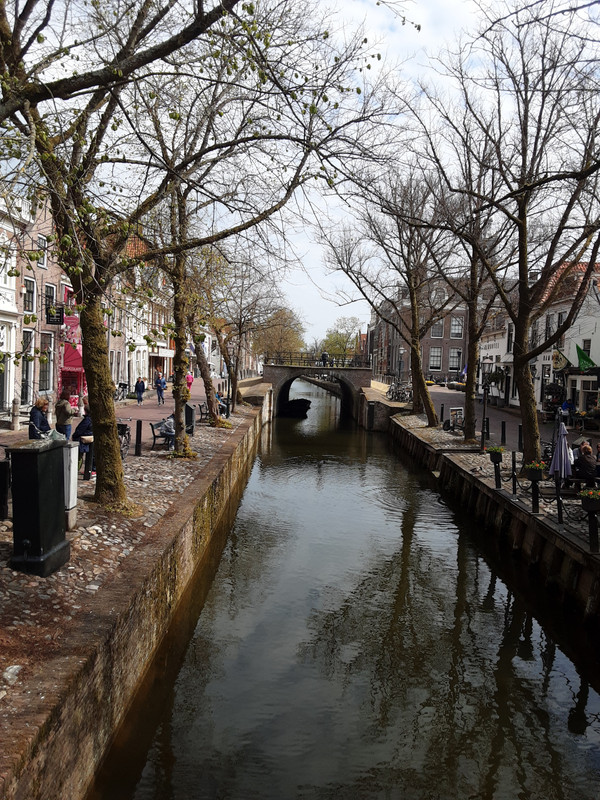
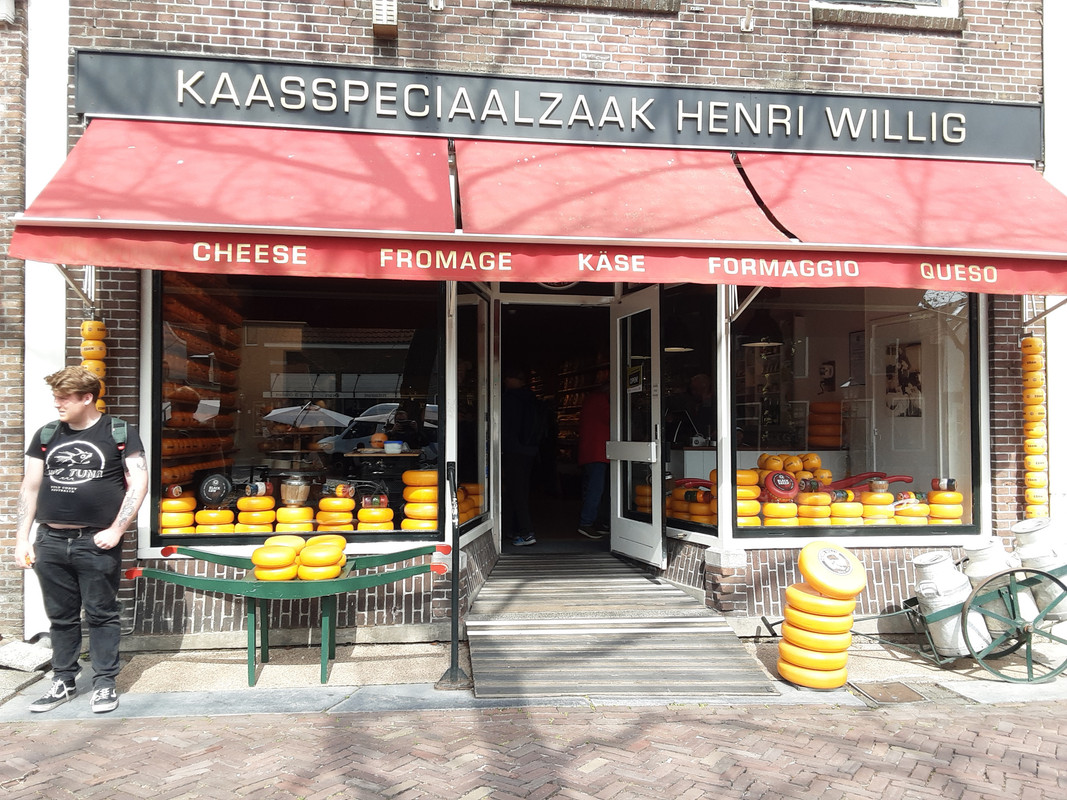
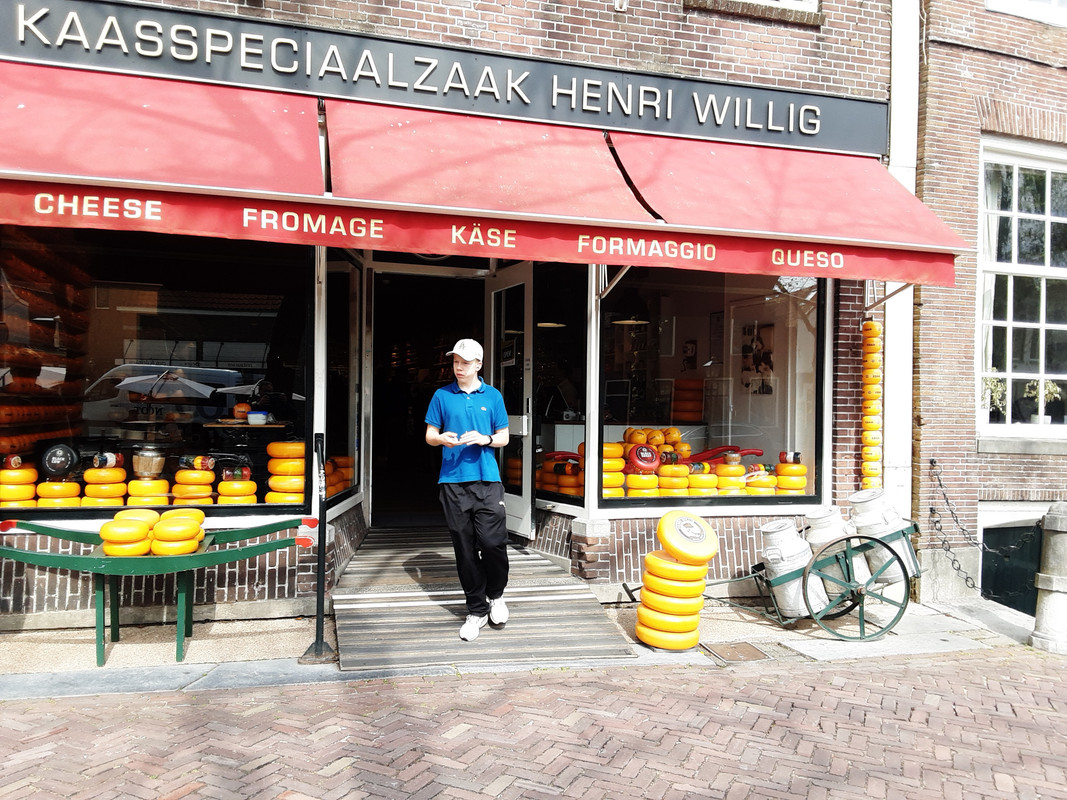
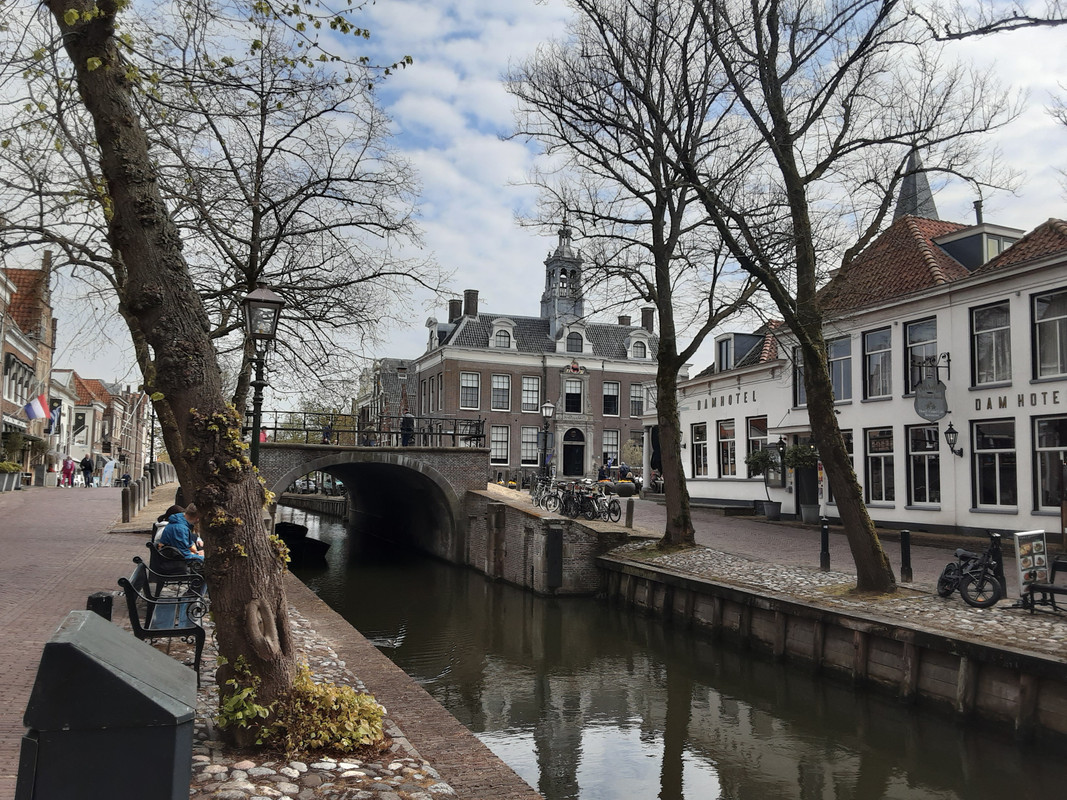
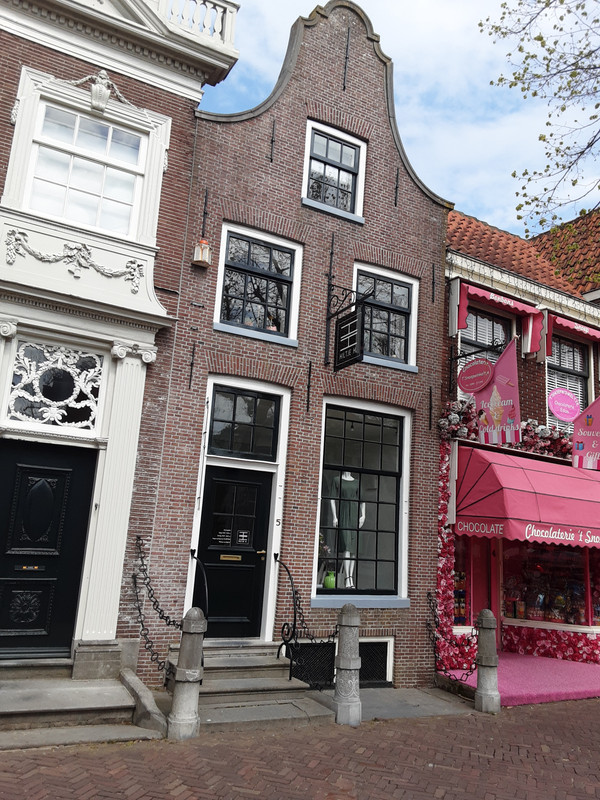
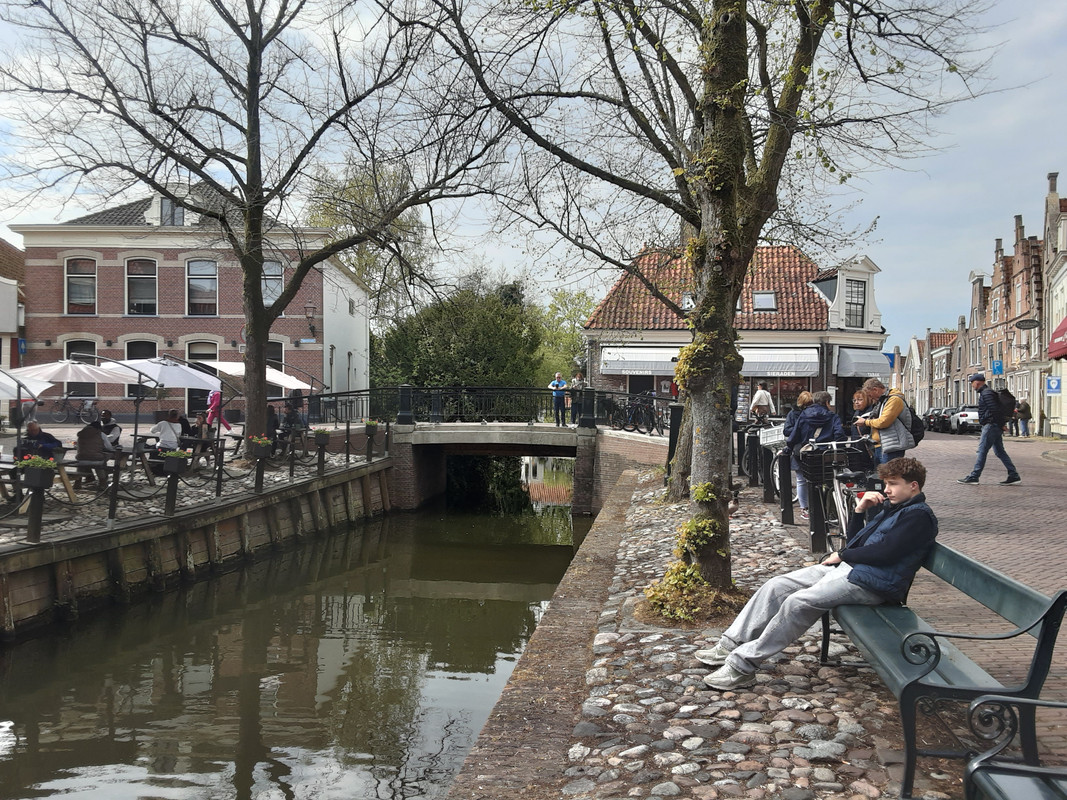
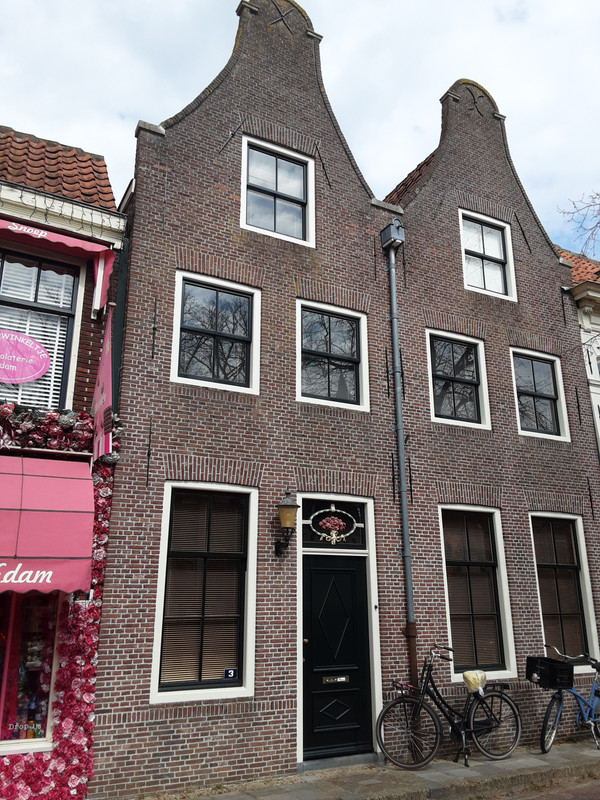

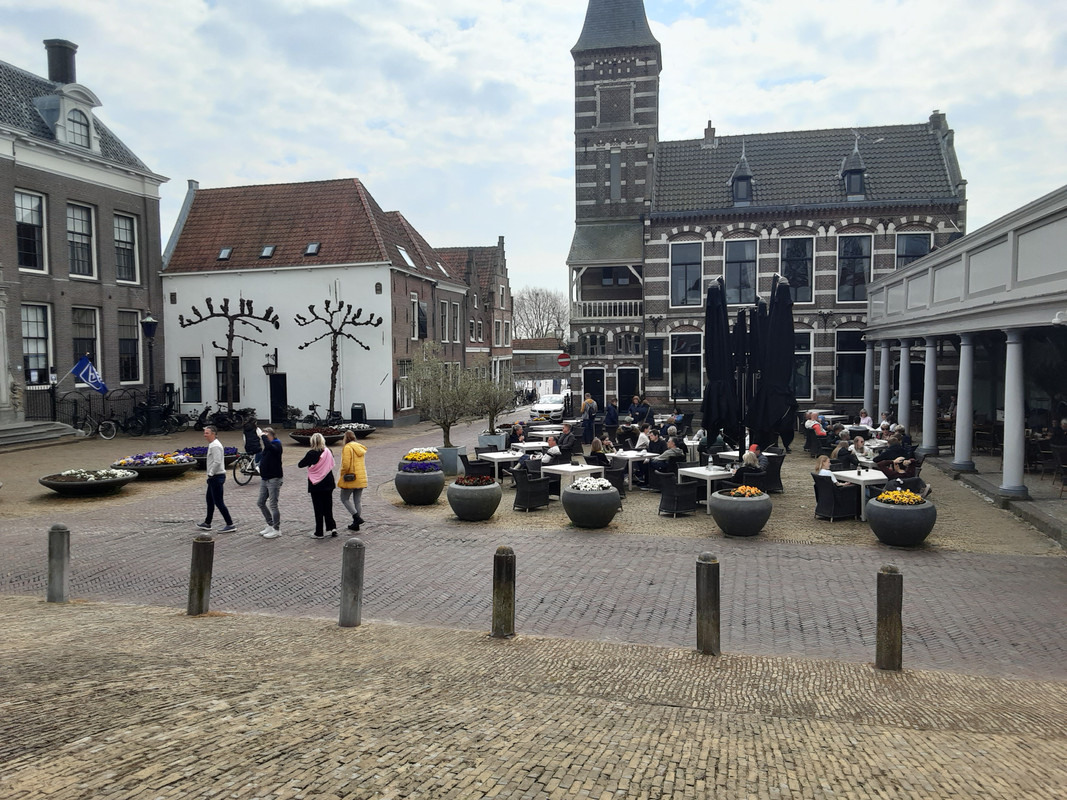
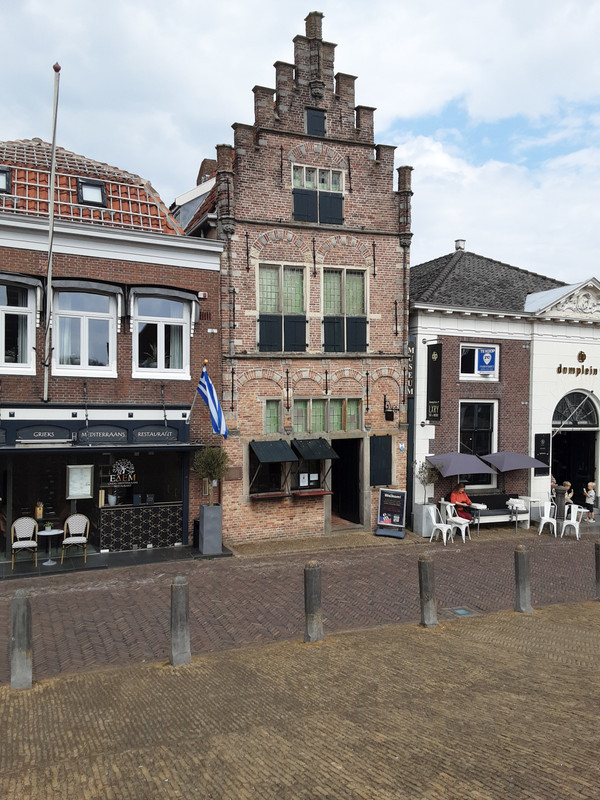
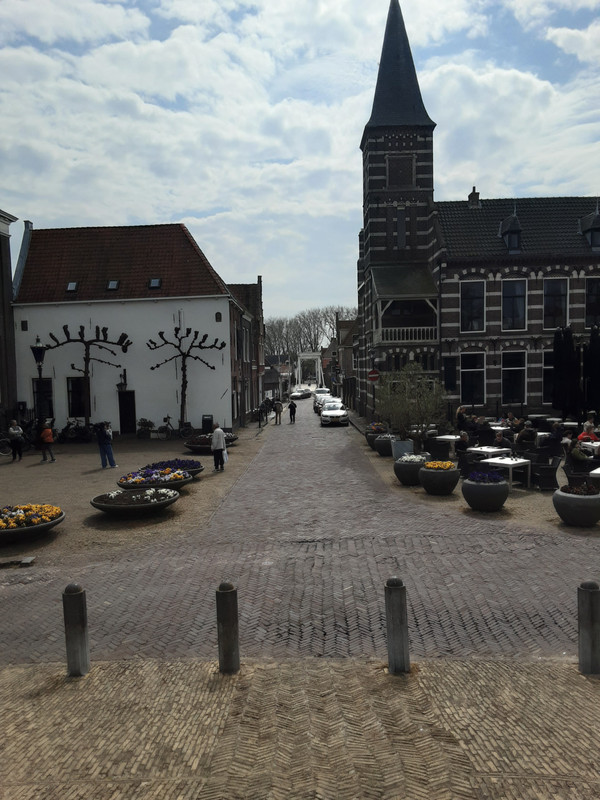
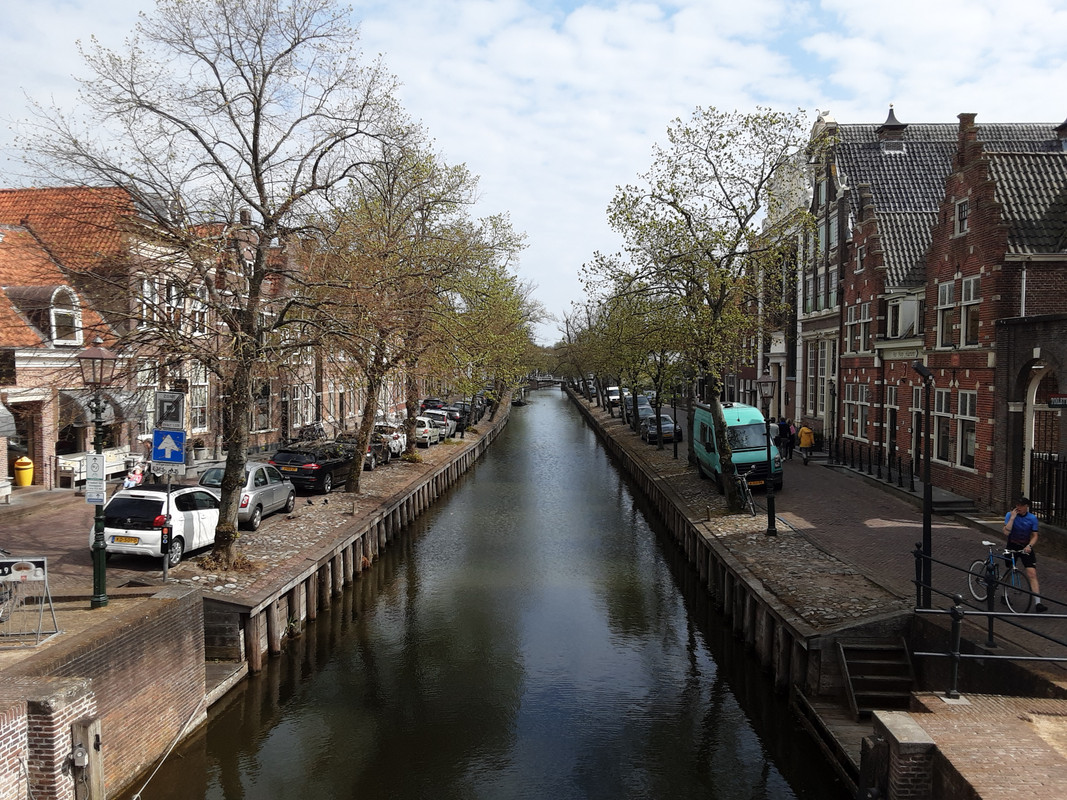
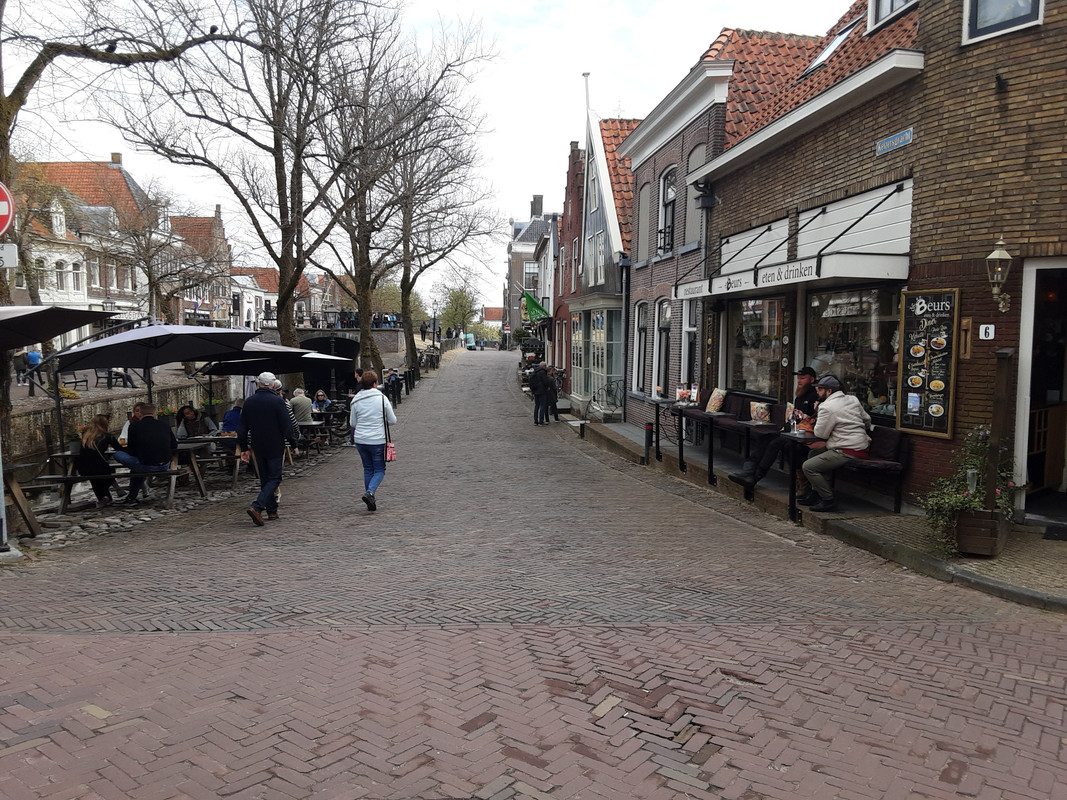
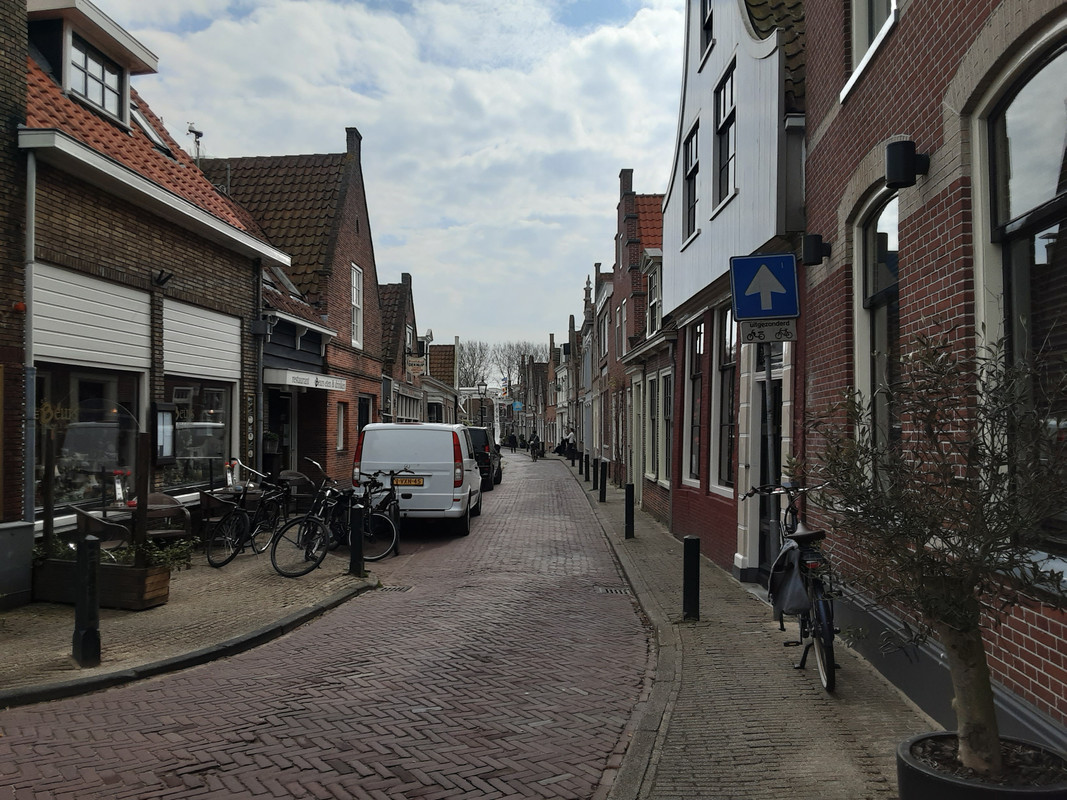
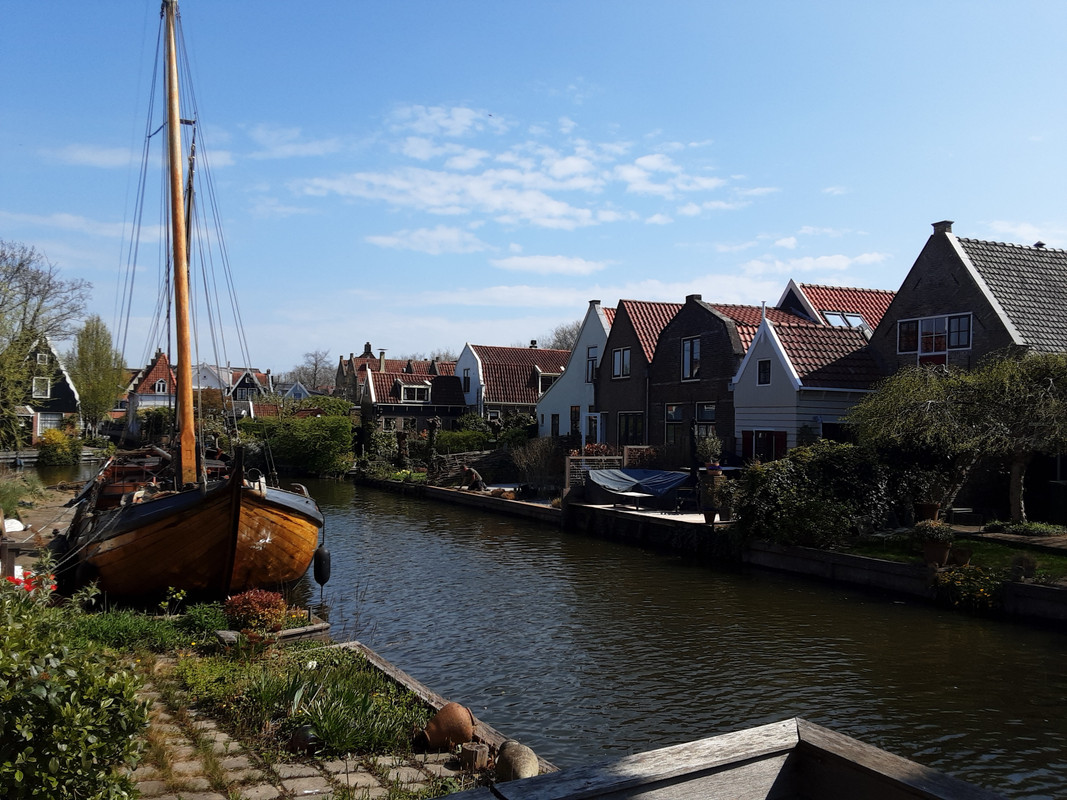
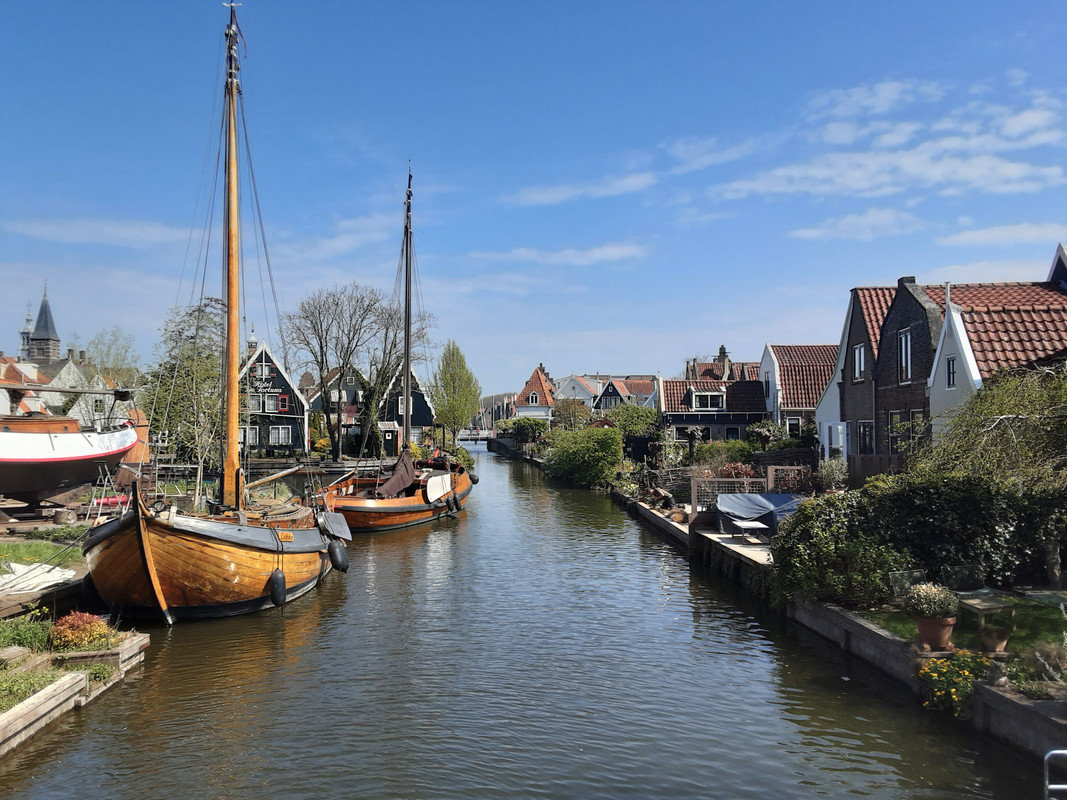
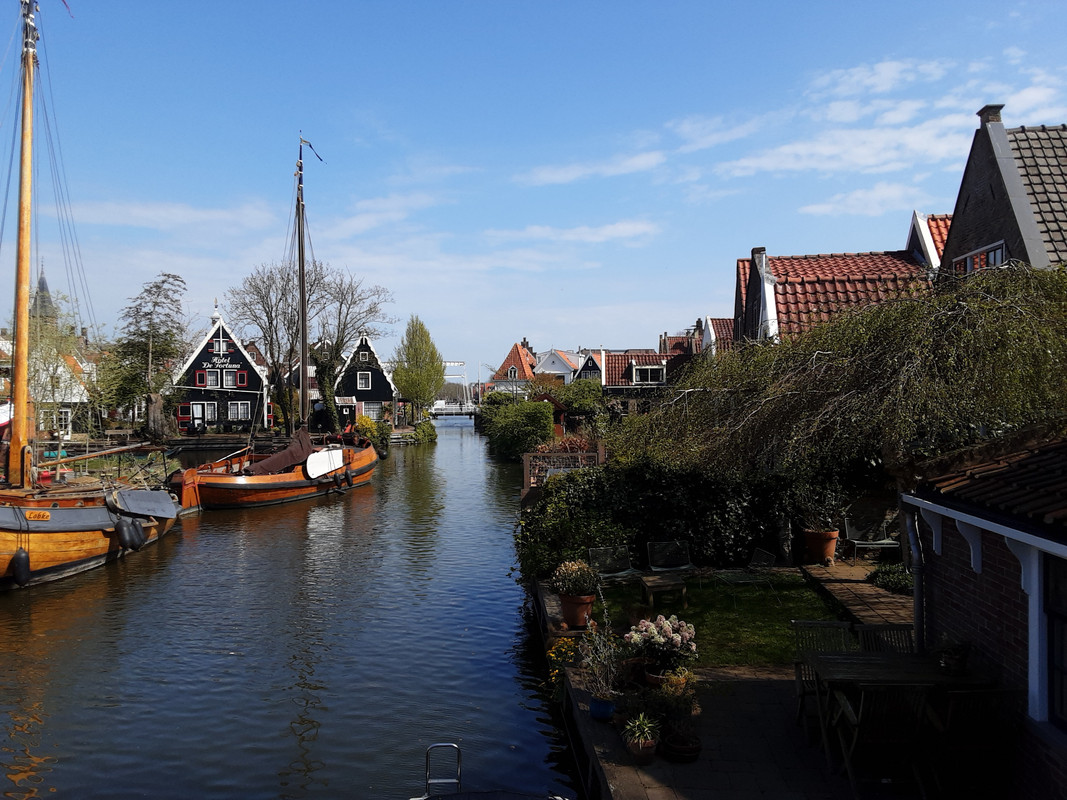
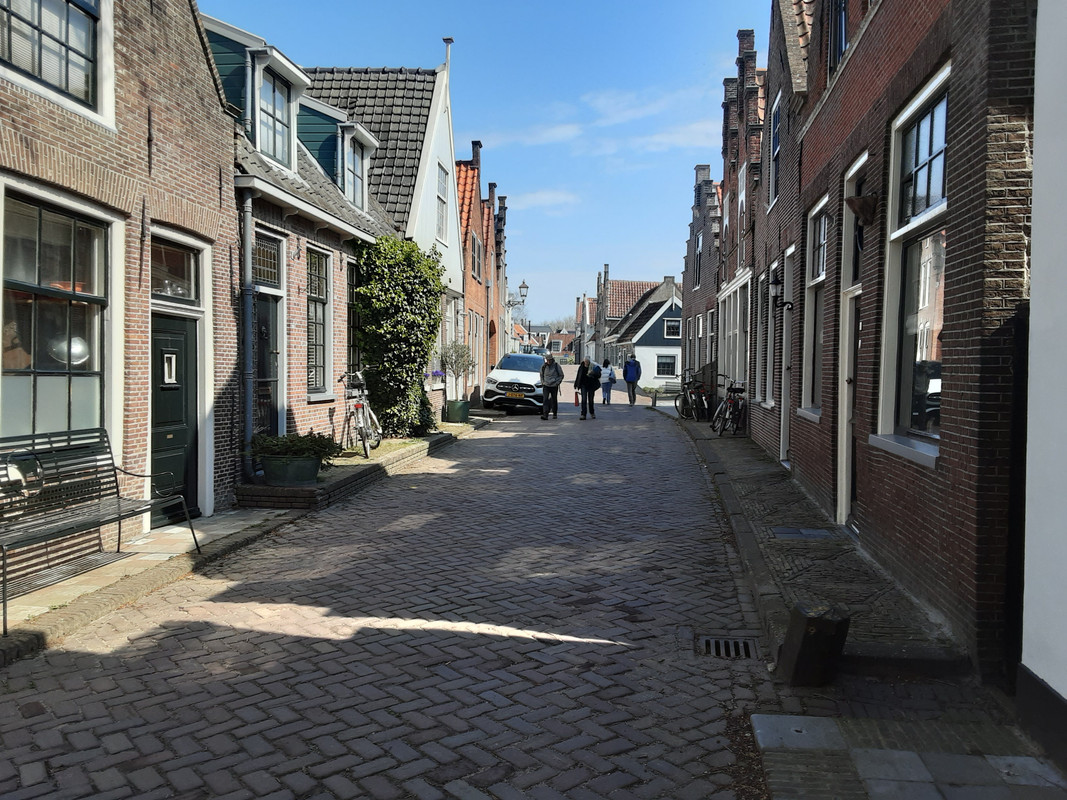
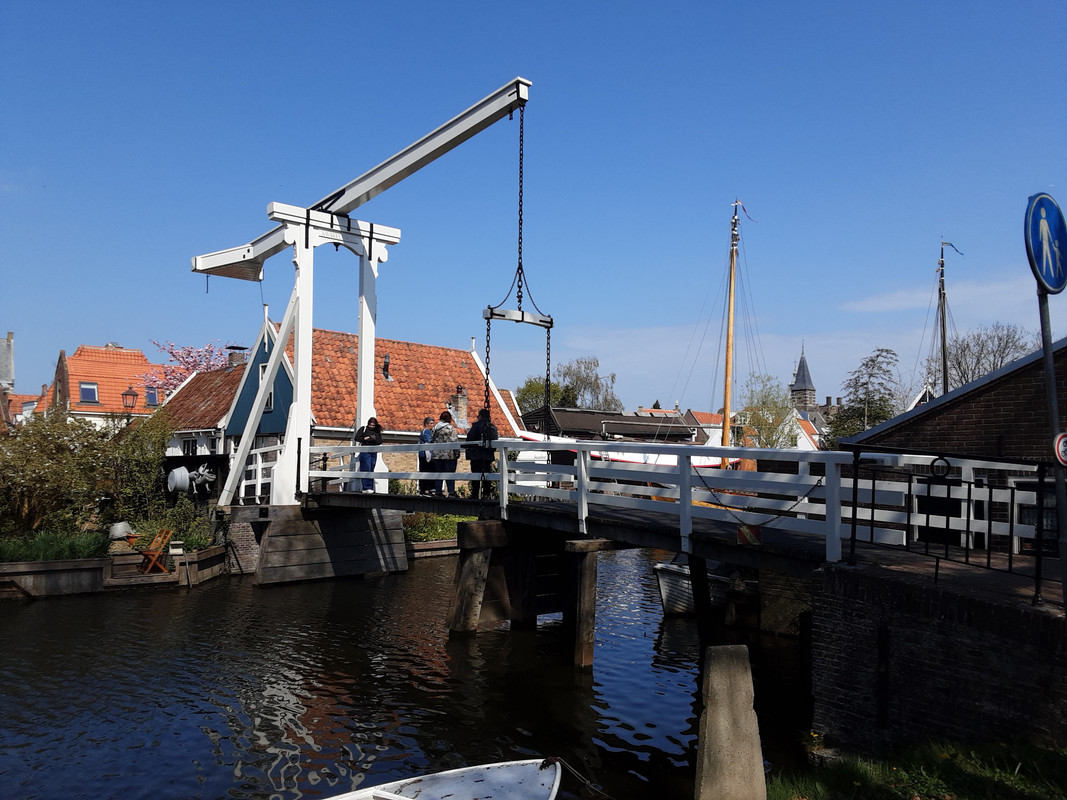
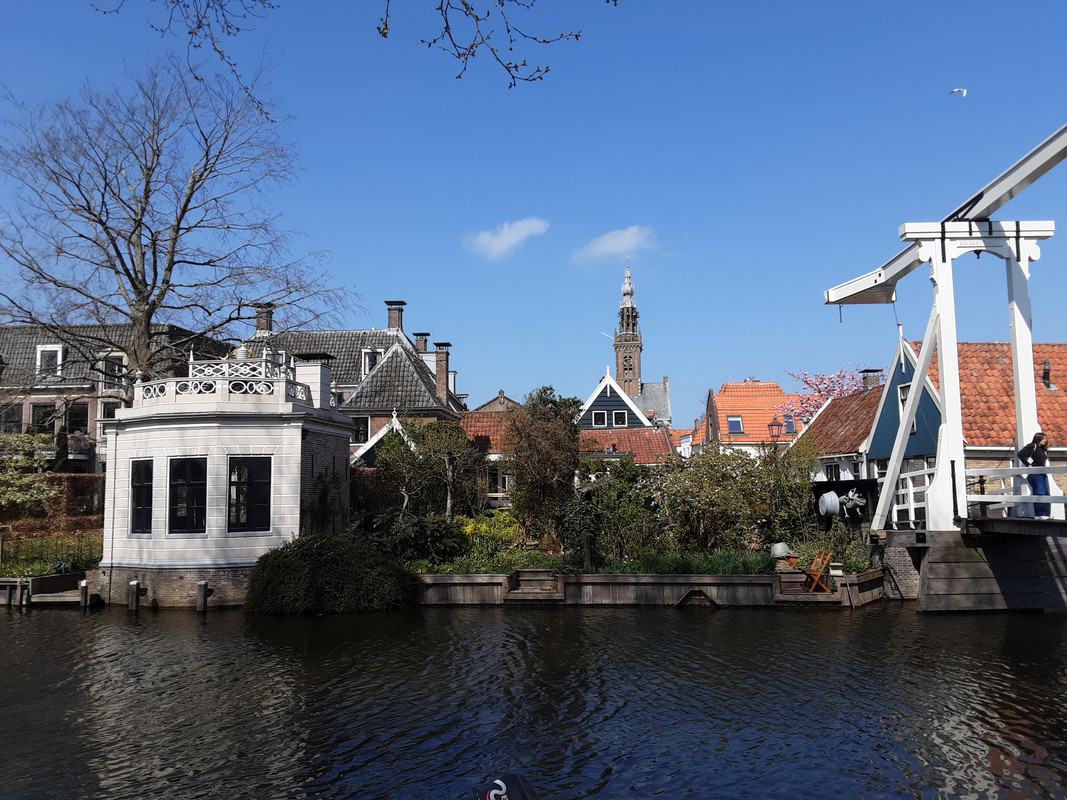
#195 Re: Not So Free Chat » Zaanse Schaanes Windmill Museum, Holland. » 2025-04-13 12:10:22
Pictures from Haarlem.
This is the courtyard in the Frans Hals museum.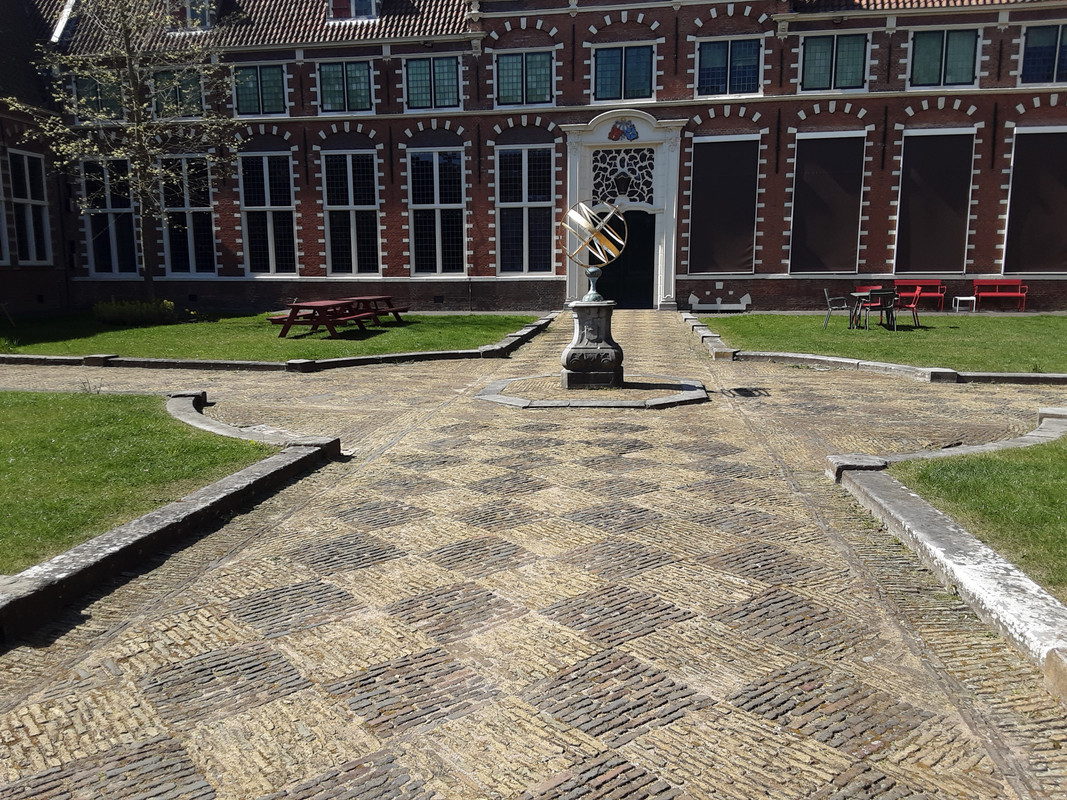
*
*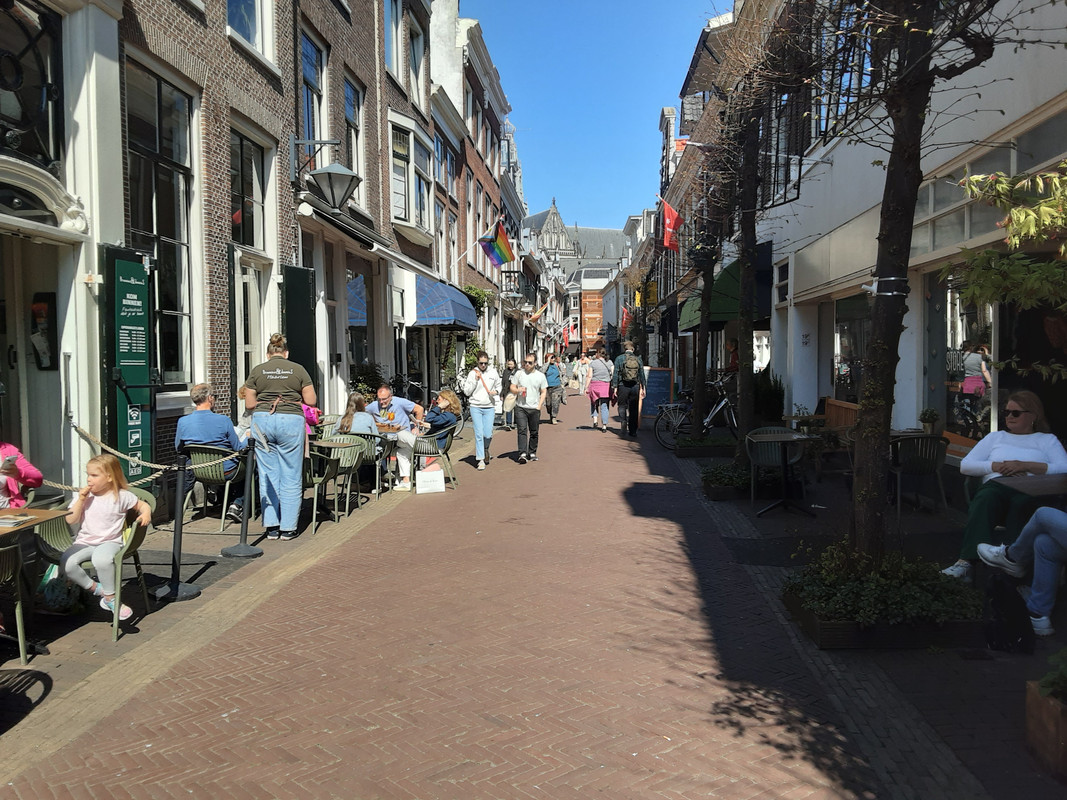
*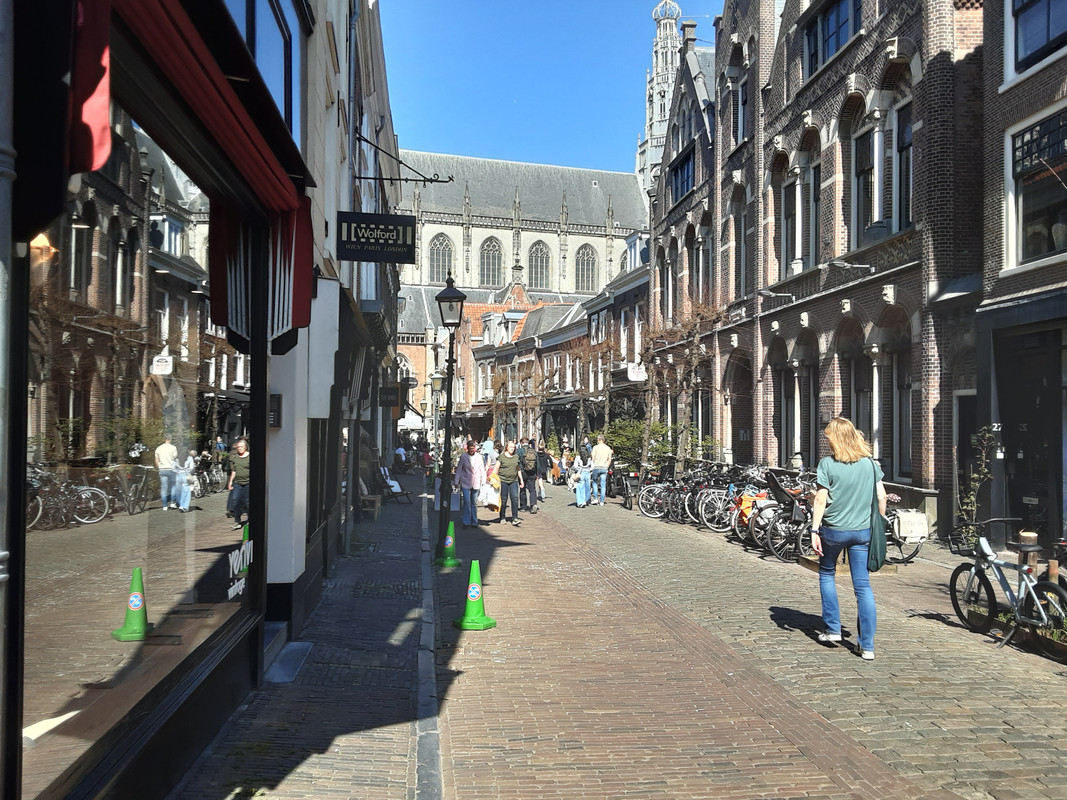
*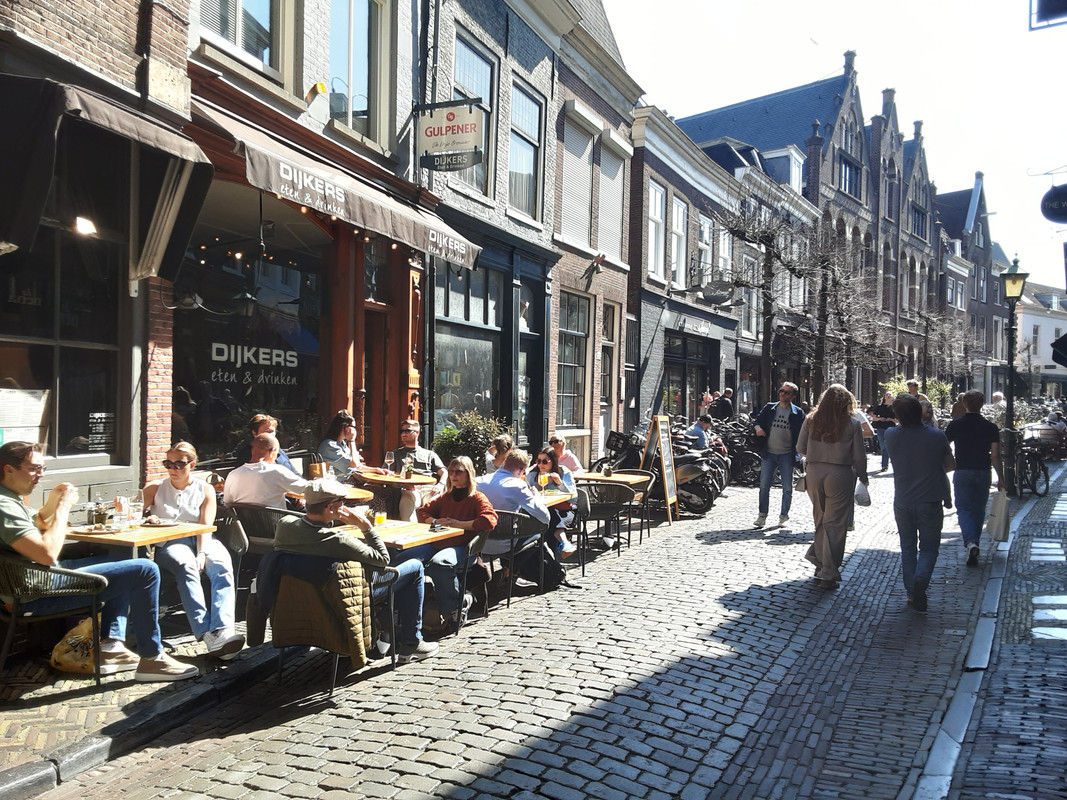
*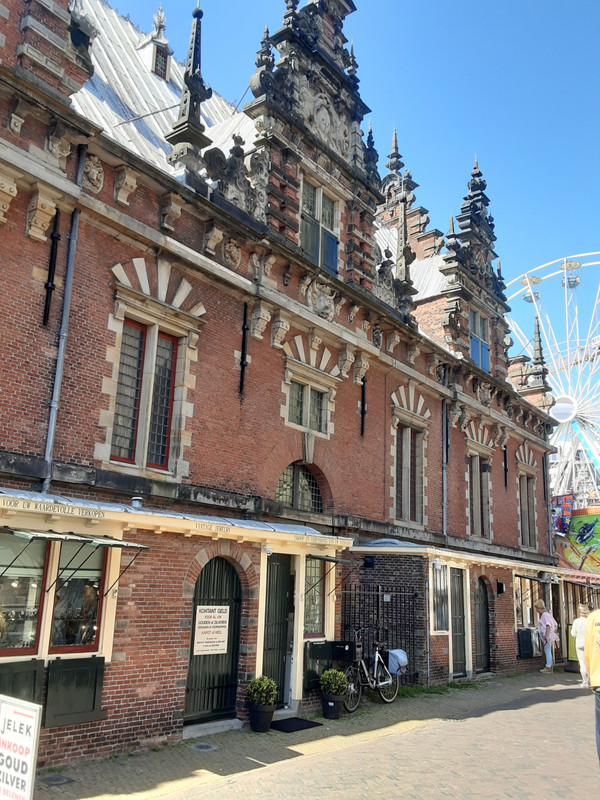
*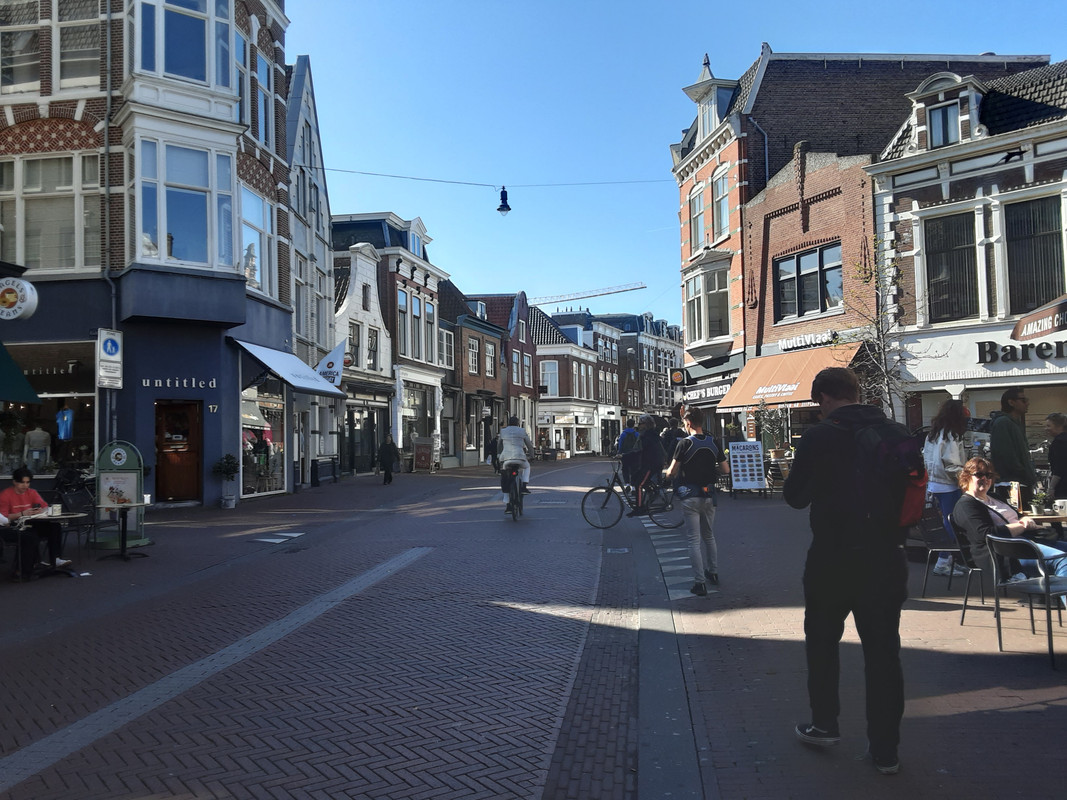
*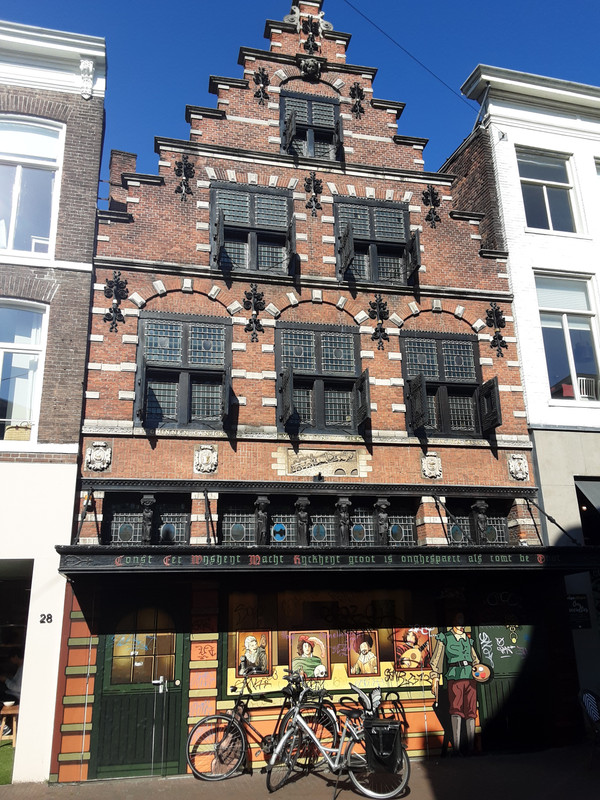
*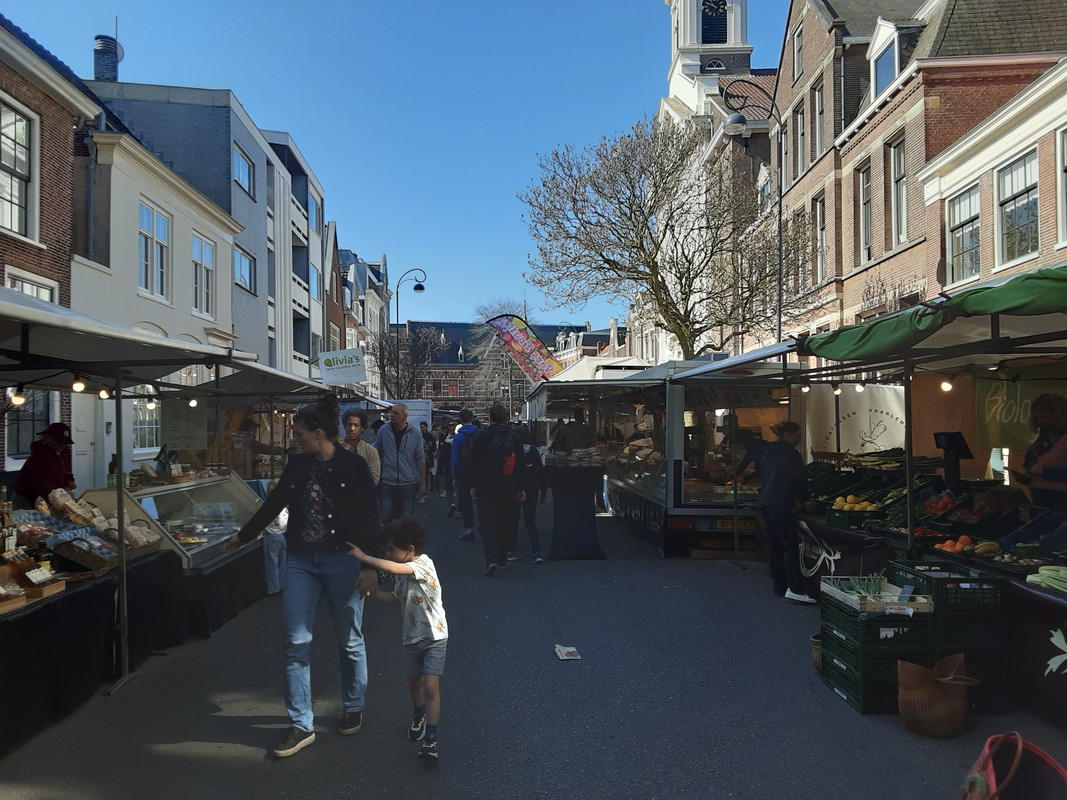
*
*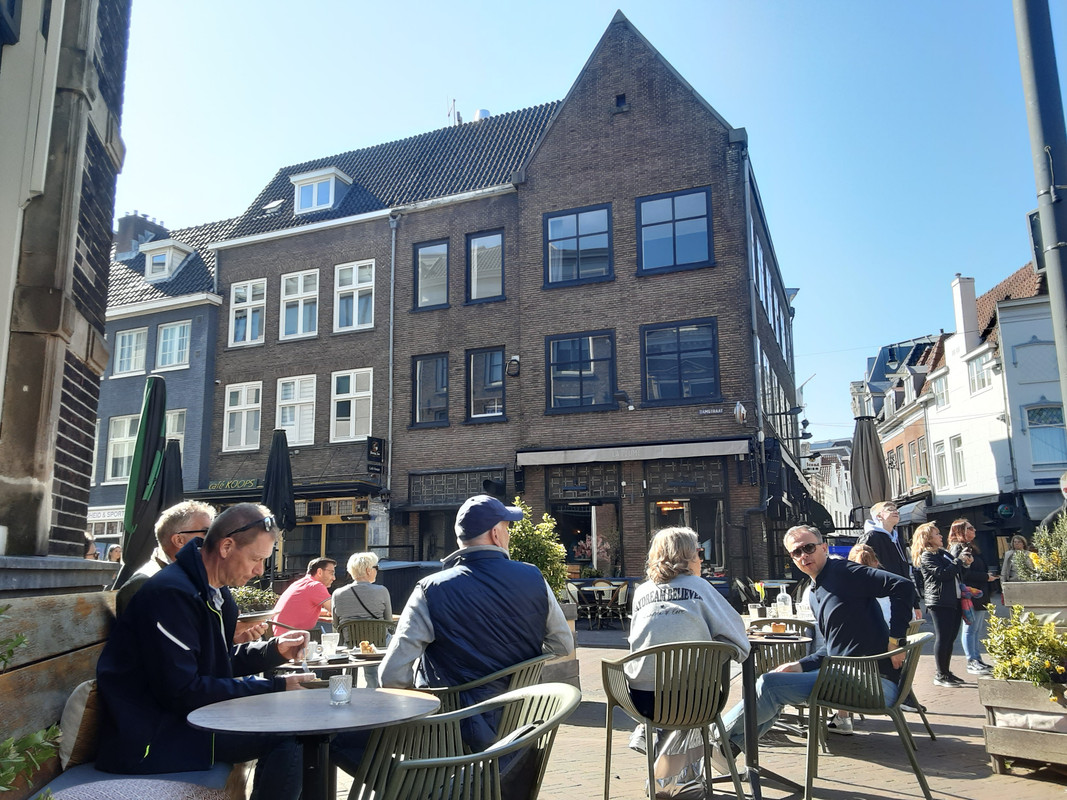
*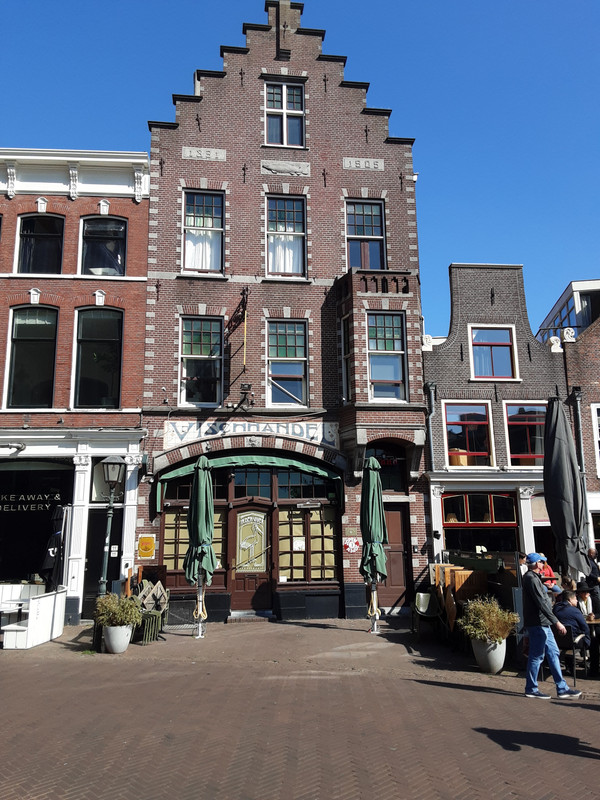
*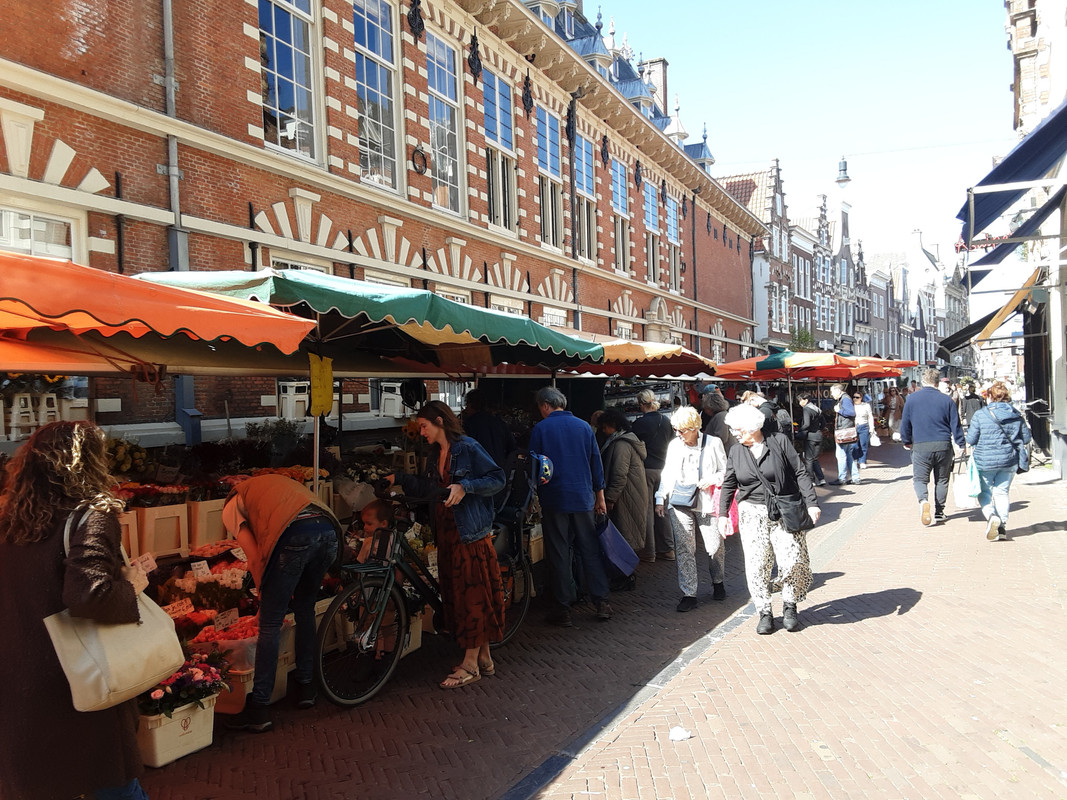
*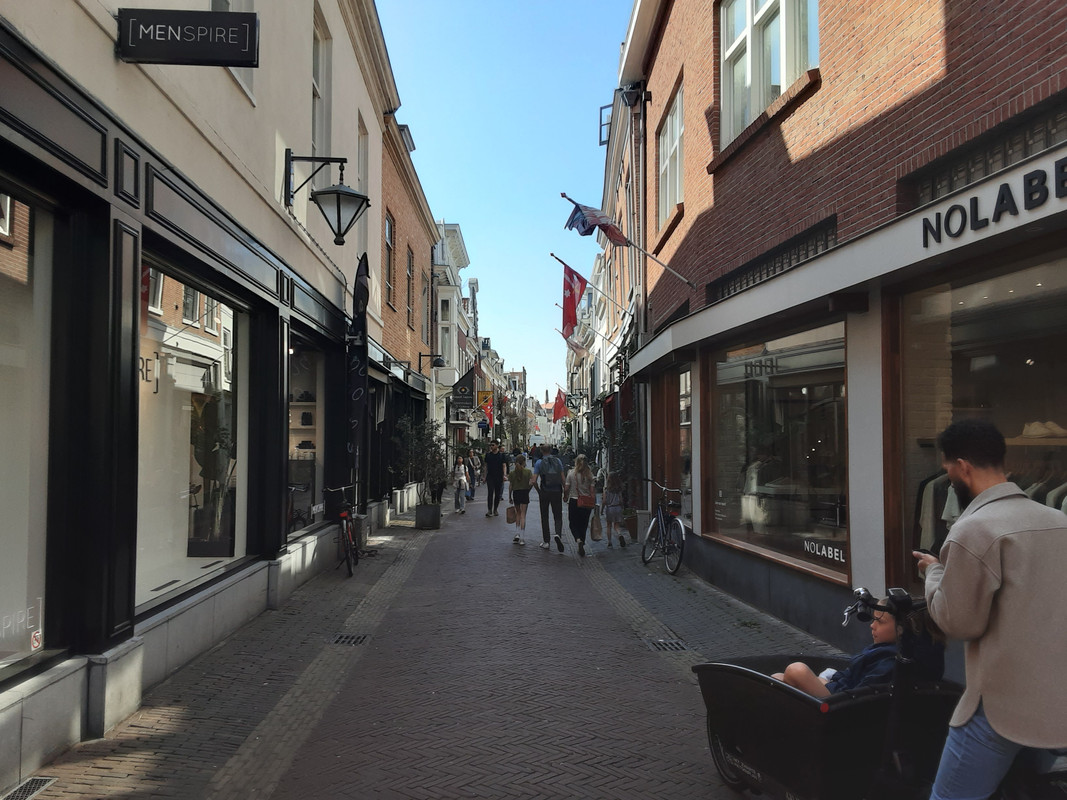
*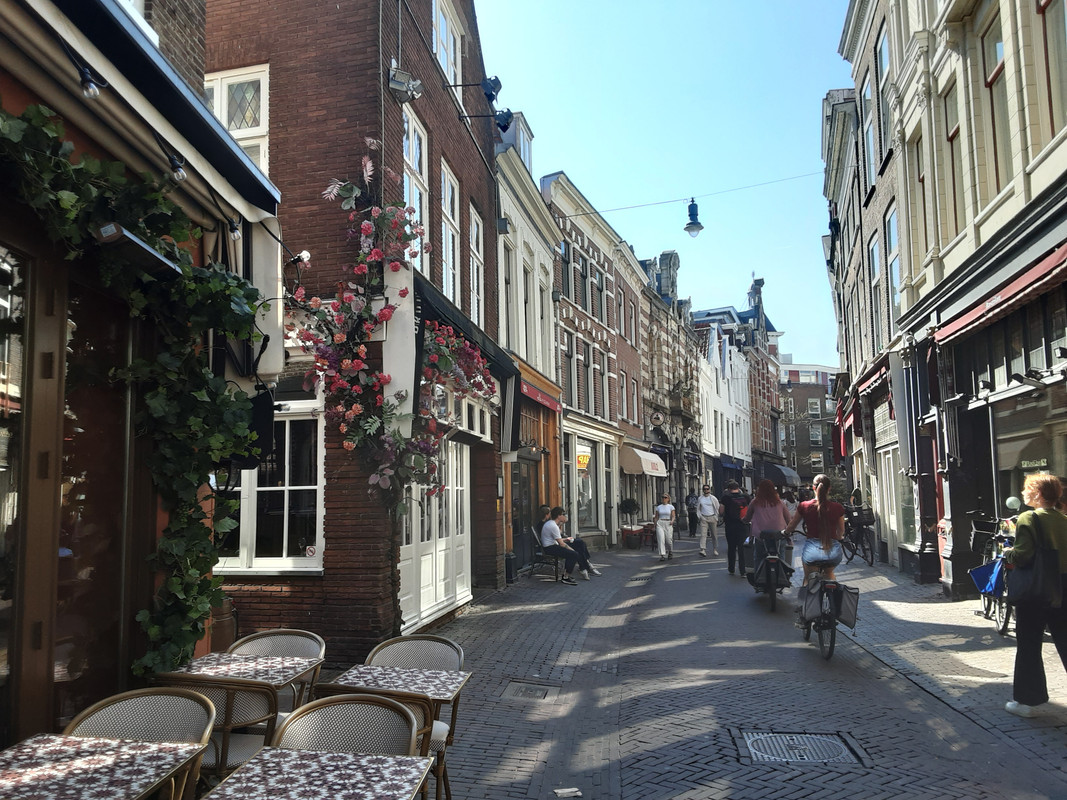
*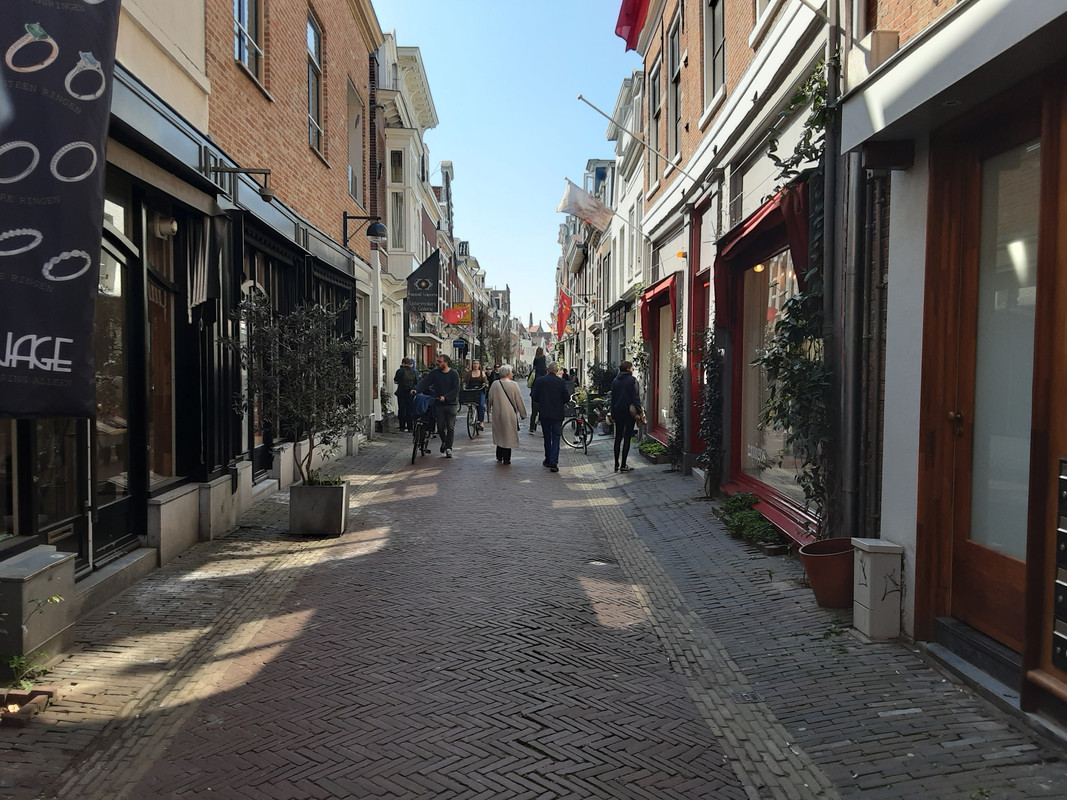
*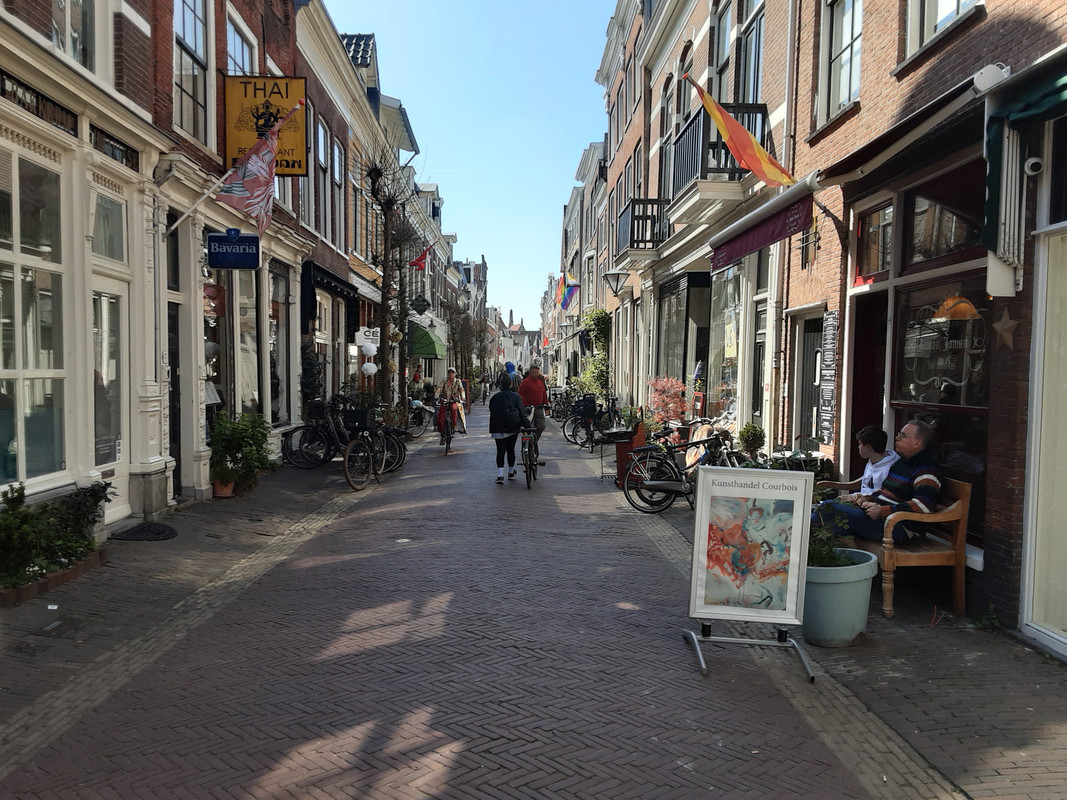
*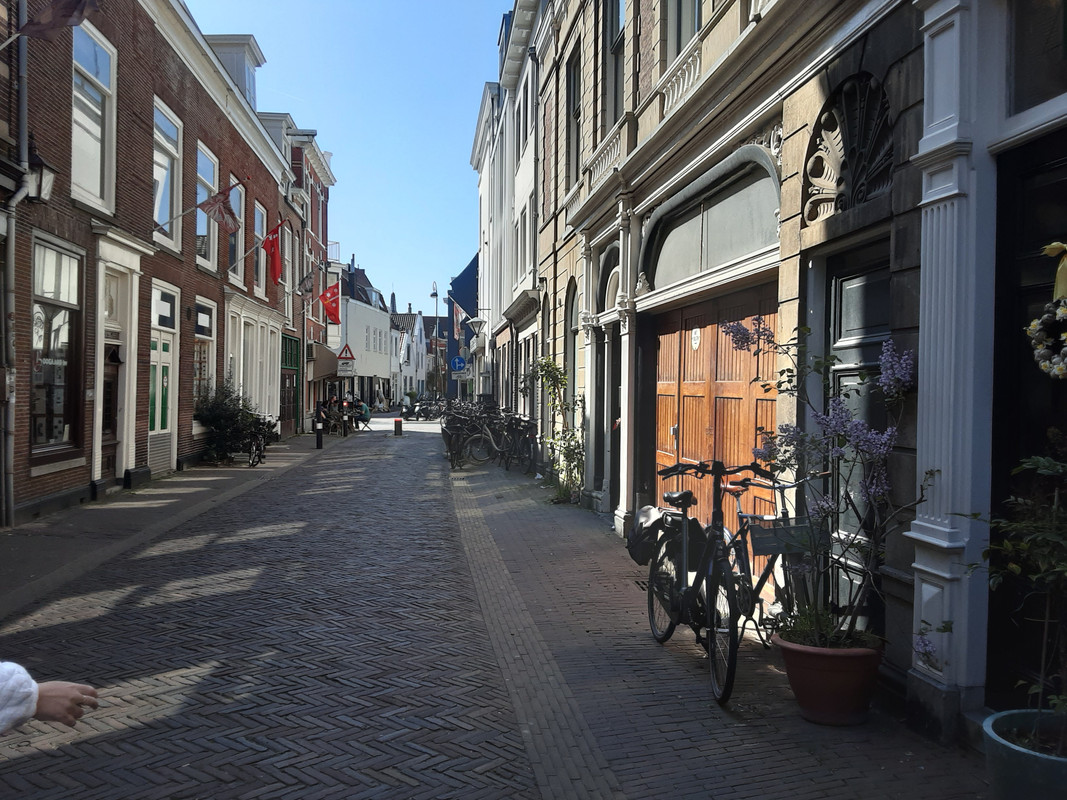
*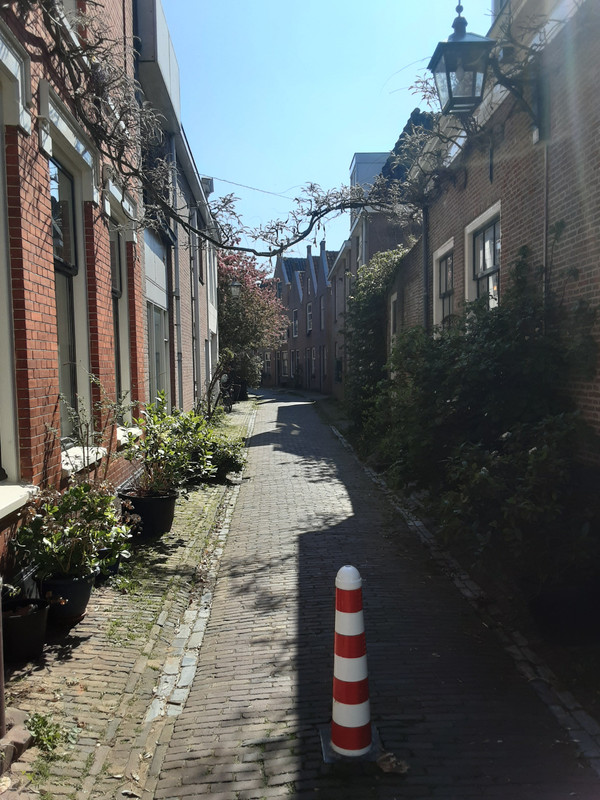
*
*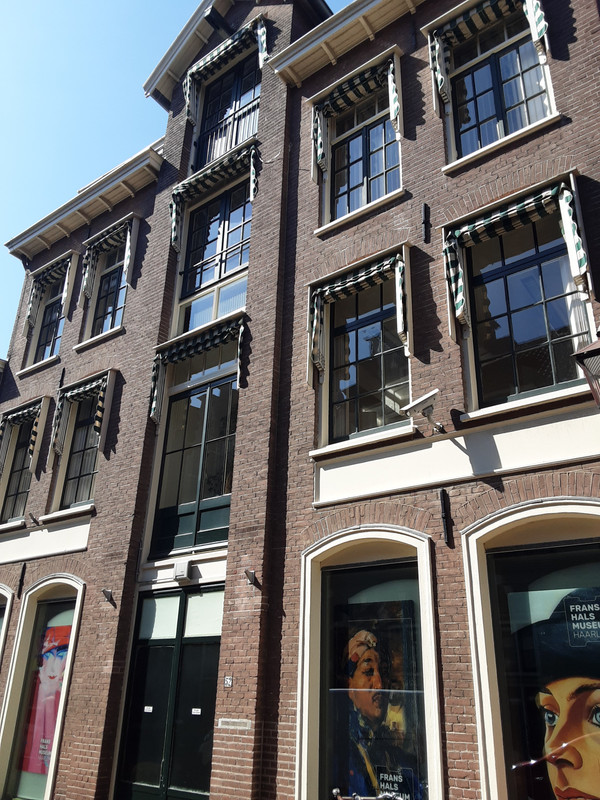
*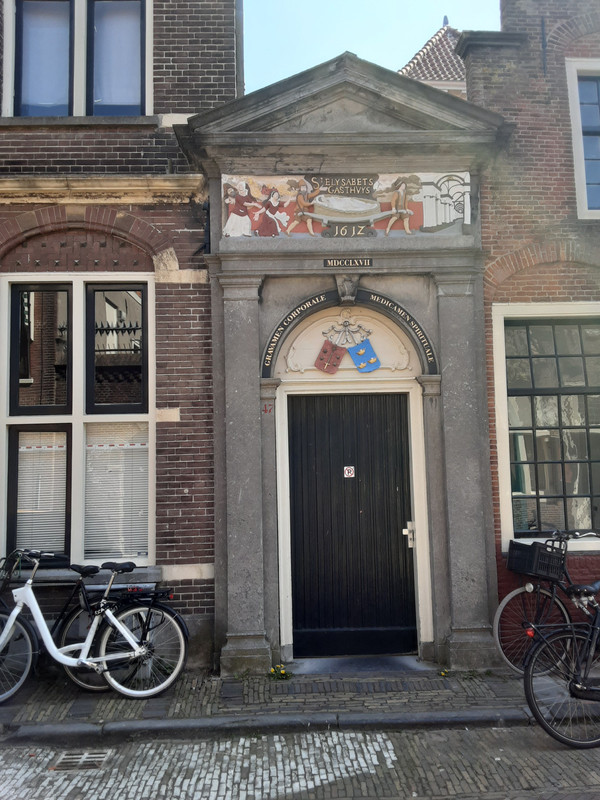
*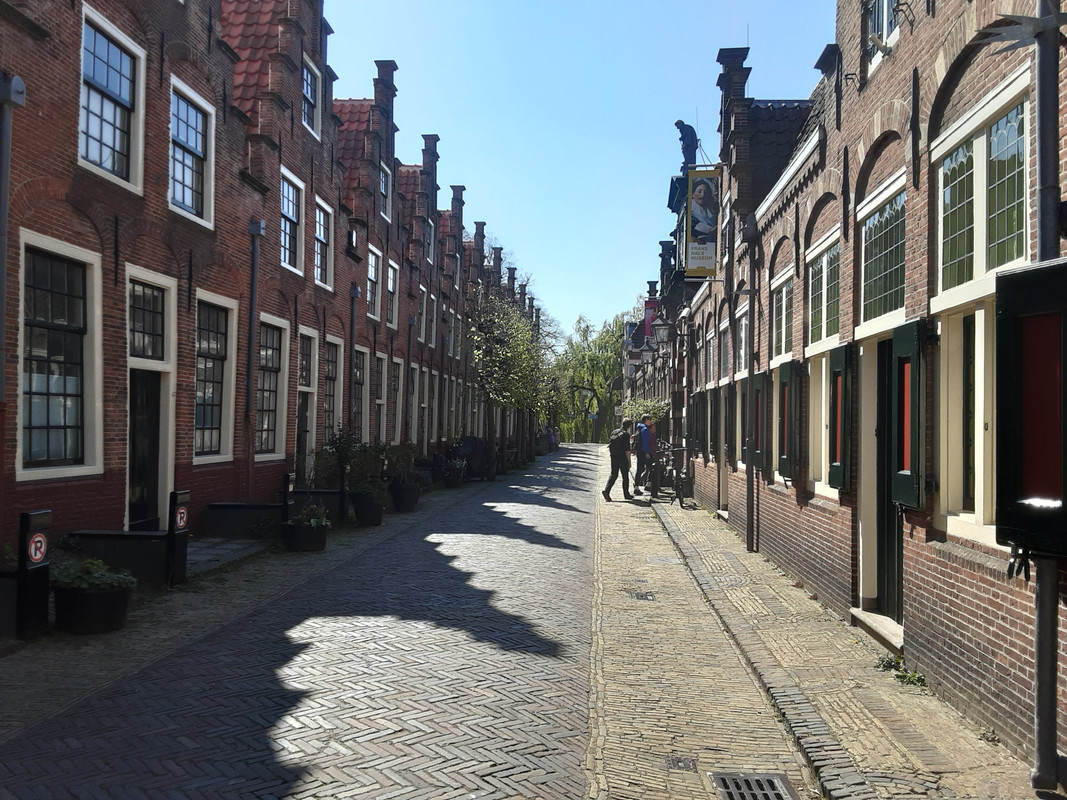
*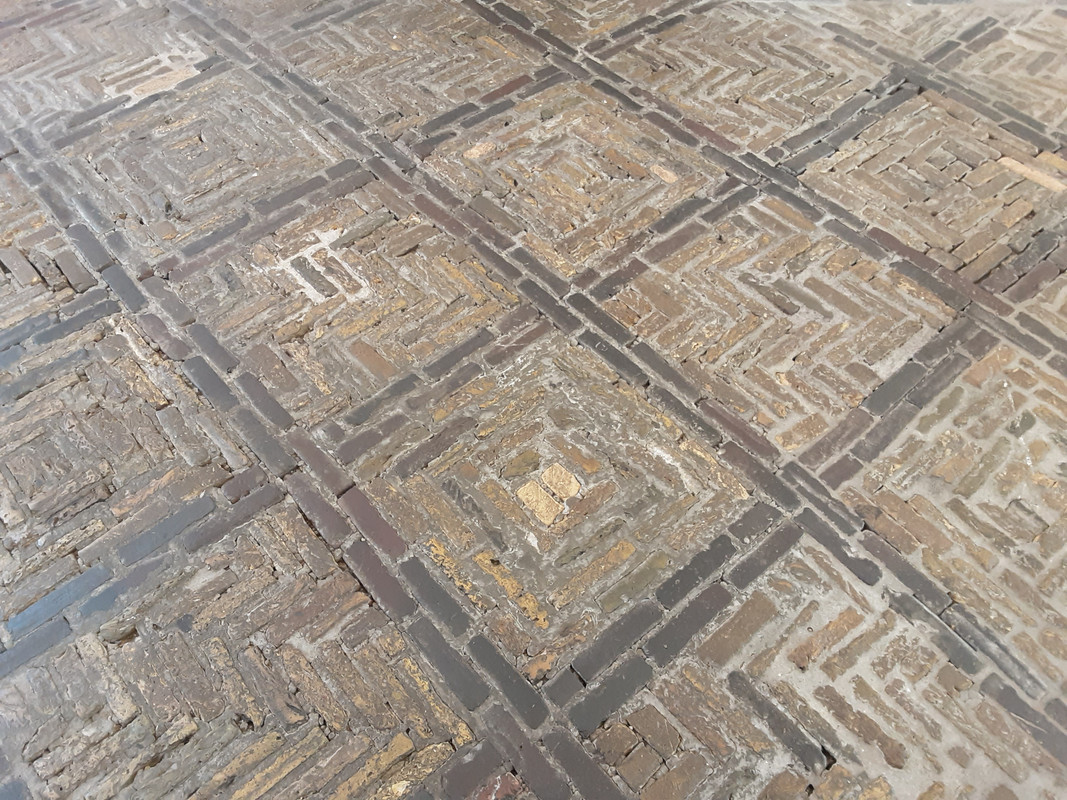
#196 Re: Not So Free Chat » Zaanse Schaanes Windmill Museum, Holland. » 2025-04-12 12:37:27
Het Jonge Schaap is a wind powered sawmill. One of the mill mechanisms is a winch that pulls logs up a ramp, out of the water.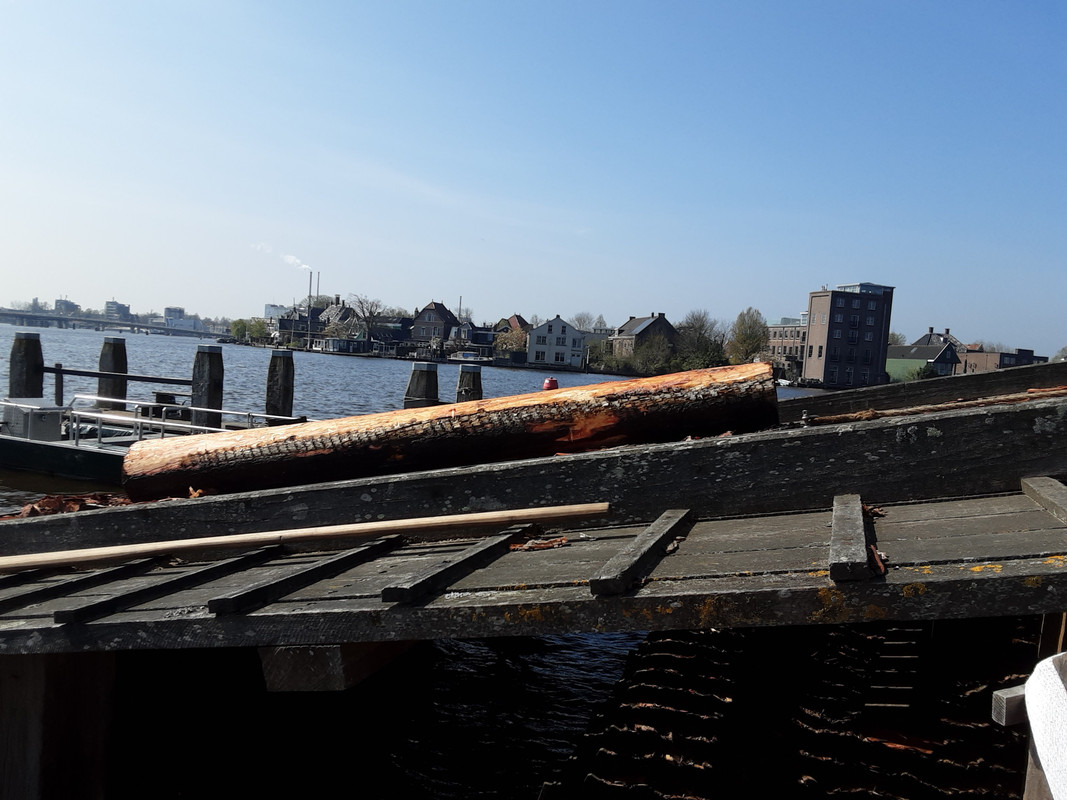
Prior to sawing, logs are stored in floating pens.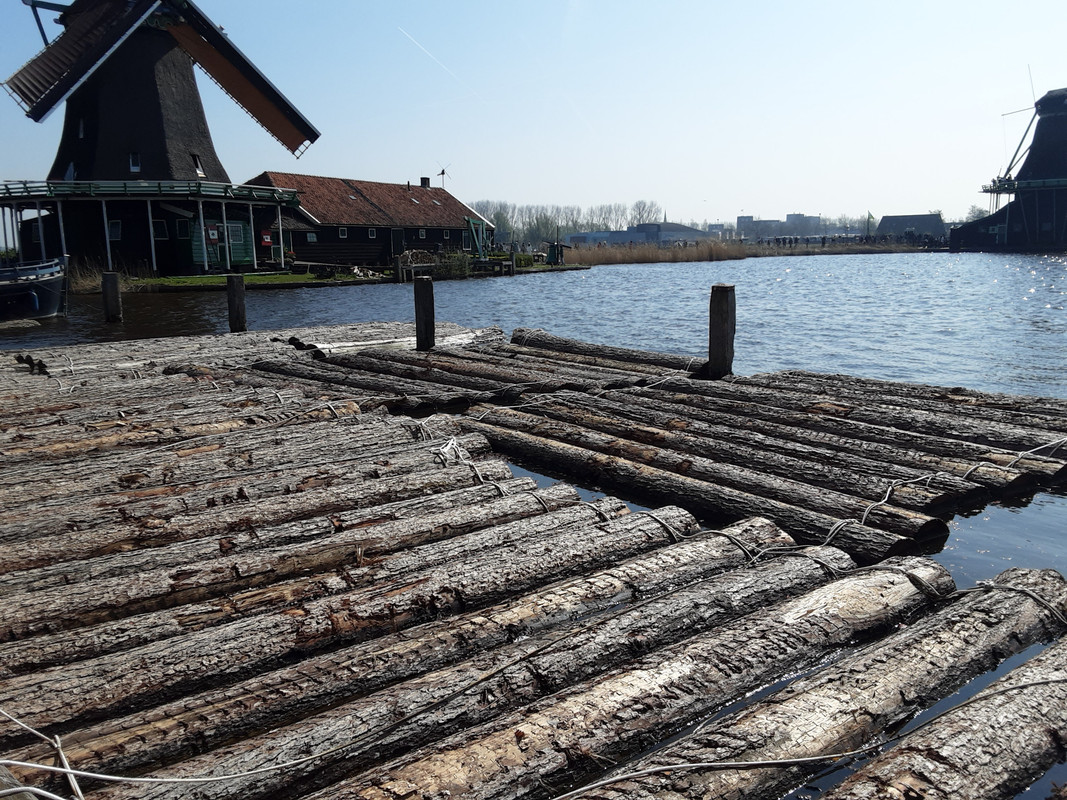
Each log is cut into boards. Several sawblades are mounted within a rack that slides up and down within a frame. This allows sawing to be driven by a crank that is driven by the mill downshaft using a bevel gear.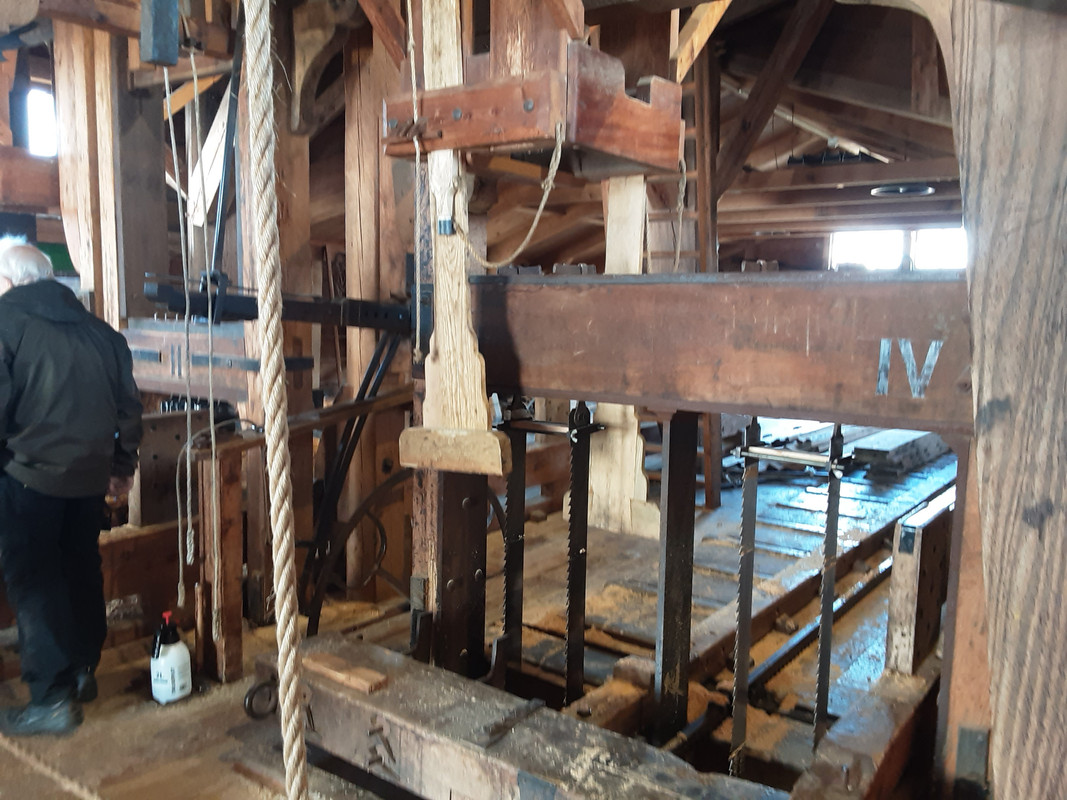
Here are the blades in action. The log is fed through the blades automatically. The miller told me that the saw blades will typically cut 2m per hour. The number of logs sawn can be varied by bringing additional racks online and offline. During strong winds, all three saw racks will be operating simultaneously.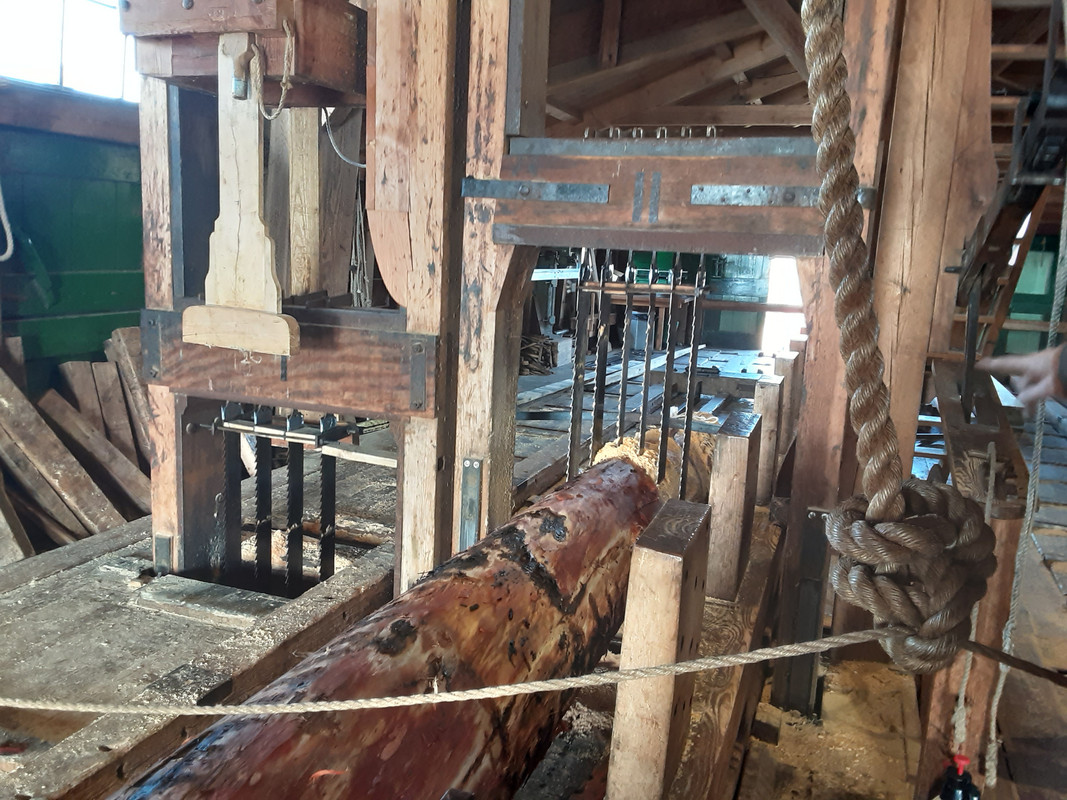
Sawdust drops into boxes beneath the mill floor.
An artistic rendition.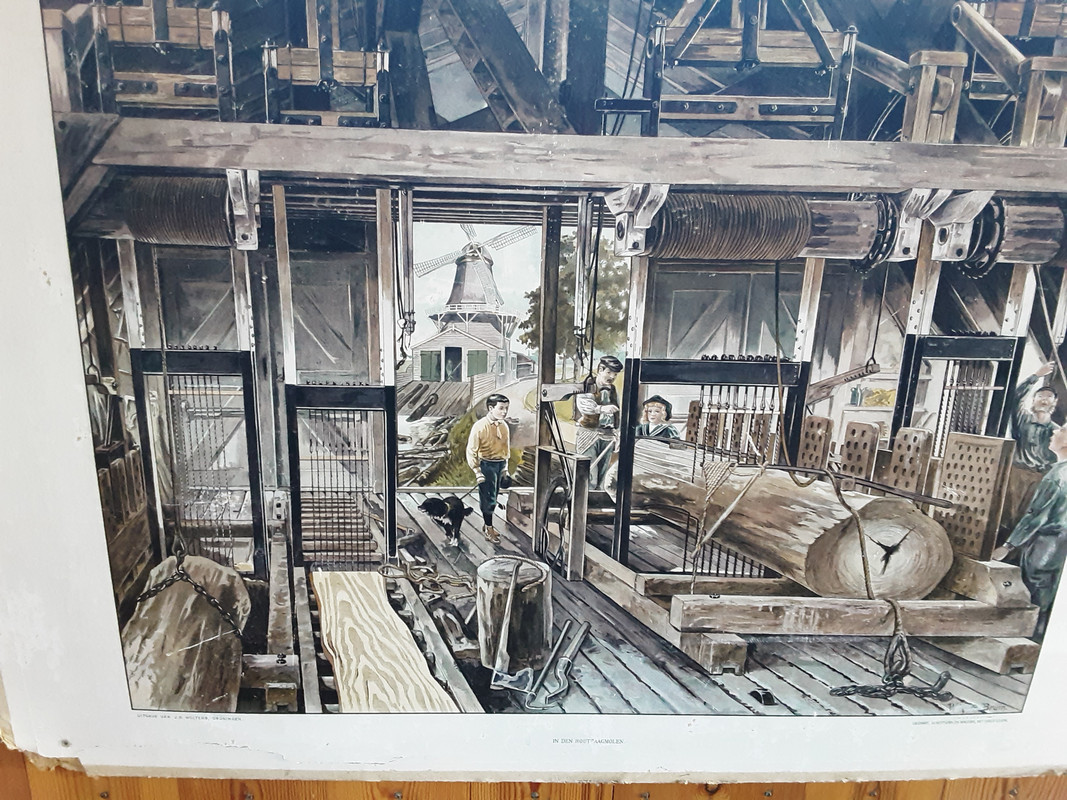
The finished boards exit the mill onto this table.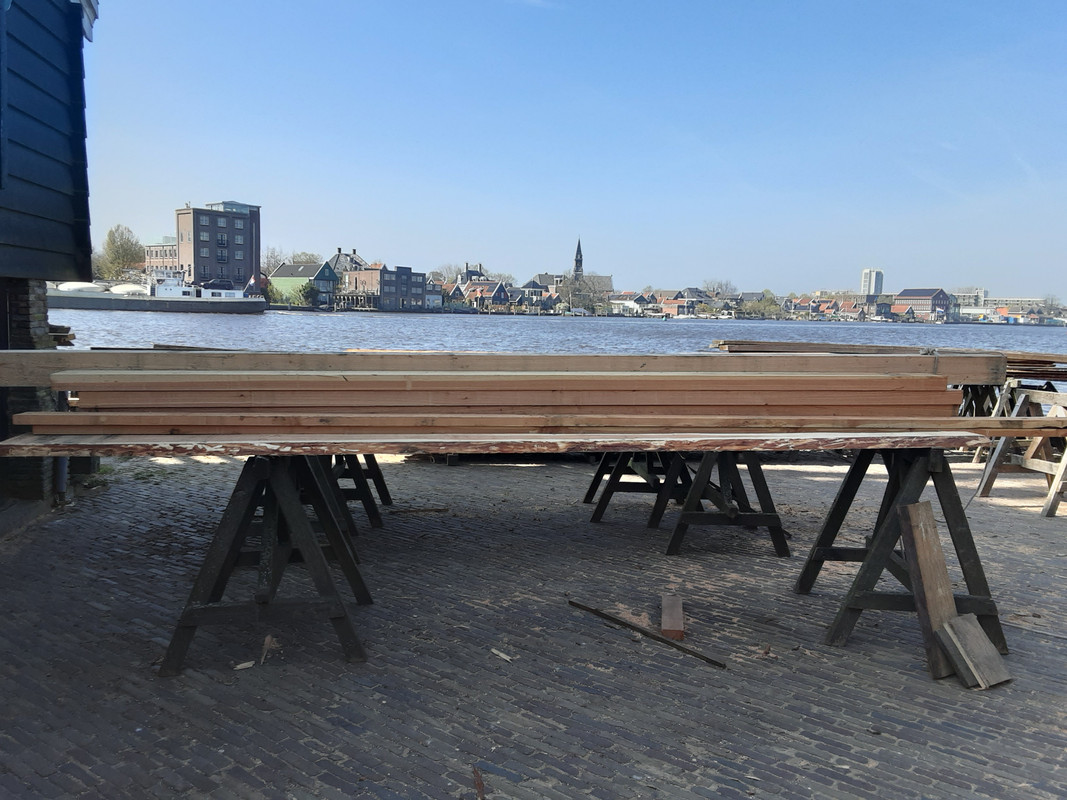
Finished product stored in a shed close to the mill. Here, it dries before finishing.
#197 Re: Not So Free Chat » Zaanse Schaanes Windmill Museum, Holland. » 2025-04-11 13:48:42
This is the paint mill 'De Kat'. The millstones grind coloured pigments.
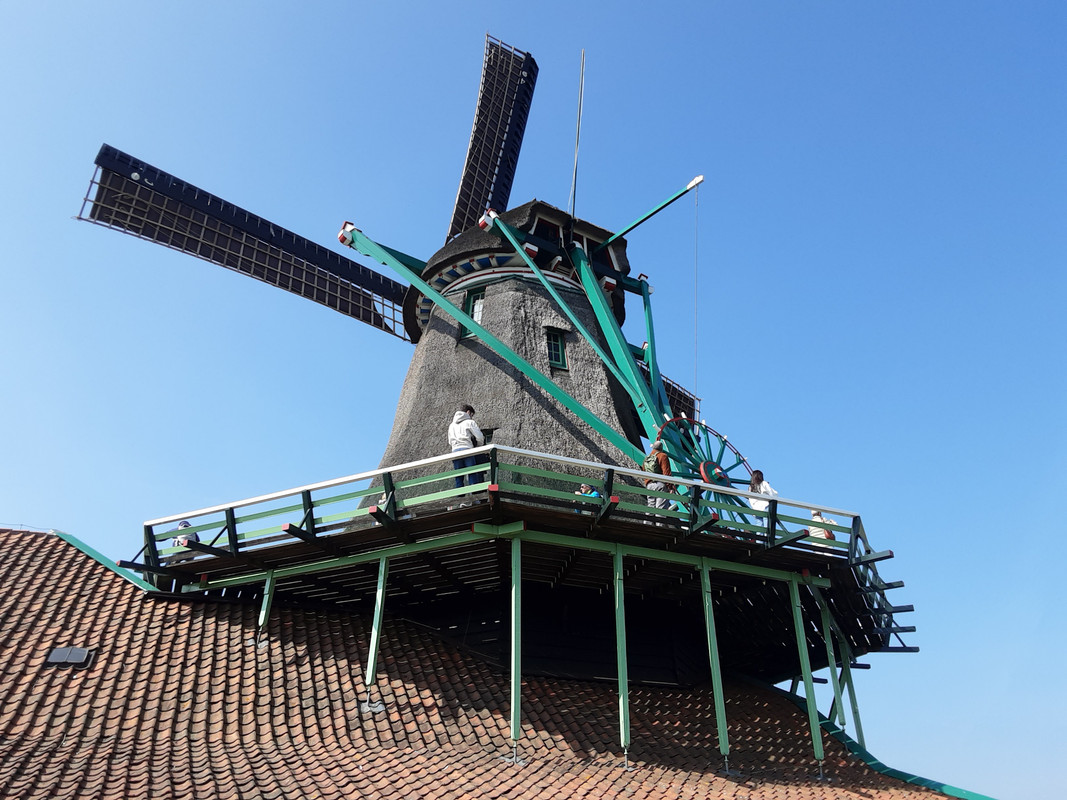
The millstone and table.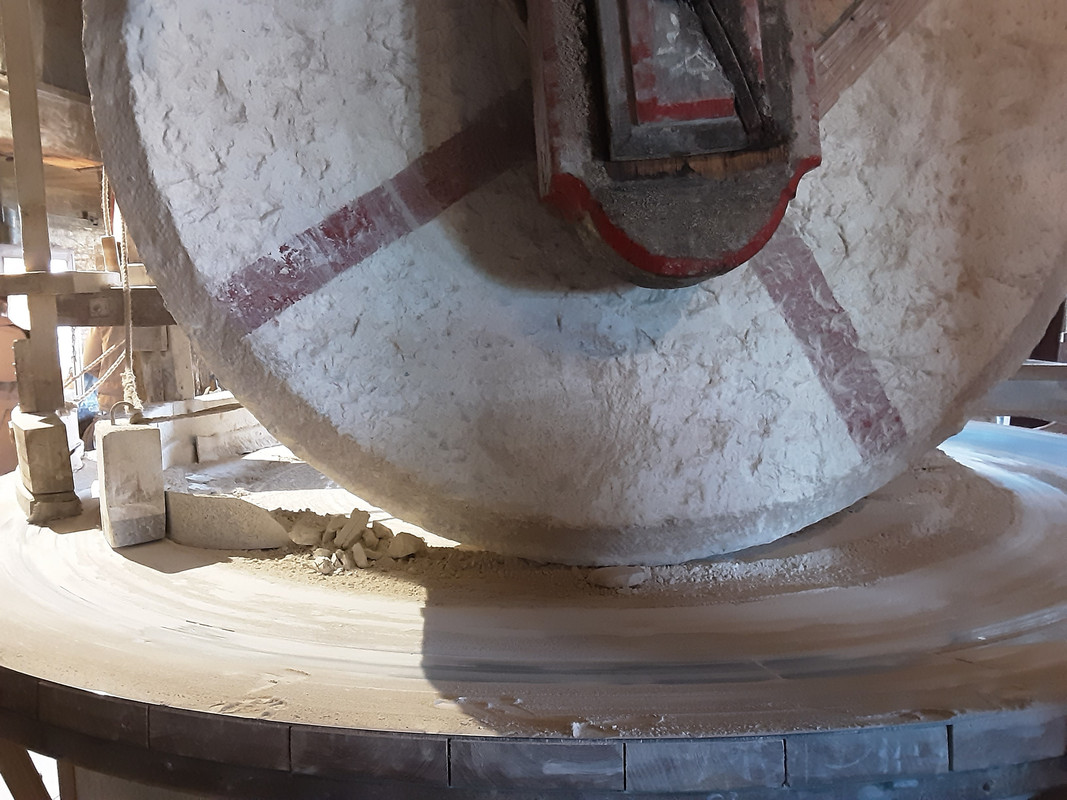
These wooden bevel gears connect the main downshaft to the horizontal shaft driving the grindwheels. I was surprised to see wooden gears. These were obsolete by the 19th century as friction within them can consume up to half of the mechanical power captured by the driveshaft.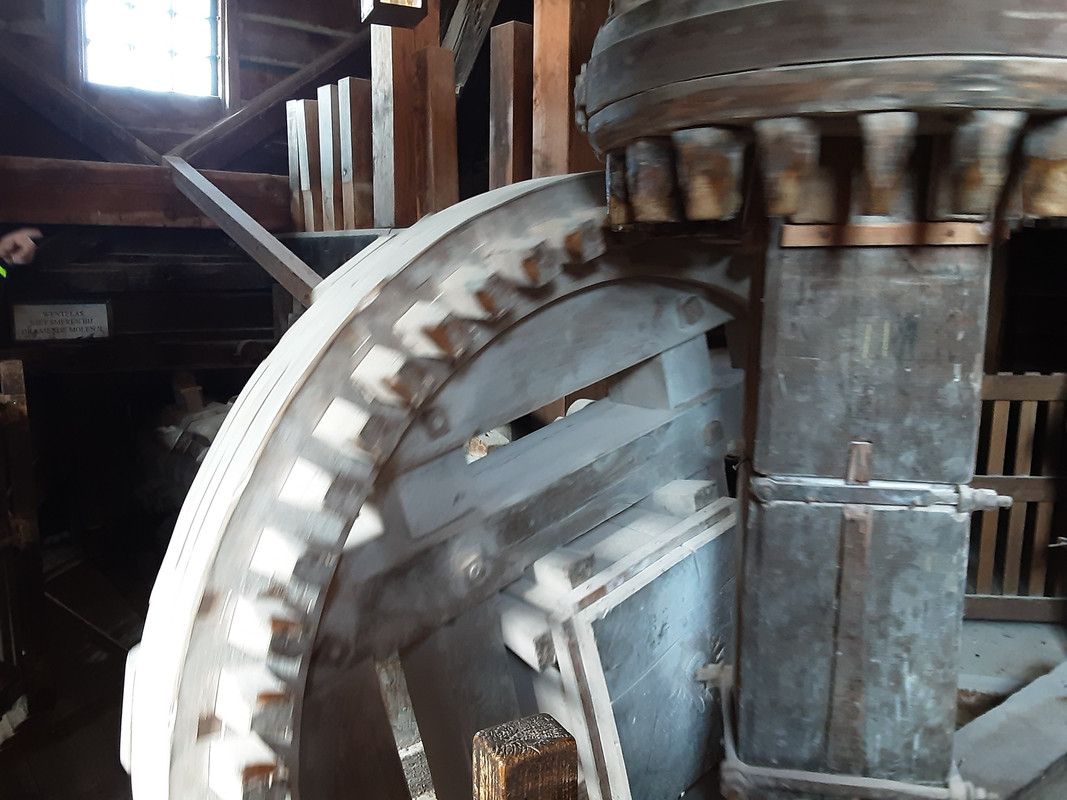
This wheel is located on the furling platform. It allows the mill to be steered into the wind. English mills of the same era use a fantail that automatically steers the mill into the wind. But this never caught on in Holland.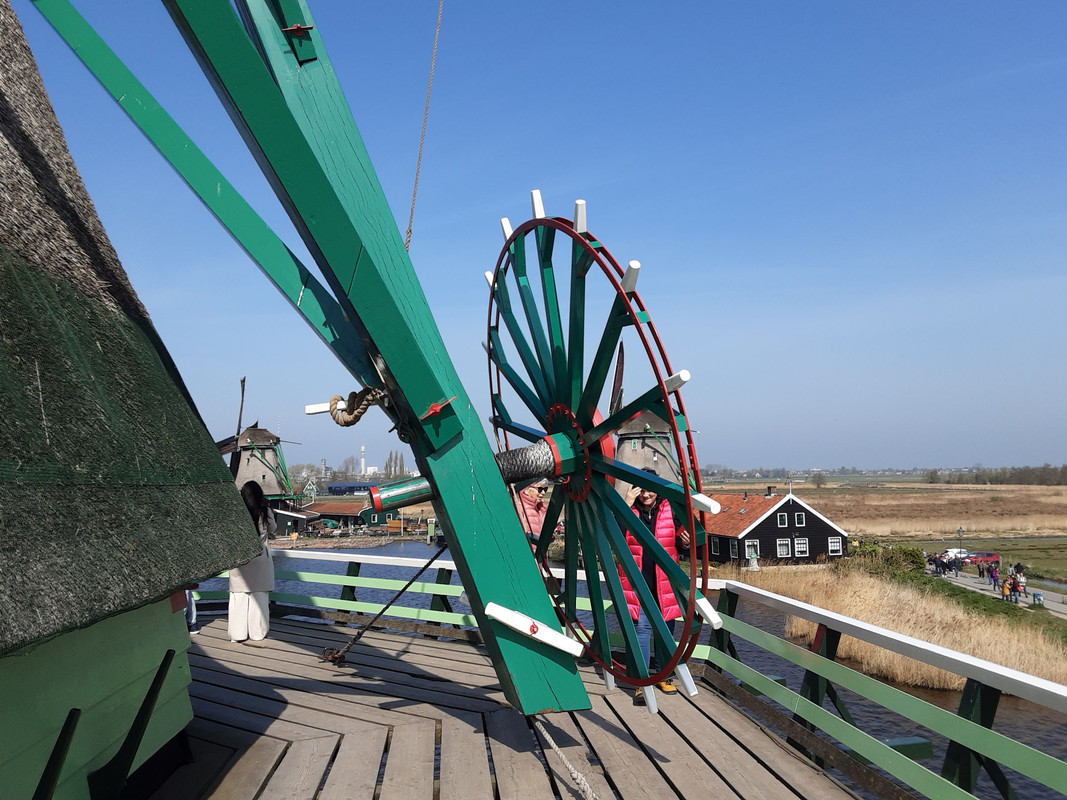
The view from the furling platform over the wetlands surrounding Zaanse Schaans. This landscape is typical of what I have seen in Holland. None of the land is more than a few feet above sealevel.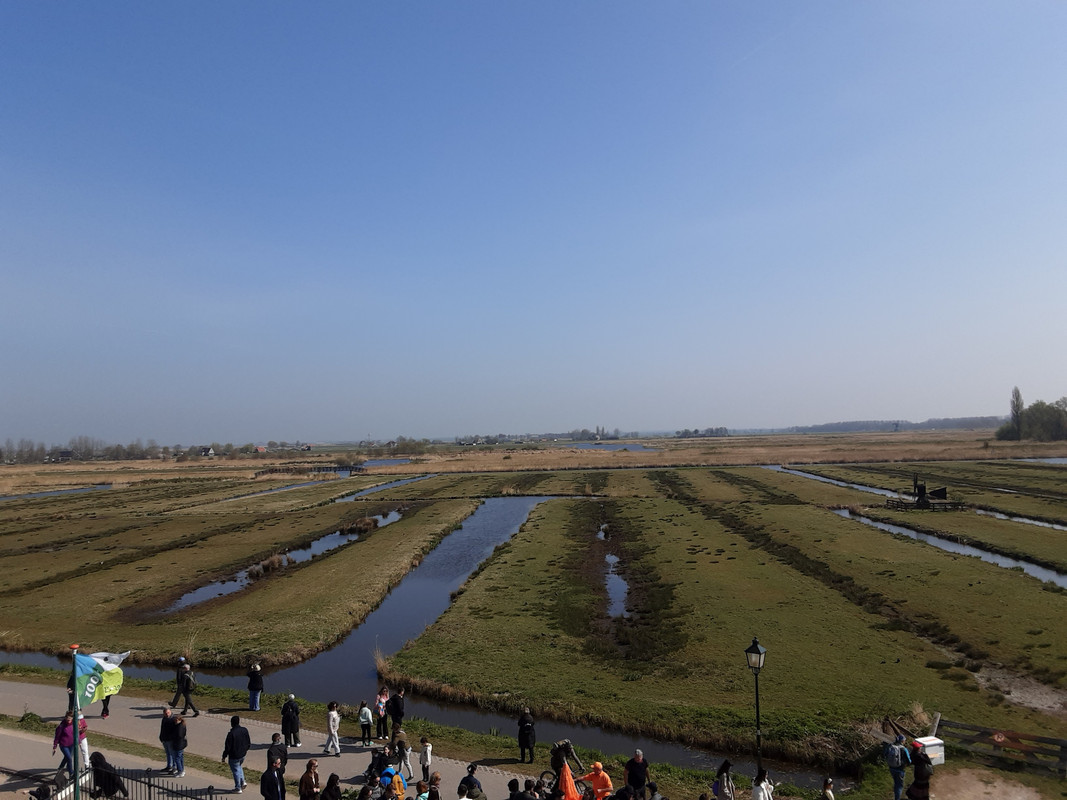
Tomorrow I will post images of the woodmill, which you can see here across the water.
#198 Re: Not So Free Chat » Zaanse Schaanes Windmill Museum, Holland. » 2025-04-11 13:40:52
This is a spice mill. It wasn't running today.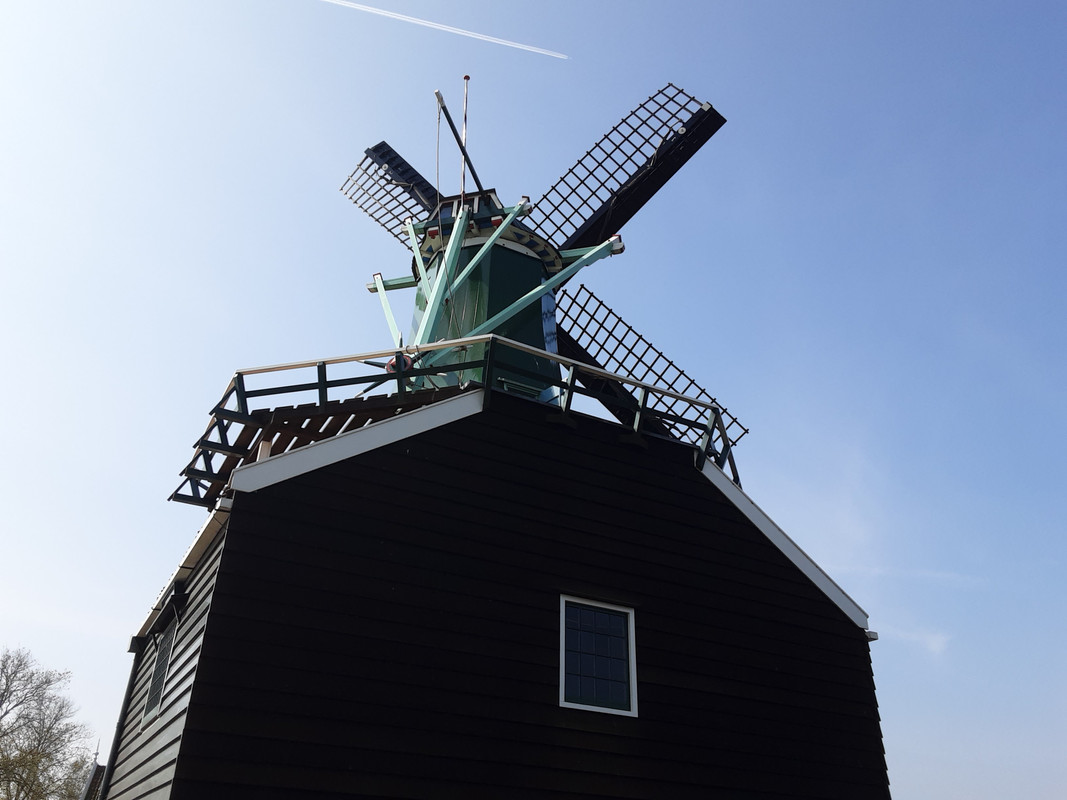
Here is a view of the interior.
Here is another view showing the millstones and table.
#199 Not So Free Chat » Zaanse Schaanes Windmill Museum, Holland. » 2025-04-11 13:26:35
- Calliban
- Replies: 6
Some pictures posted here.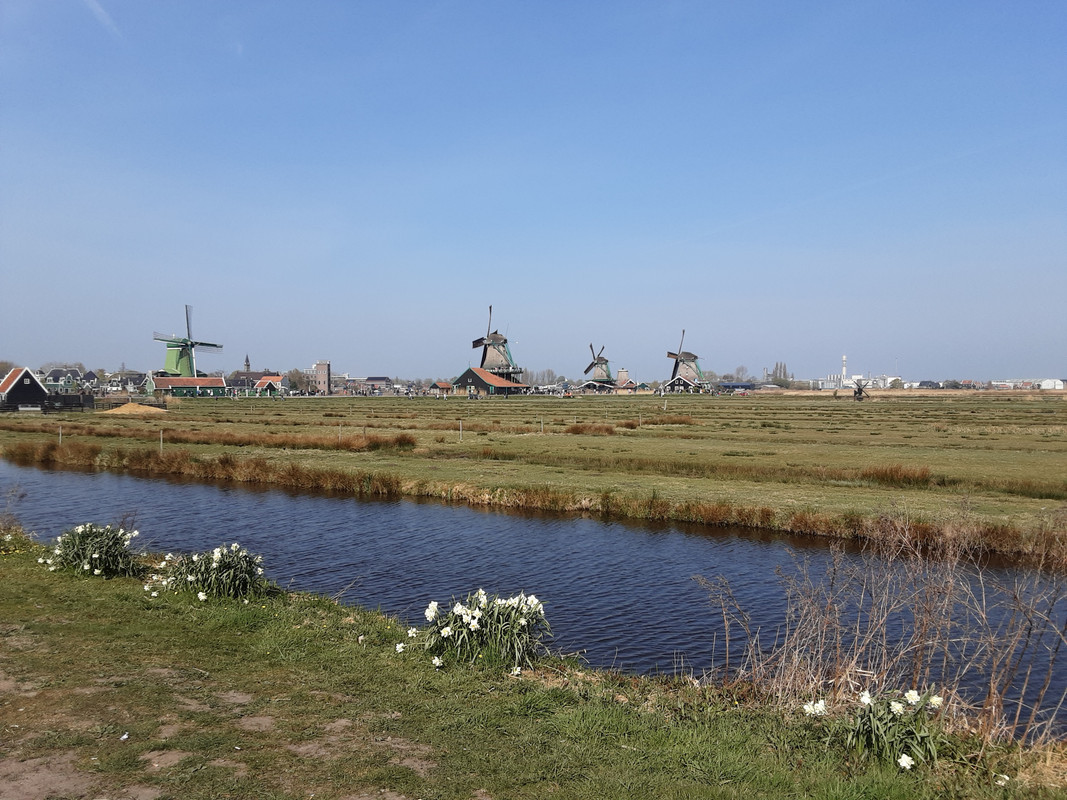
There were eight large windmills in this open air museum. Here are several of them from a distance.
#200 Re: Exploration to Settlement Creation » Habitat Design on Mars » 2025-04-10 13:04:53
Today is the third day of our Dutch sojourn. Yesterday, we visited Amsterdam and the Rijksmuseum. Today, we visited Gouda in South Holland. Tomorrow, we will visit the windmill museum at Zaanse Schaans. My wife wanted to visit the Van Gough museum. Unfortunately, it was fully booked. But the Rijksmuseum had enough to keep us interested for several hours. There was still plenty we didn't get to see.
Dutch cities are very compact. They seem to be experts at making efficient use of space. For centuries, the Netherlands has been one of the most densely populated nations on Earth, and the North Sea facing province of Holland was and is the most crowded part of it. Some 6.5 million people live on an area of 5000 square km. Houses are quite small and much of the population lives in apartments. Historically, the tax paid by a house was worked out according to its width facing the canal or road. Hence, older houses tend to be tall and thin. They also tend to be terraces, sharing walls with neighbouring houses.
The compactness of Dutch cities makes them easy to get around on foot or bike. It is also easy to travel between cities by train. There isn't nearly as much car traffic here per capita as there is in the UK. Many of the streets are too narrow to accomodate car traffic.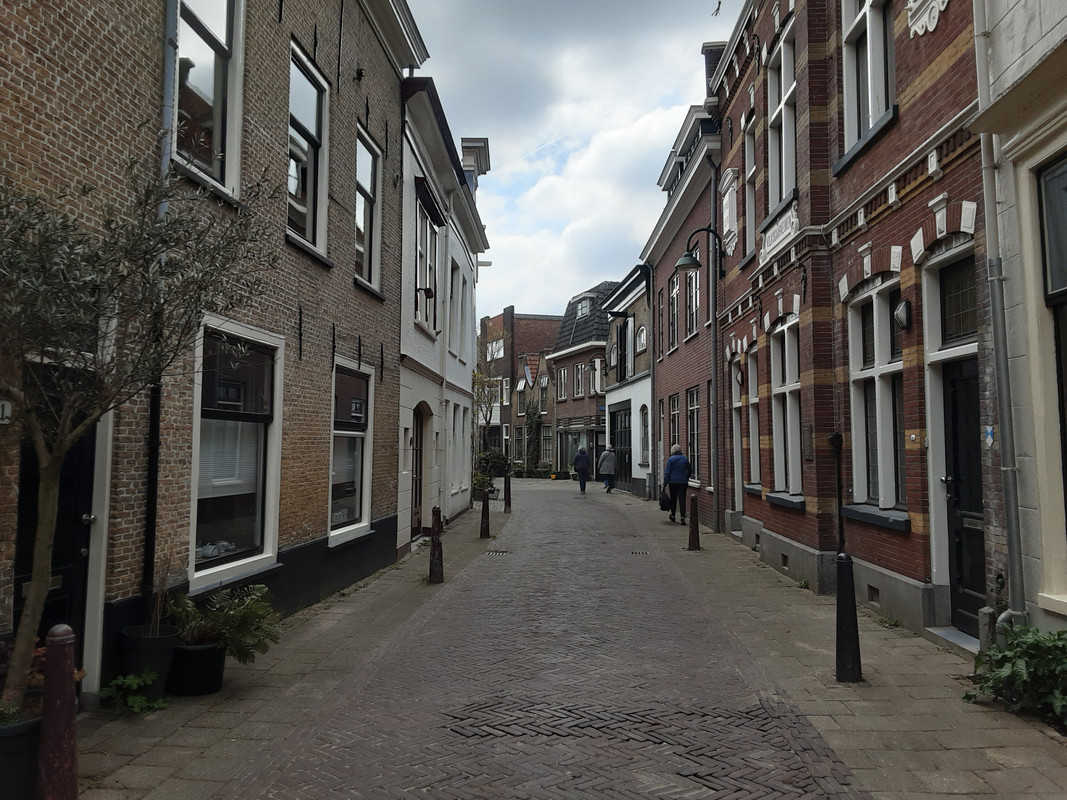
Walking around Amsterdam and Gouda, I began to think about how these cities could inspire how we build cities on Mars. For mental health reasons, it will be desirable to give people a sense of being in an open space. However, habitable land will be expensive. It is also desirable for urban areas to be small enough to walk around without need for motorised transportation.
Canals won't have much practical value for transportation in Martian settlements. However, bodies of water, whether they be canals or ponds, do have value as part of life support. Water absorbs all atmospheric gases, but carbon dioxide is more readily absorbed because it forms soluble carbonic acid in water. Bodies of standing water can therefore be used to scrub CO2 from the air. Water will also absorb excess heat from the habitat. So canals and ponds offer considerable value for life support within a habitat. If they are there, we may as well use them for inner city transportation as well.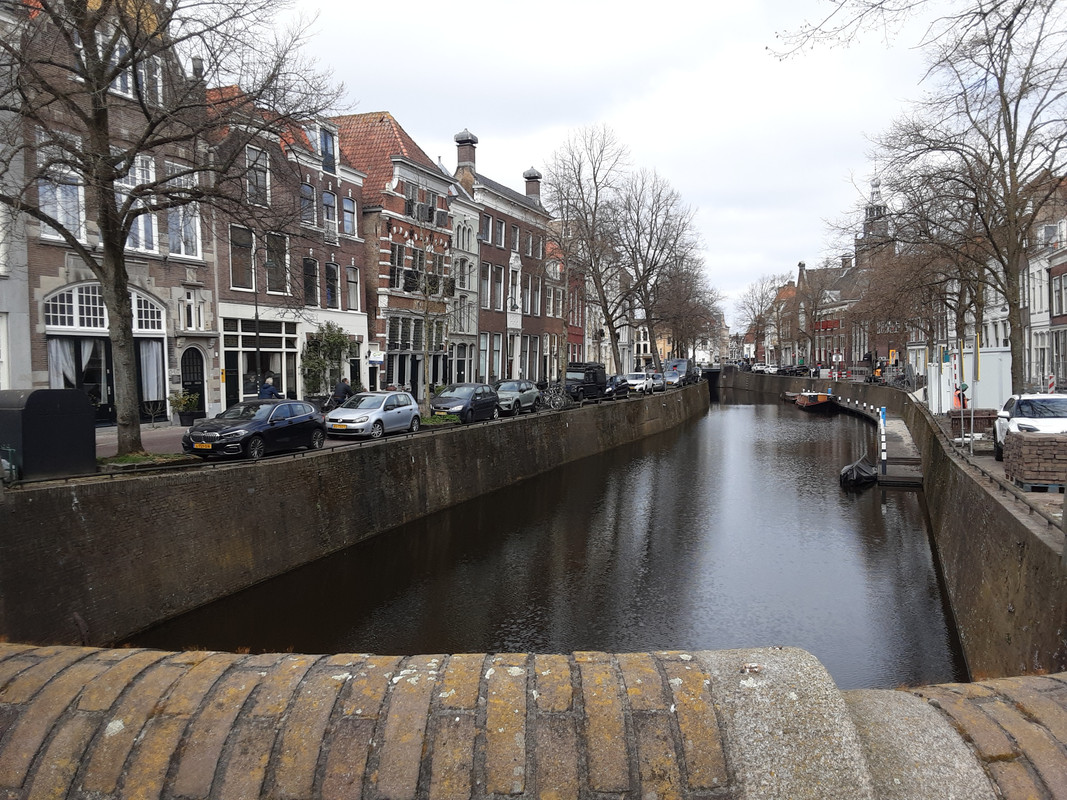
On Mars, we can produce habitable volumes by building a shallow concrete dome frame. We then cover this with coarse rocks and then several metres of compacted regolith. The area underneath can then be pressurised to 0.5 bar. Given the cost of building the frame, the habitable volume created will need to be used efficiently. Hence, streets will be narrow and buildings will stretch most of the way to the roof. There would remain enough space for small parks, trees and grassy areas. As the structures will never be exposed to precipitation, we can make use of flat roof space for plants, sitting areas and open air restaurants, provided that weight is carefully controlled. The underside of the dome would likely be covered with glass with LED lamps mounted between the ceiling and glass. This would allow a natural sky to be simulated.
Many supporting buildings can be located outside of the habitat and simply covered in regolith. Only living space that people are going to spend a lot of time in would need to provide a simulated natural sky.